John and Mary Kormendy House Birds (Texas)
From Spring 2000 until Summer 2022, we lived near Dripping Springs in the hill country of Texas. There are fewer bird species there than in the flatlands east of Austin. Nevertheless, over 22 years, our house list has grew to 125 species seen plus two more that we only heard. We updated these web pages a lot in 2020, when Covid-19 restrictions kept us at the house for almost the whole year. Being here and paying attention, we saw more birds in 2020 than we saw in more than a decade. We also added some lower-quality pictures so that we can show as many species as possible -- 64 of 125 species seen, effective 2020 Decembe 20.In 2022, we sold the house and moved to the Westminster retirement community in downtown Austin. One last update to this site remains to be made; then it will be finished forever.
We start out of taxonomic order with the iconic Greater roadrunner. Some mammals are shown at the end.
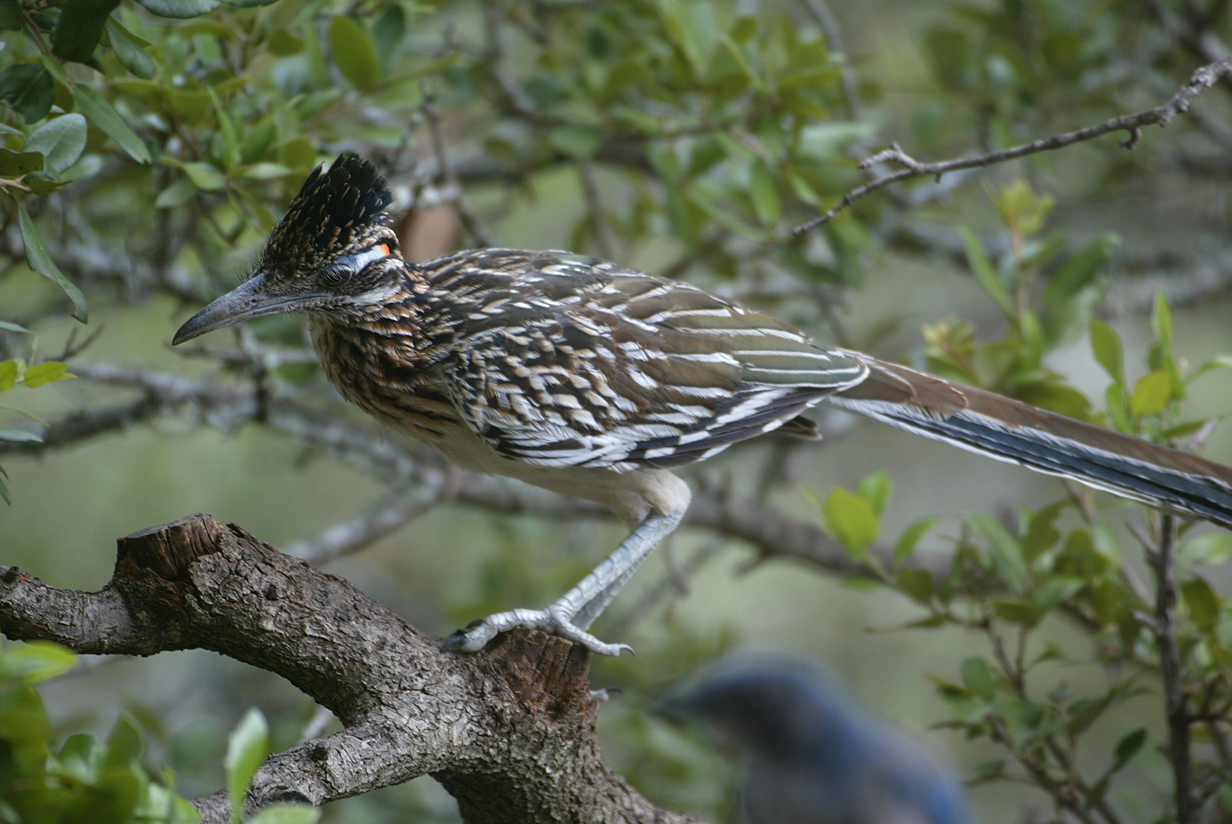
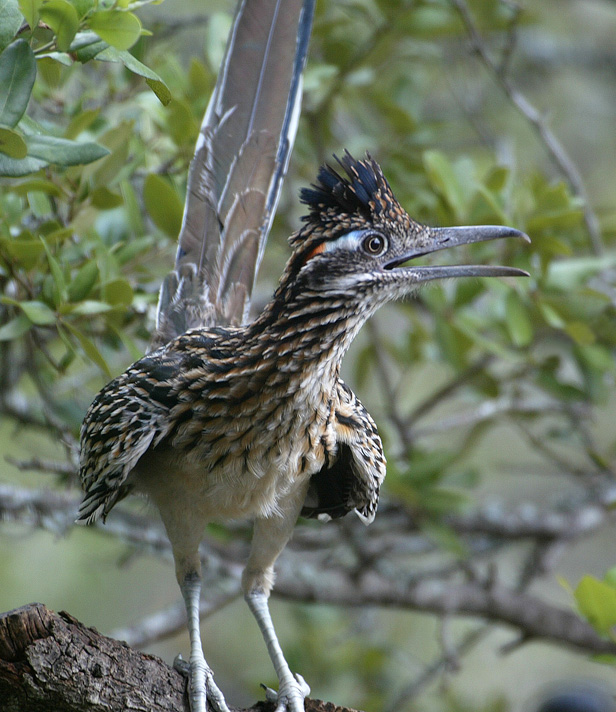
Greater roadrunner (breeding resident)
Mary once saw a roadrunner jump off of the roof of our house and over her head to catch and eat a Black-chinned hummingbird. It's a jungle out there!
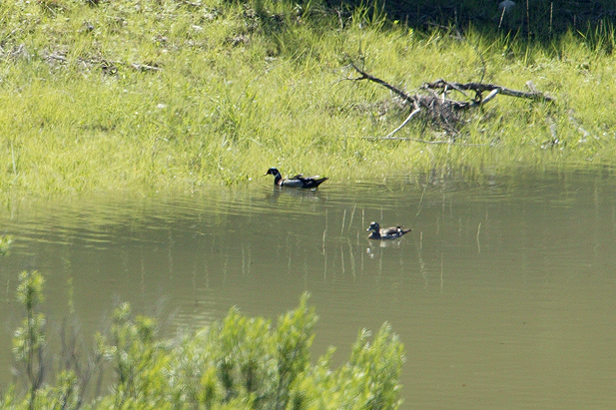
Wood ducks (seen once in our pond)
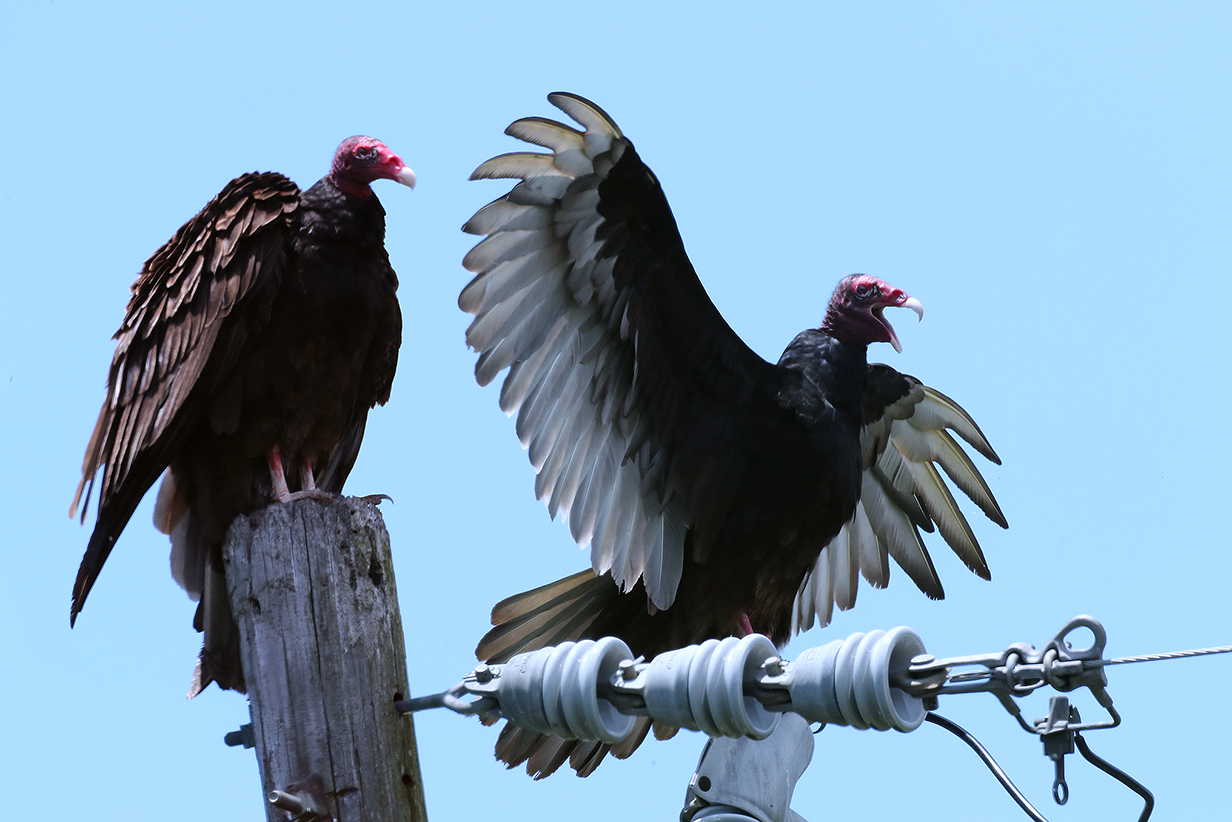
Turkey vultures are common in summer but winter in Mexico.

Black vultures have taken to sitting on our upstairs deck in winter. Often a mated pair come; it is curously touching to see these not-quite-lovely birds snuggle with each other. Vultures are among the few birds that are thriving because of people (specifically: roadkill).
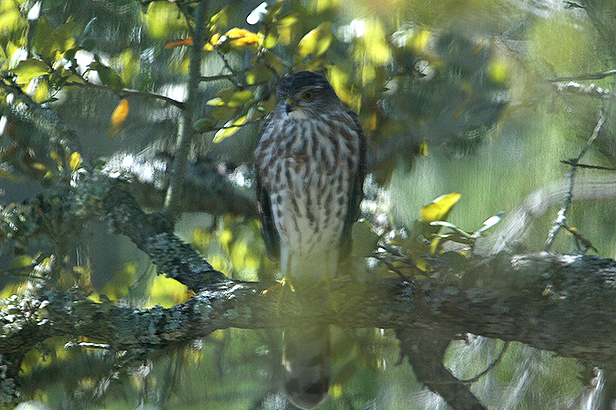
Cooper's hawk pass though occasionally on migration. This one is from March 2003.

Sharp-shinned hawk (regular spring migrant)
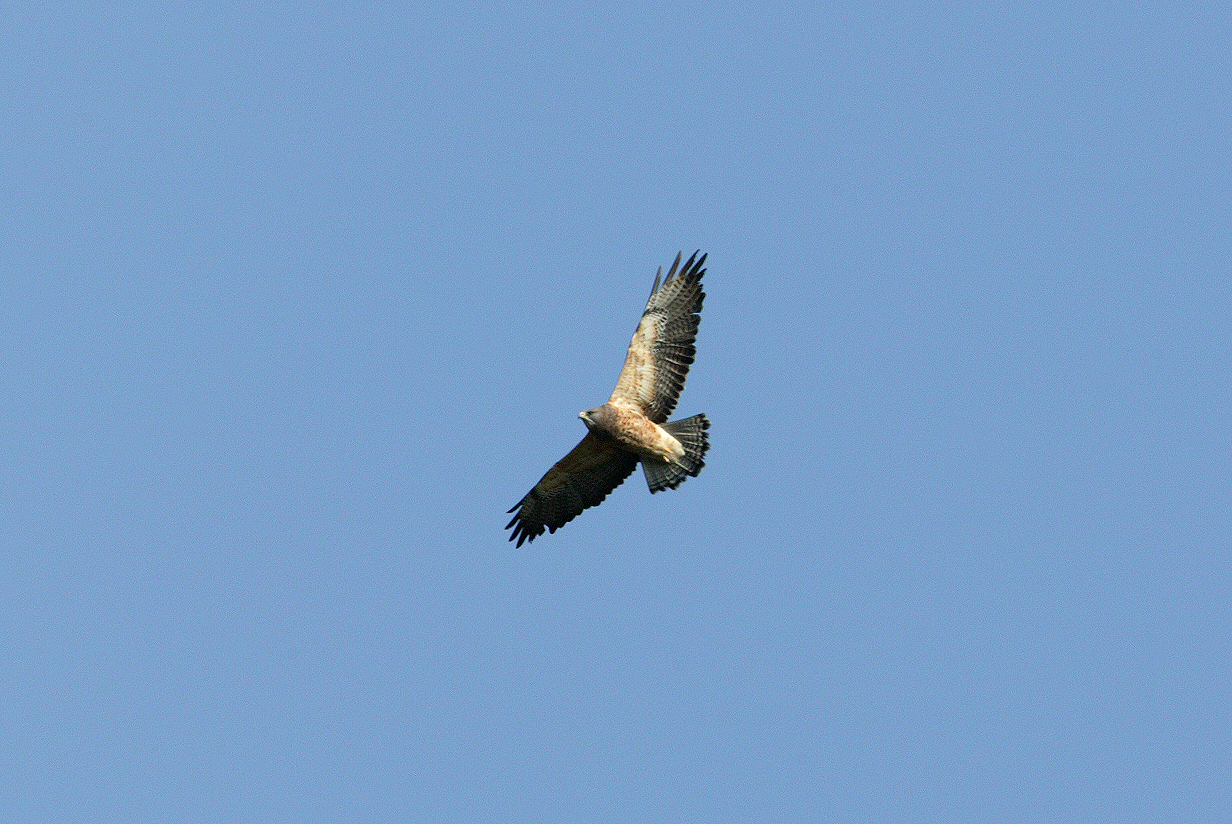
Swainson's hawk (regular spring migrant)
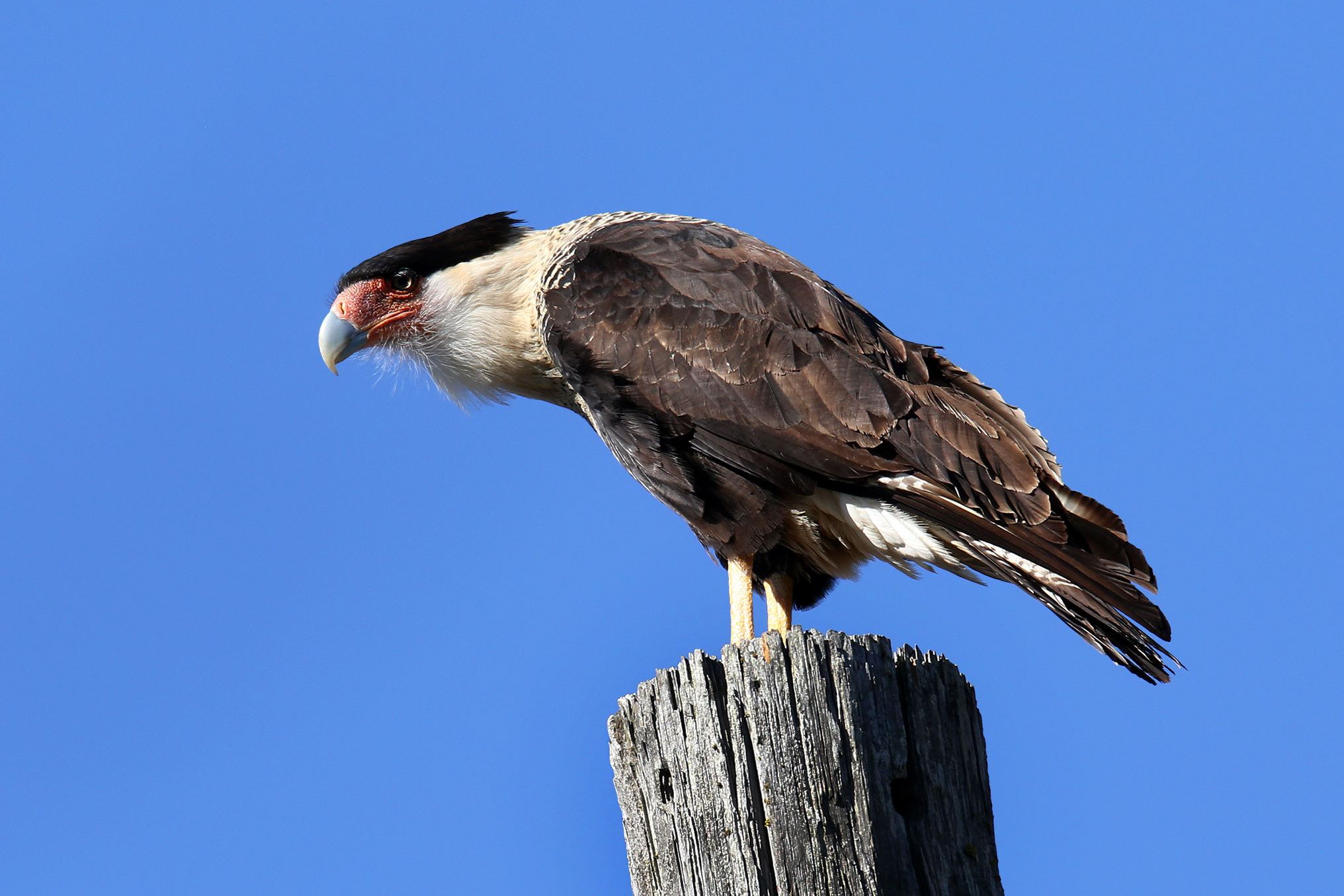
Crested caracara (Seen Dec. 20, 2020 for the second time in 21 years. Also elsewhere in Texas plus Brazil and Ecuador.)

Mourning dove (former breeding resident, rare by 2020)
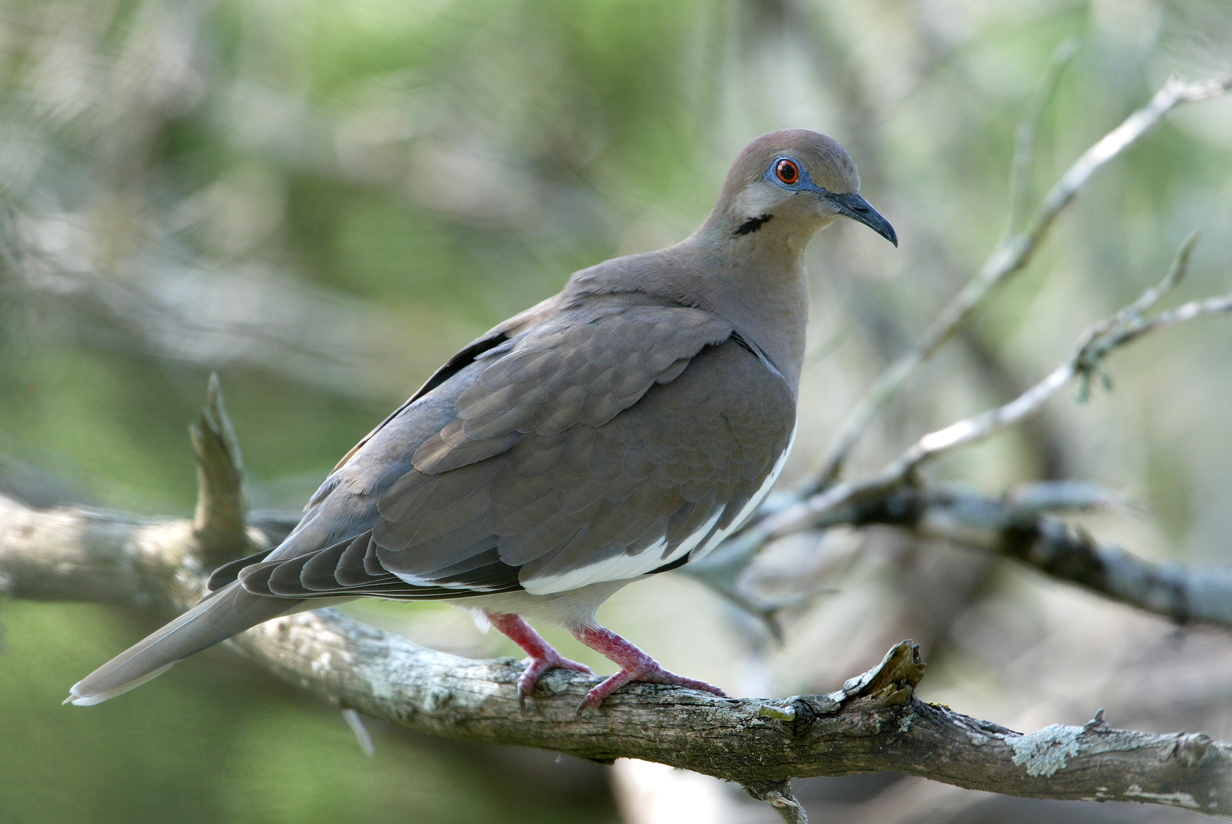
White-winged dove (breeding resident with sharply increasing population)
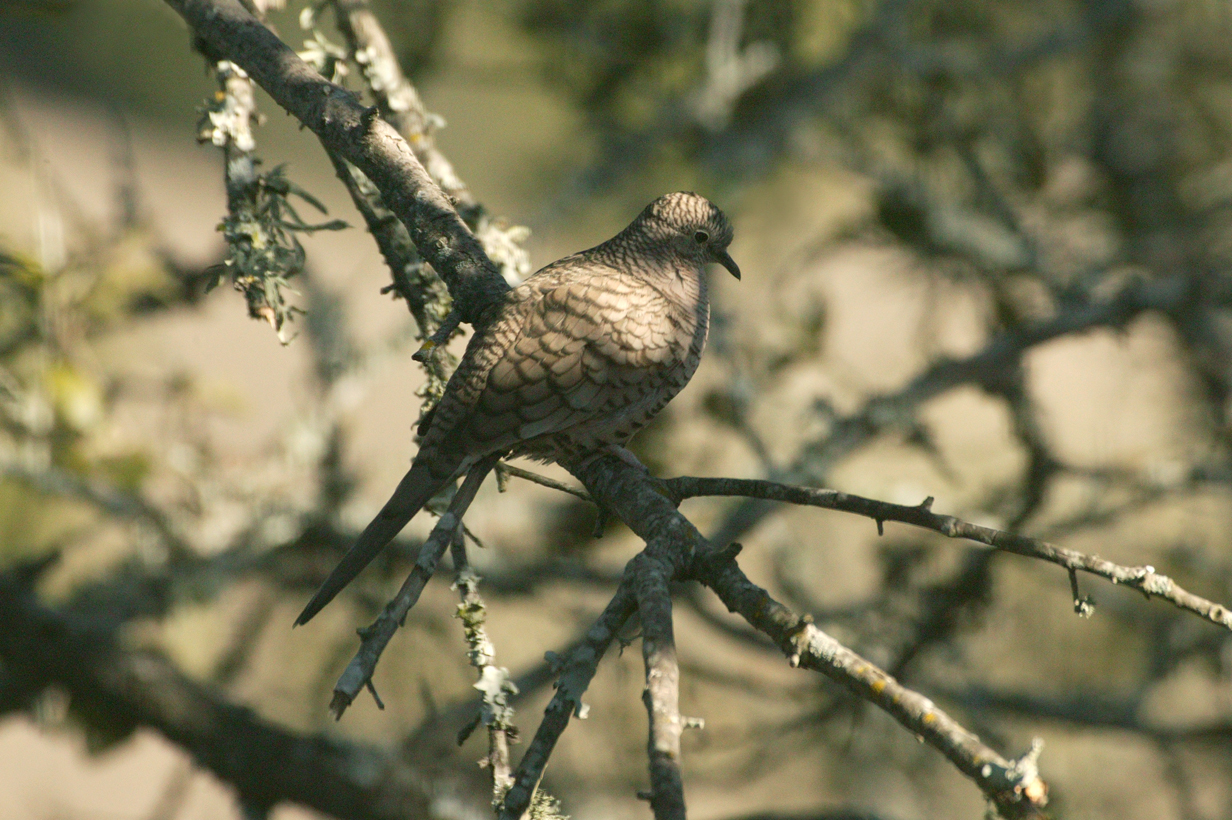
Inca dove (former breeding resident, vanishingly rare by 2020)
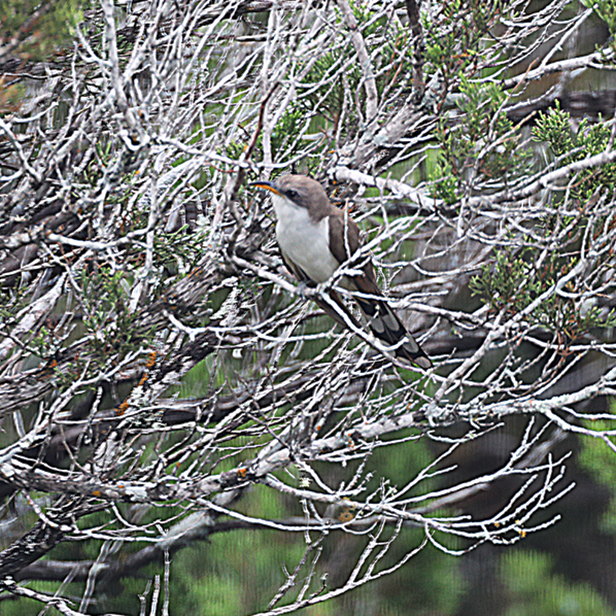
Yellow-billed cuckoo have shown up at least three times; this was on June 24, 2020. It's a bad picture, but the bird never came close and stayed visible for only a few seconds.
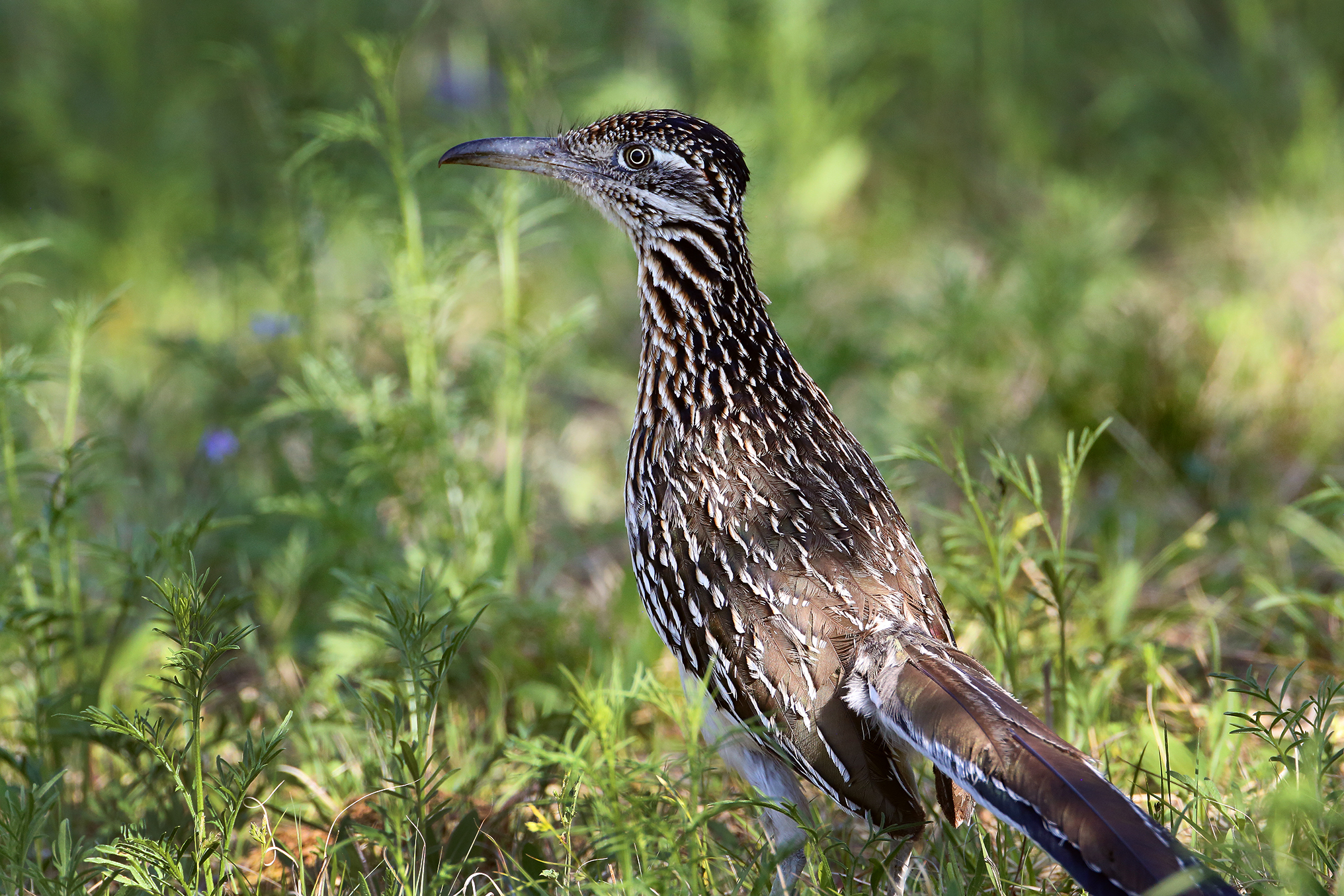
Greater roadrunner (on our front lawn, 2021 April 12)
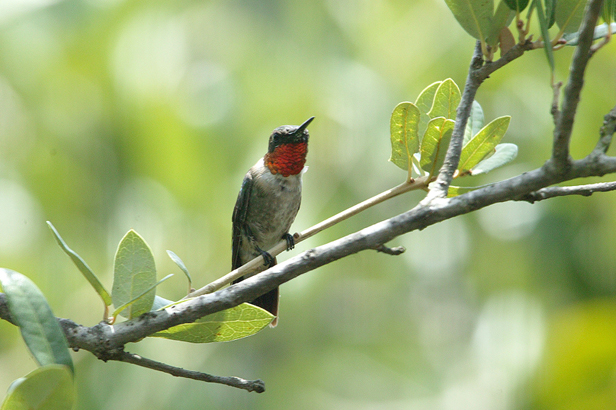
Ruby-throated hummingbird (spring and fall migrant; in recent years, also a breeding summer resident)
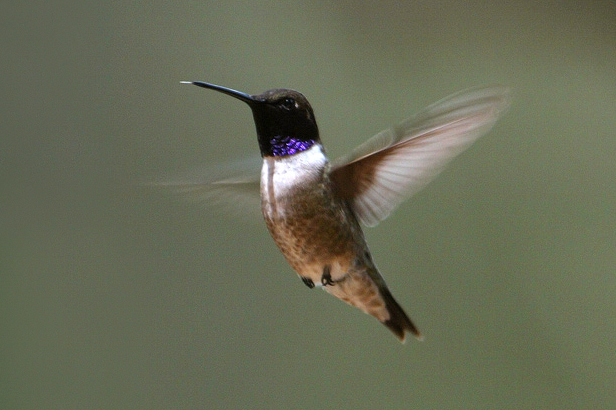
Black-chinned hummingbird (breeding summer resident)
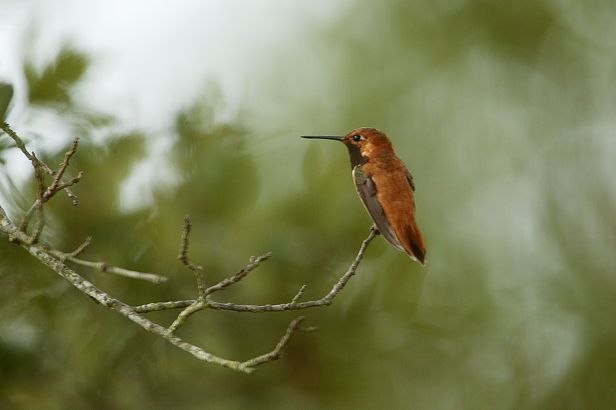
Rufous hummingbird (occasional spring and fall migrant or even winter resident)
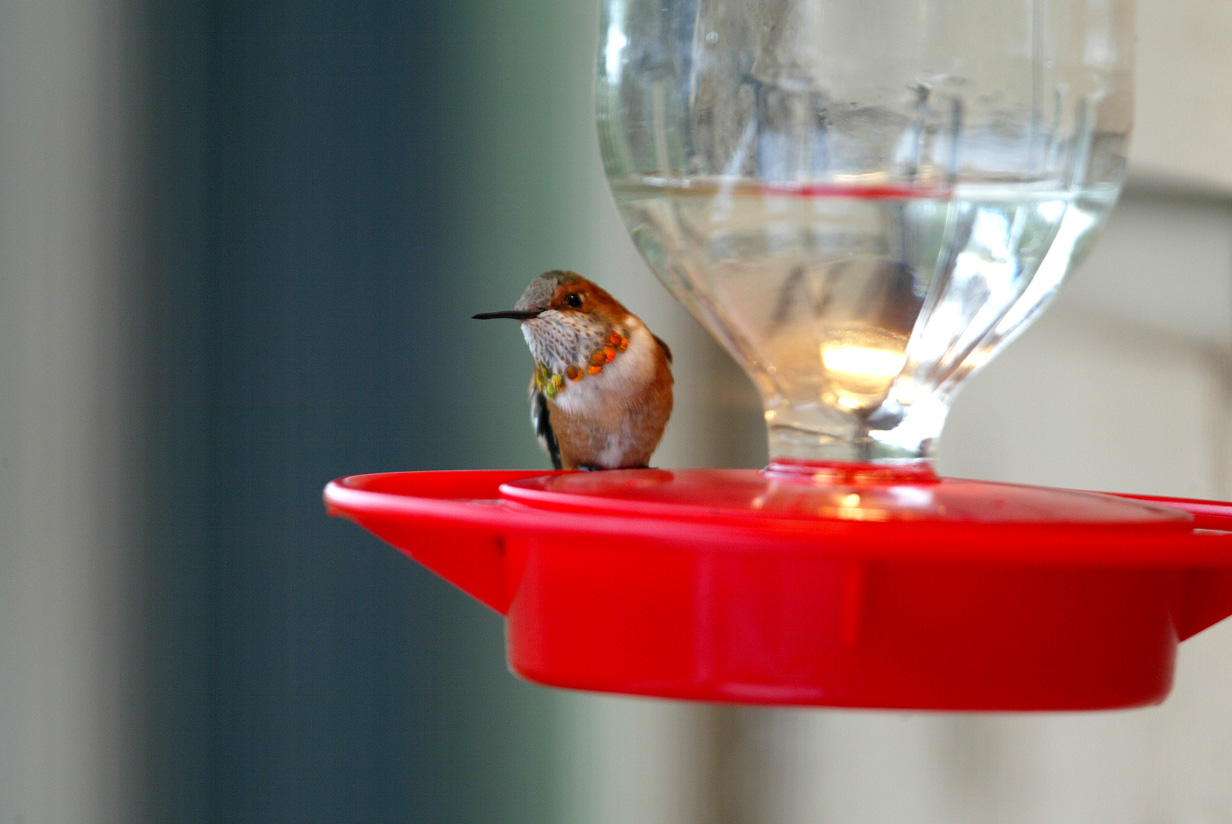
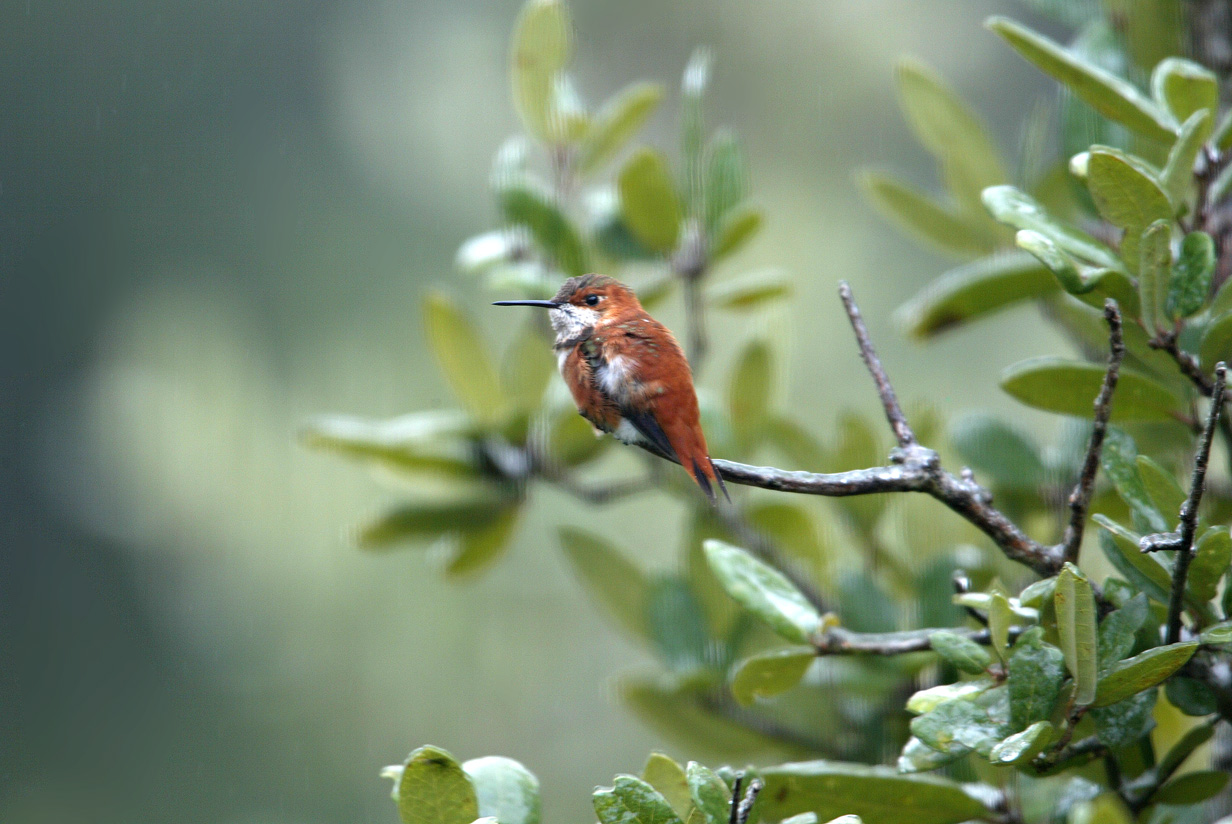
Rufous hummingbird (This juvenile -- and eventually adult -- male overwintered at our house for 3 years.)
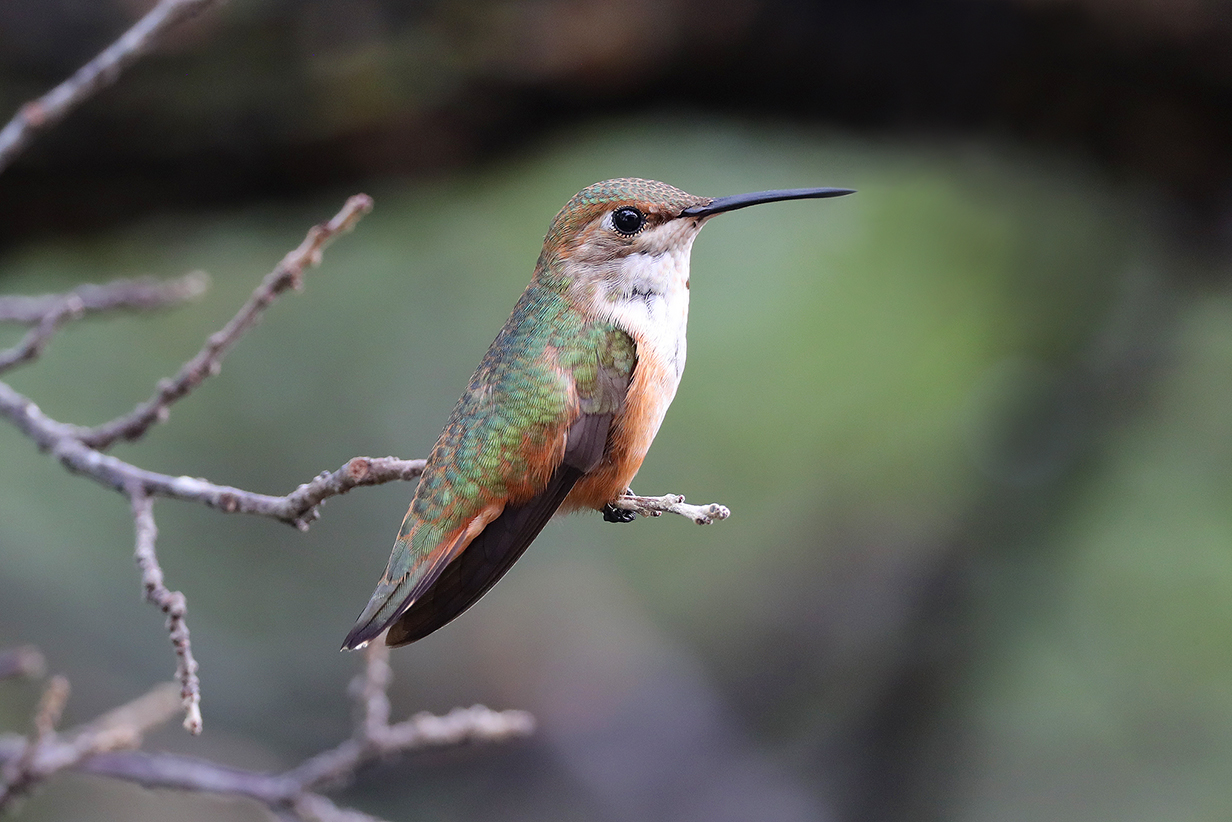
Rufous hummingbird (This female showed up on migration on September 5, 2020 and stayed for several days, the first Rufous that we have seen at the house in many years.)

Golden-fronted woodpecker (male) (breeding resident)
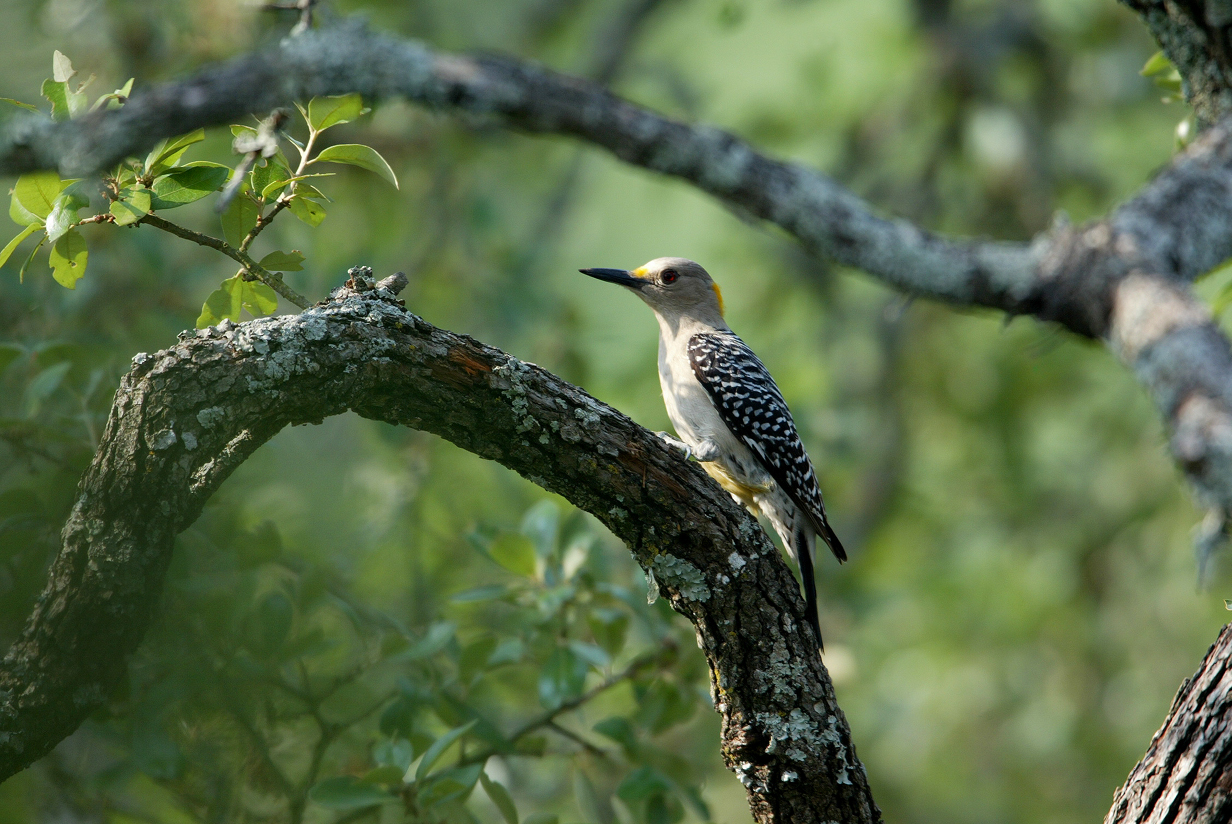
Golden-fronted woodpecker (female) (breeding resident)
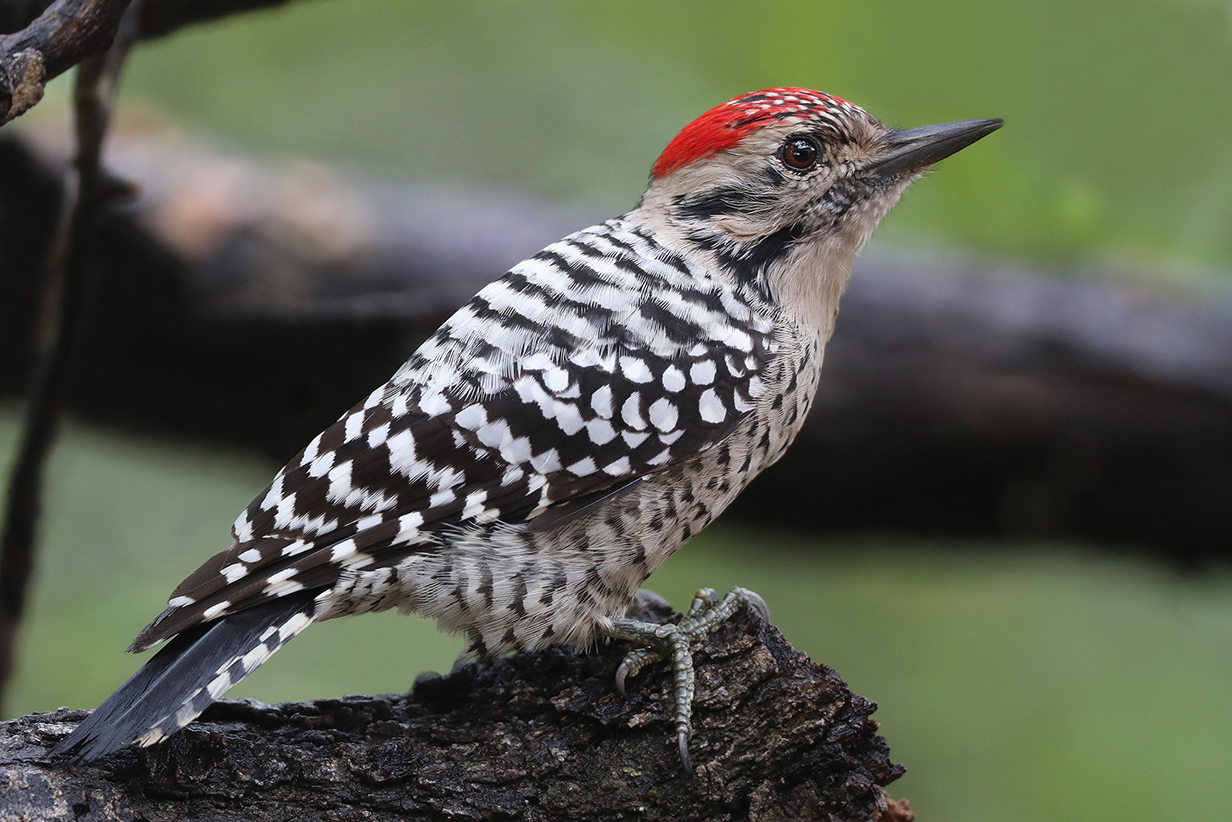
Ladder-backed woodpecker (male) (breeding resident -- several families produced a lot of young in 2020)
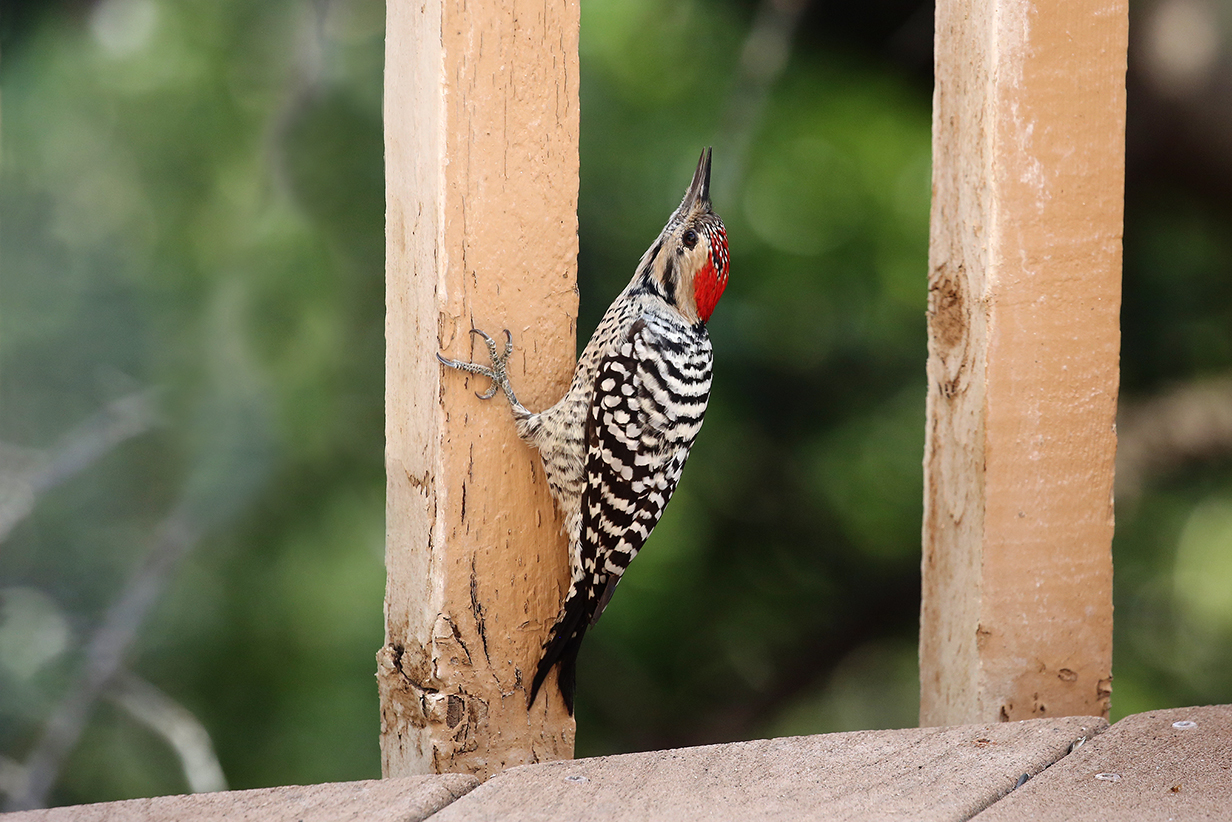
Ladder-backed woodpecker (male) (When woodpeckers start to hunt for bugs on your deck railing, it is time to consider maintenance.)
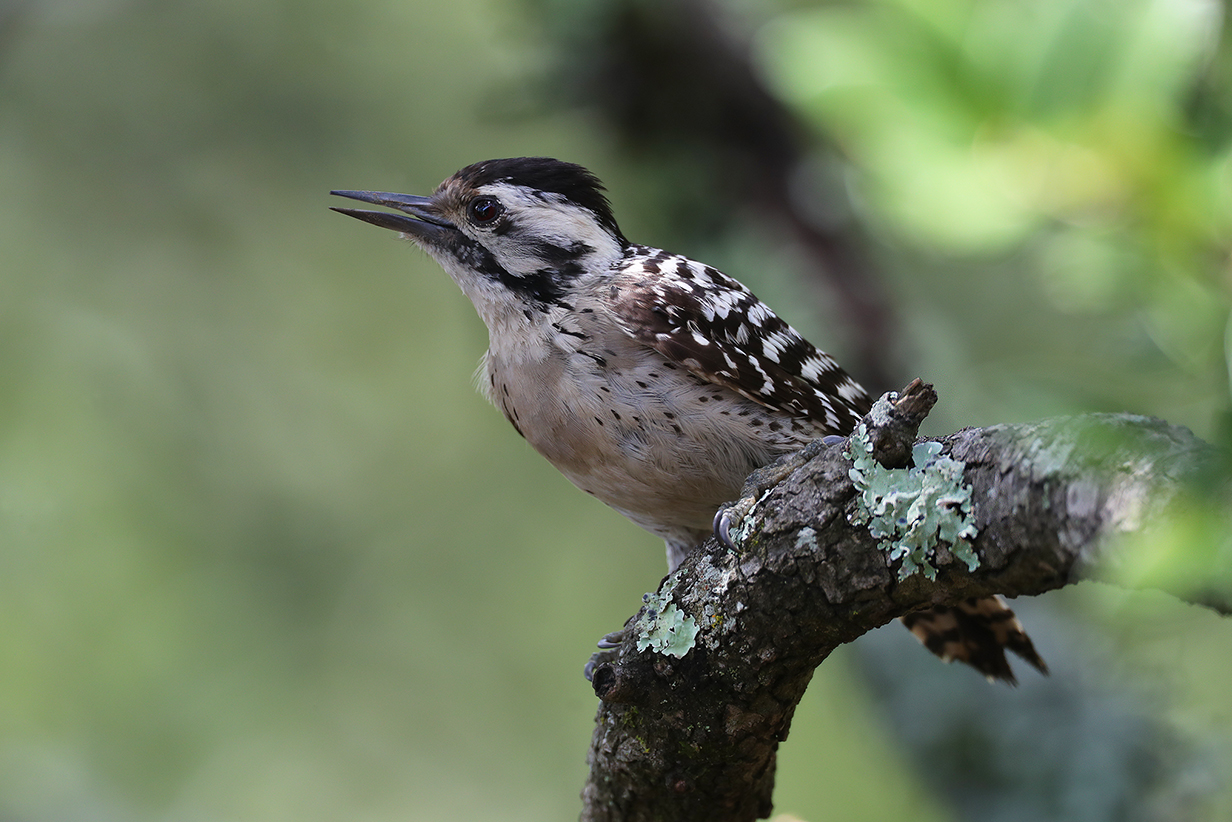
Ladder-backed woodpecker (young female) (All breeding residents had a great year in 2020.)
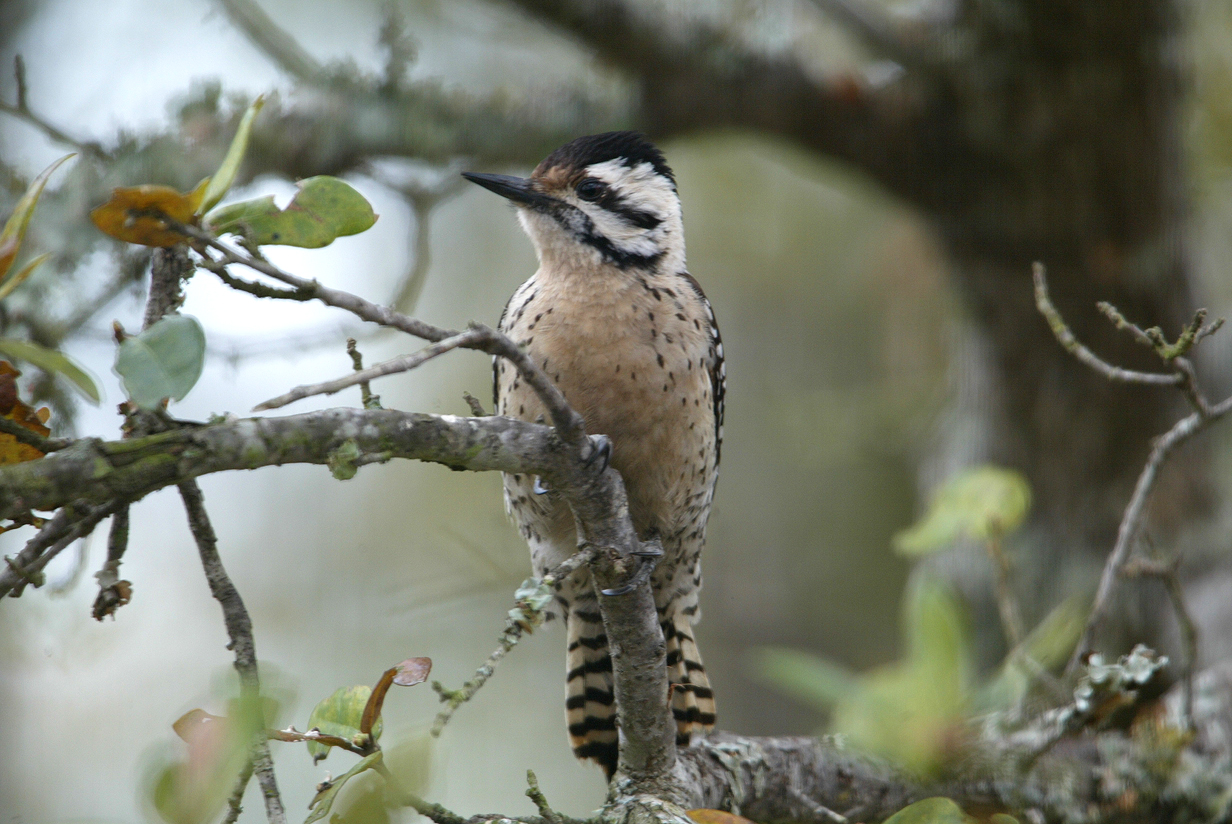
Ladder-backed woodpecker (female)
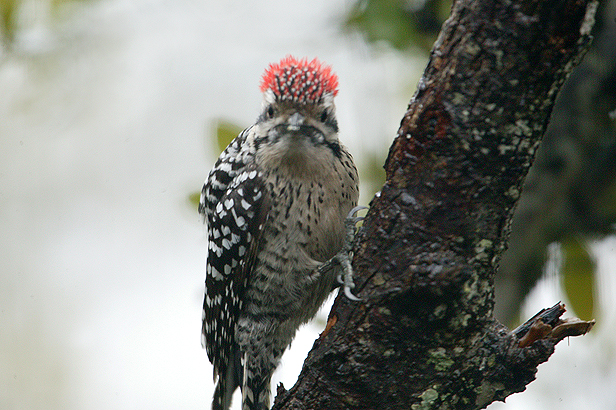
Ladder-backed woodpecker (male)
Bad hair day!
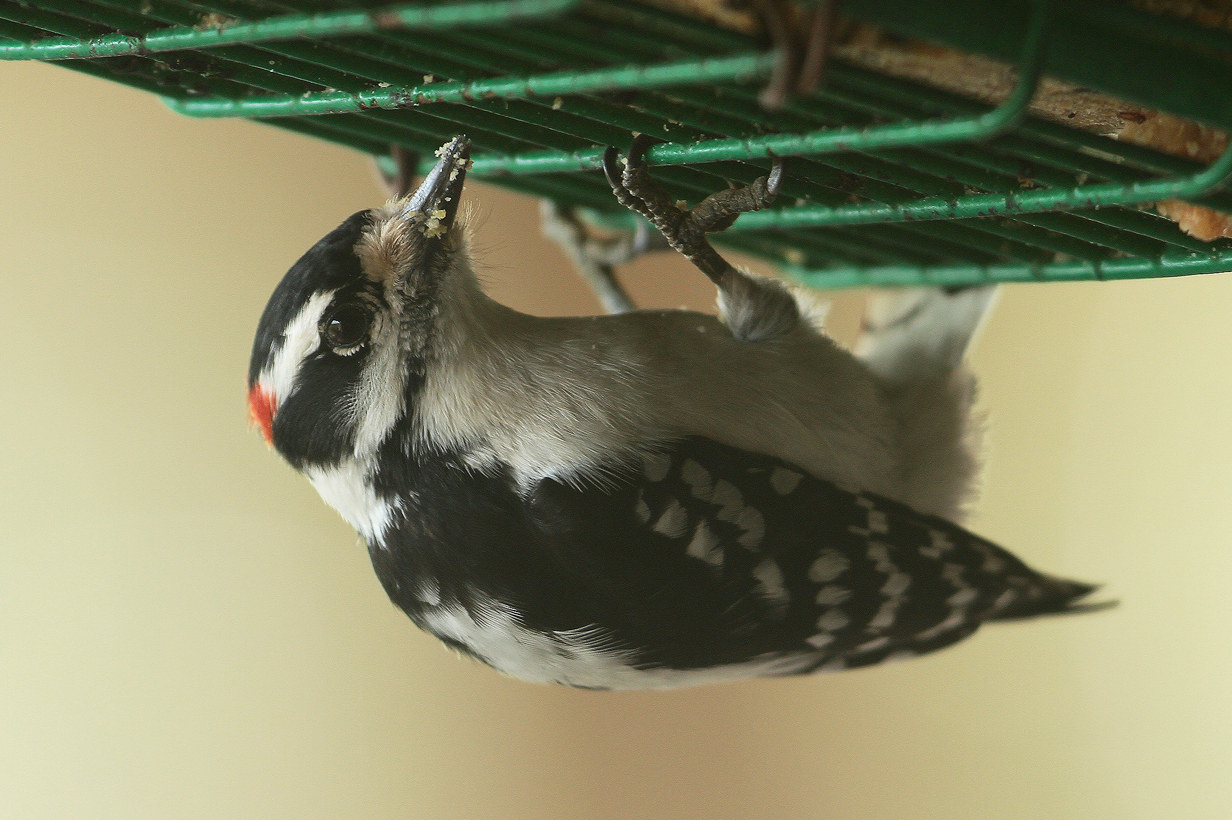
Downy woodpecker (male) (occasional summer resident)
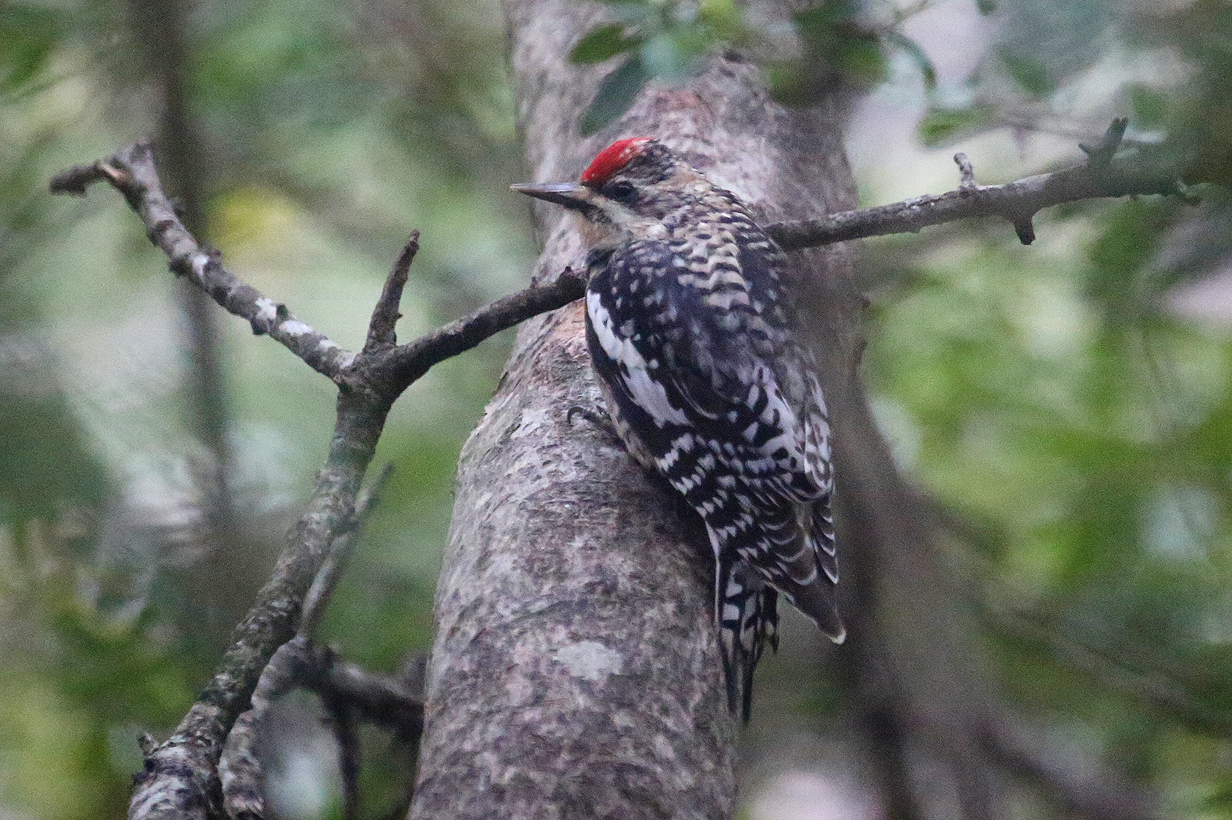
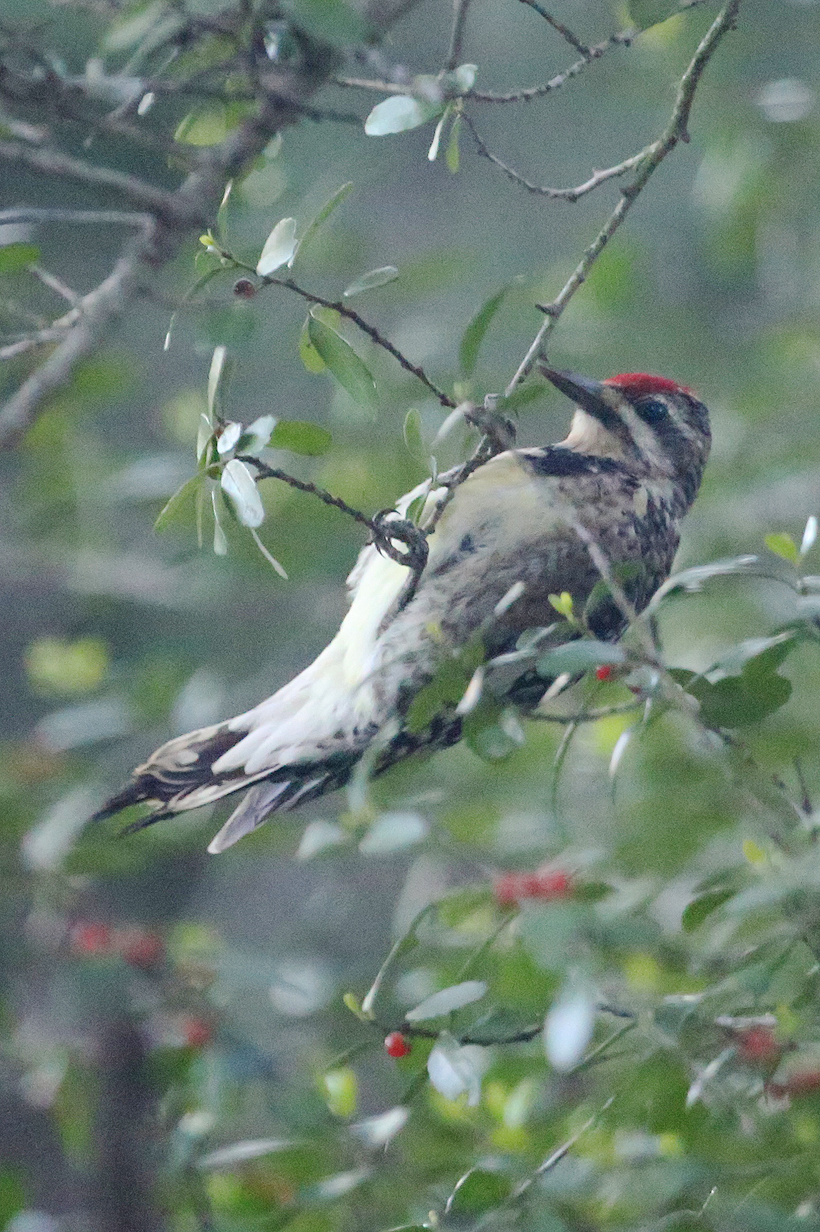
Yellow-bellied sapsucker (sporadic migrant -- we saw this bird during the 2017 spring migration.)
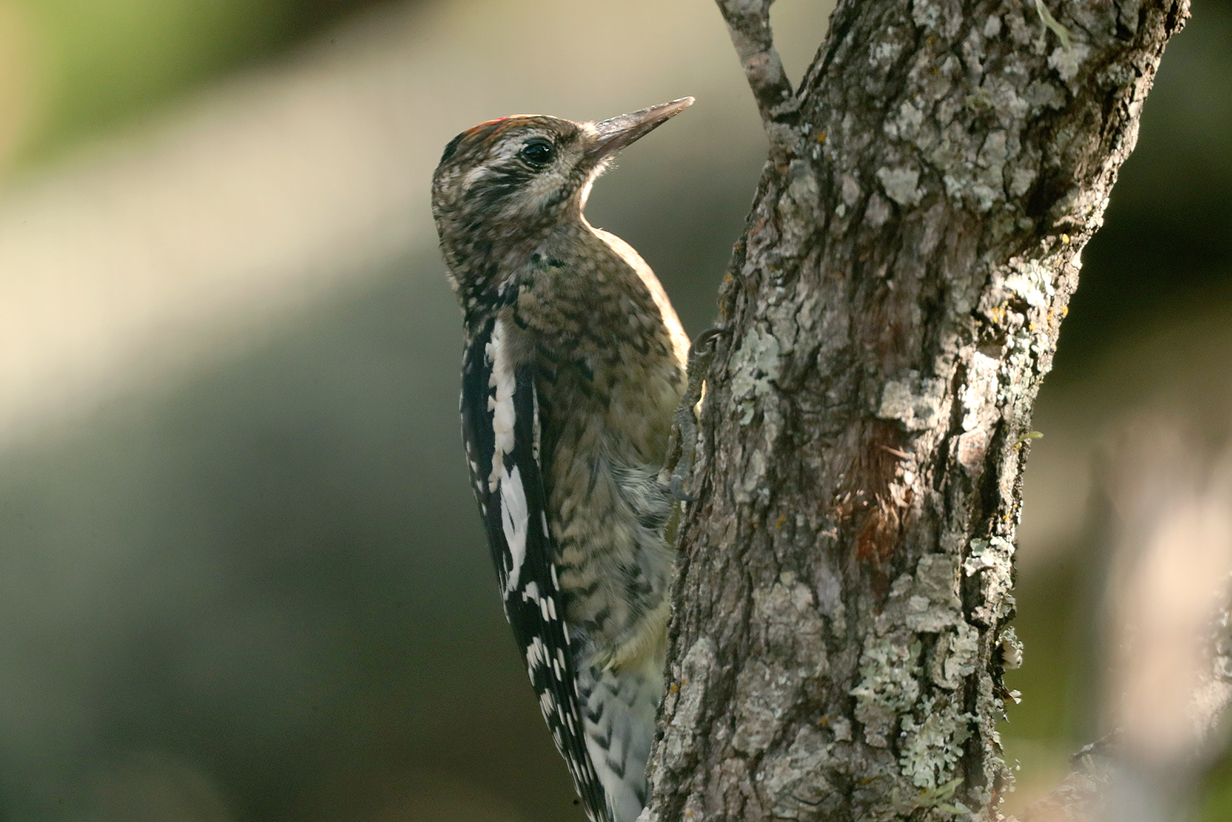
Yellow-bellied sapsucker (This juvenile passed through in 2020, on its way south.)
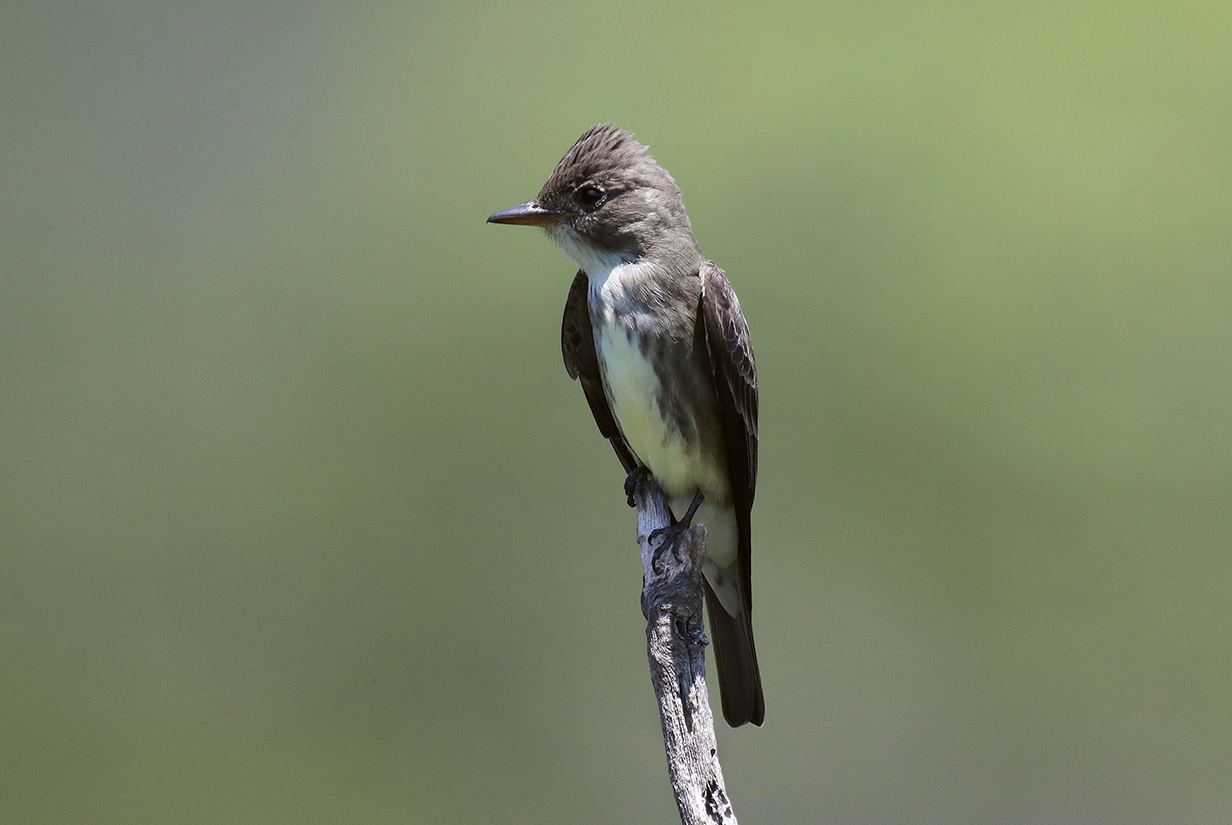
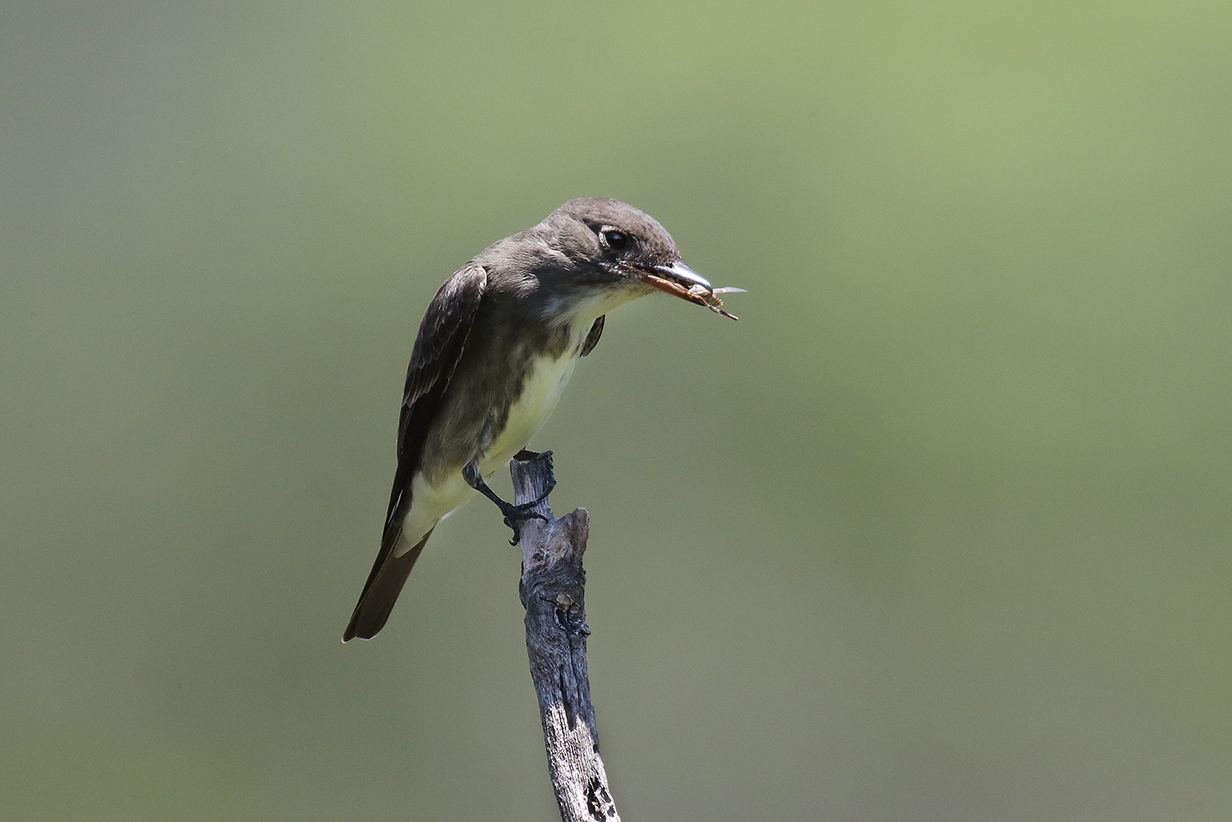
Olive-sided flycatcher (We saw this late migrant for the first time at our house on 2020 May 20. It sallied repeatedly from this perch atop a dead tree, always catching a meal successfully. This flycatcher breeds in NW USA and Canada.)
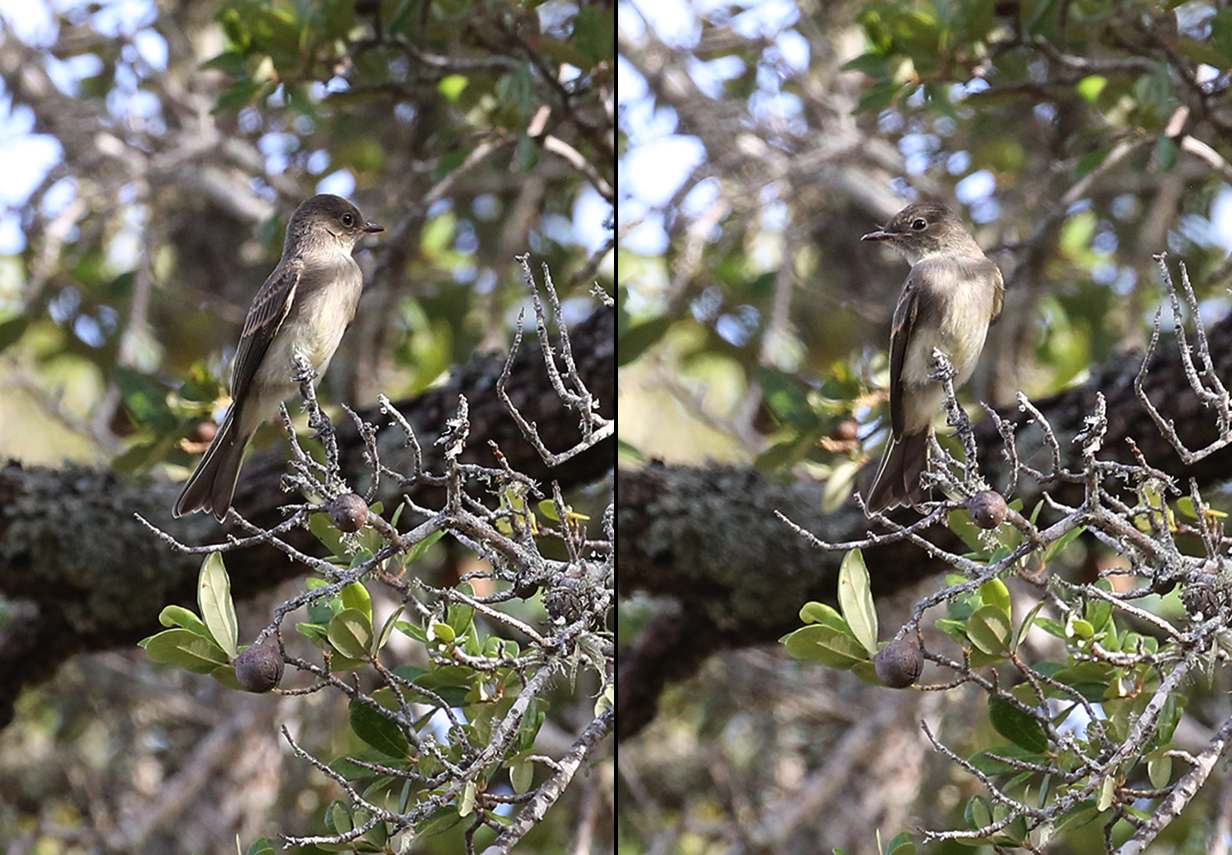
Eastern wood-pewee (has been around regularly in summer 2020)
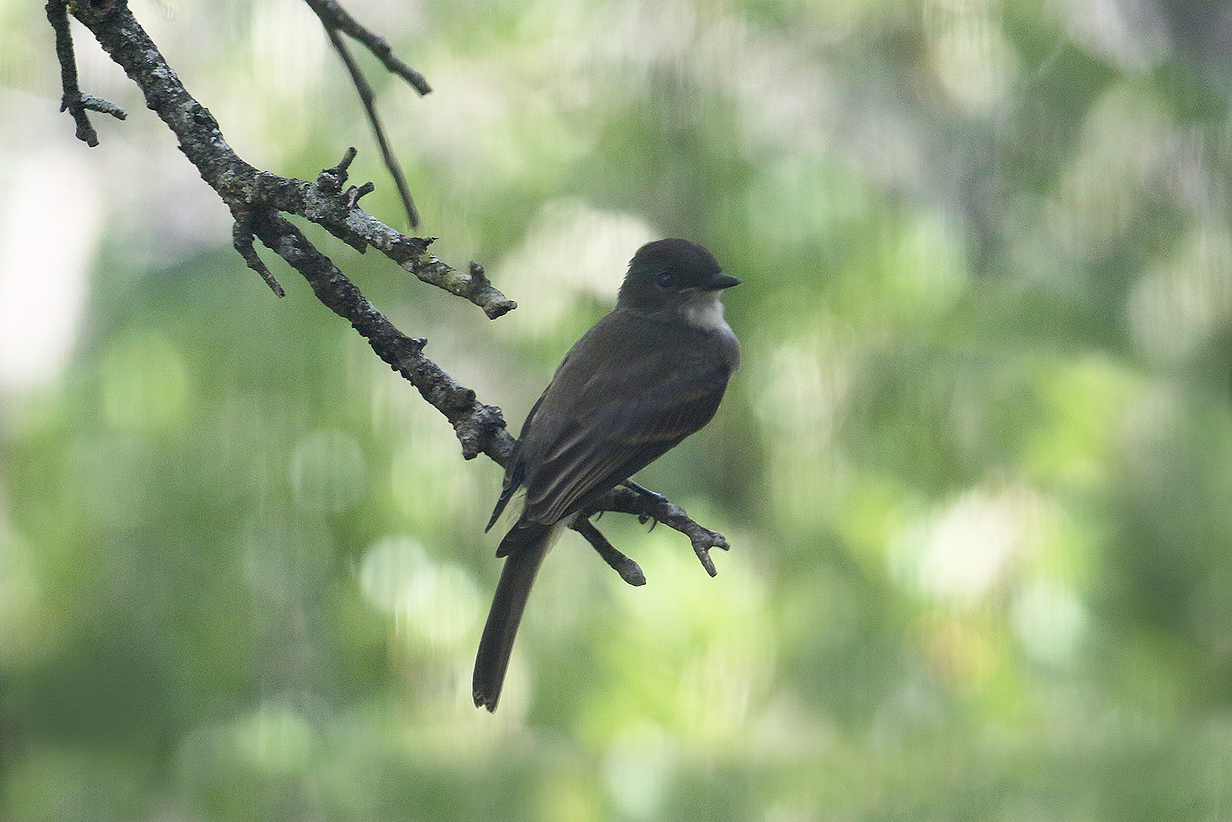
Eastern phoebe (has been around regularly in summer 2020)
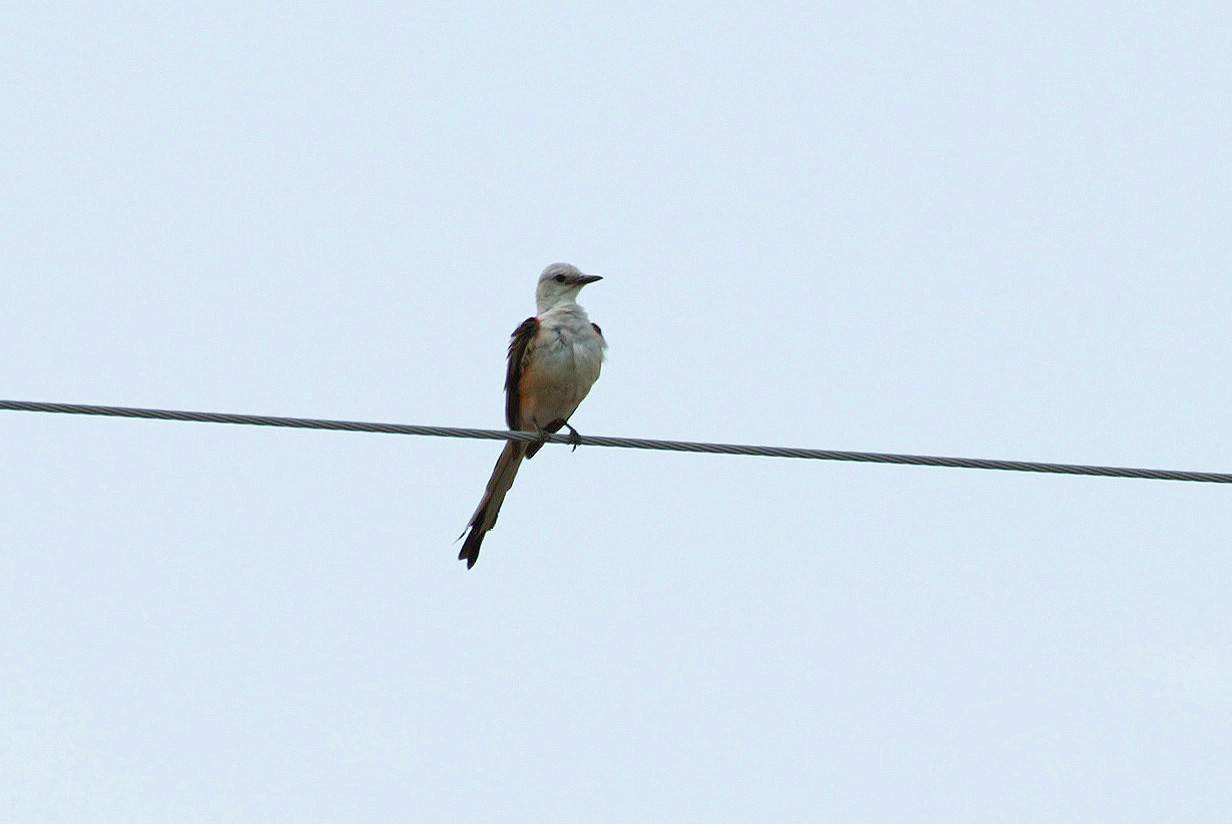
Scissor-tailed flycatcher (irregular summer visitor) (This picture was taken in front of our house. Here is better picture of one that we saw at High Island in 2019.)
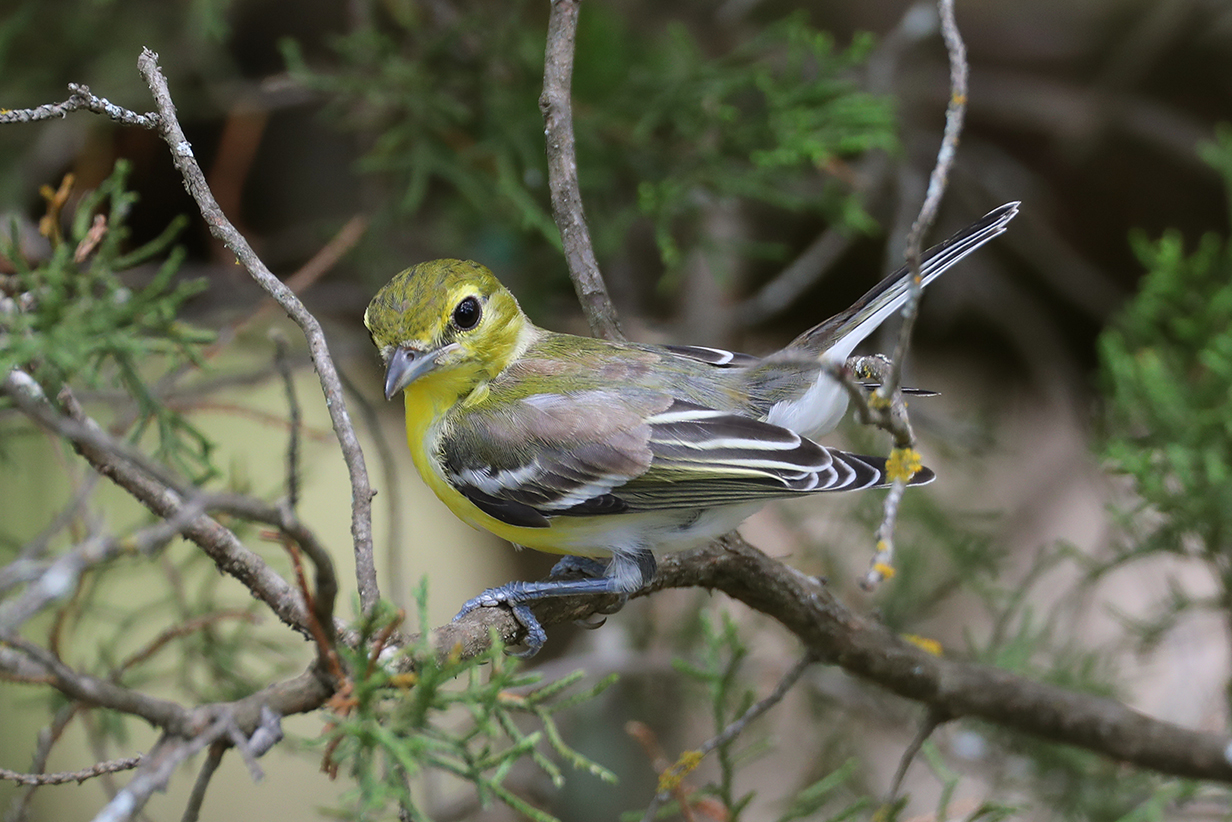
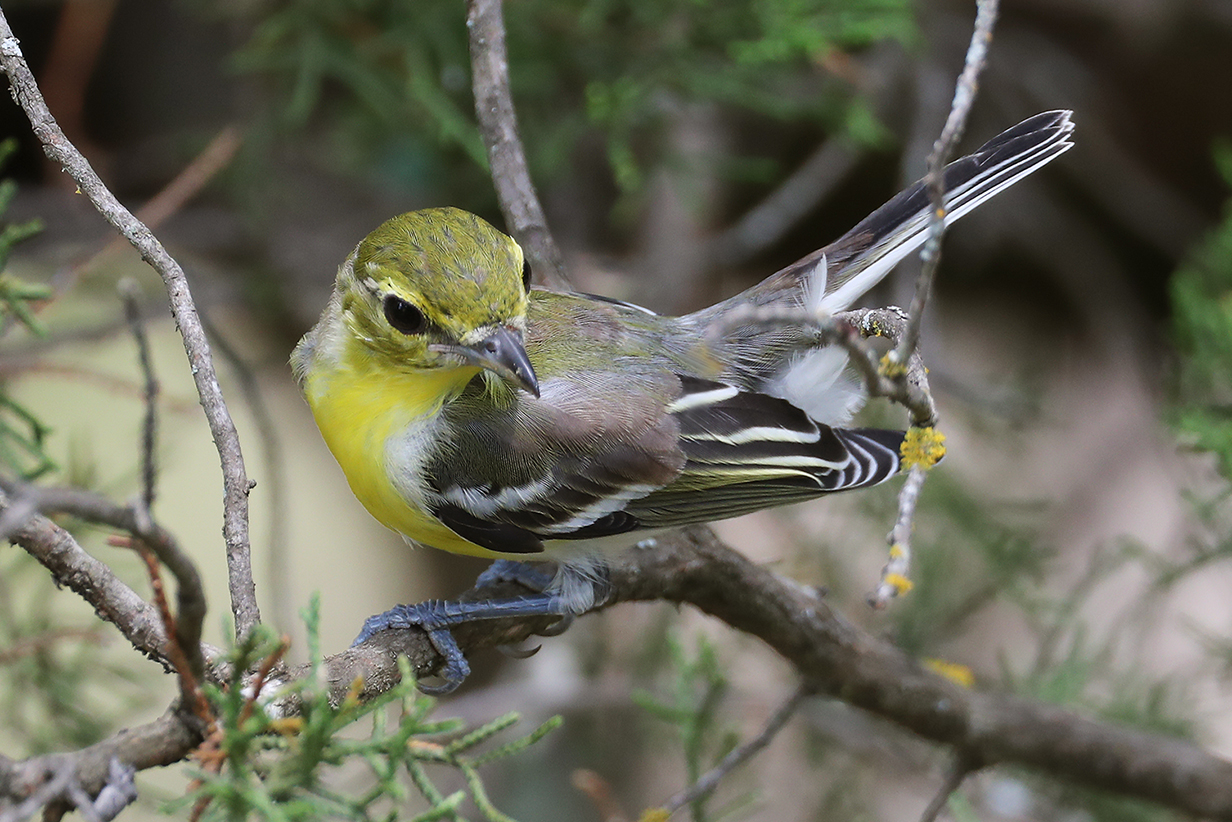
Yellow-throated vireo (House bird for John on June 23, 2020; Mary saw one on April 17, 2002)
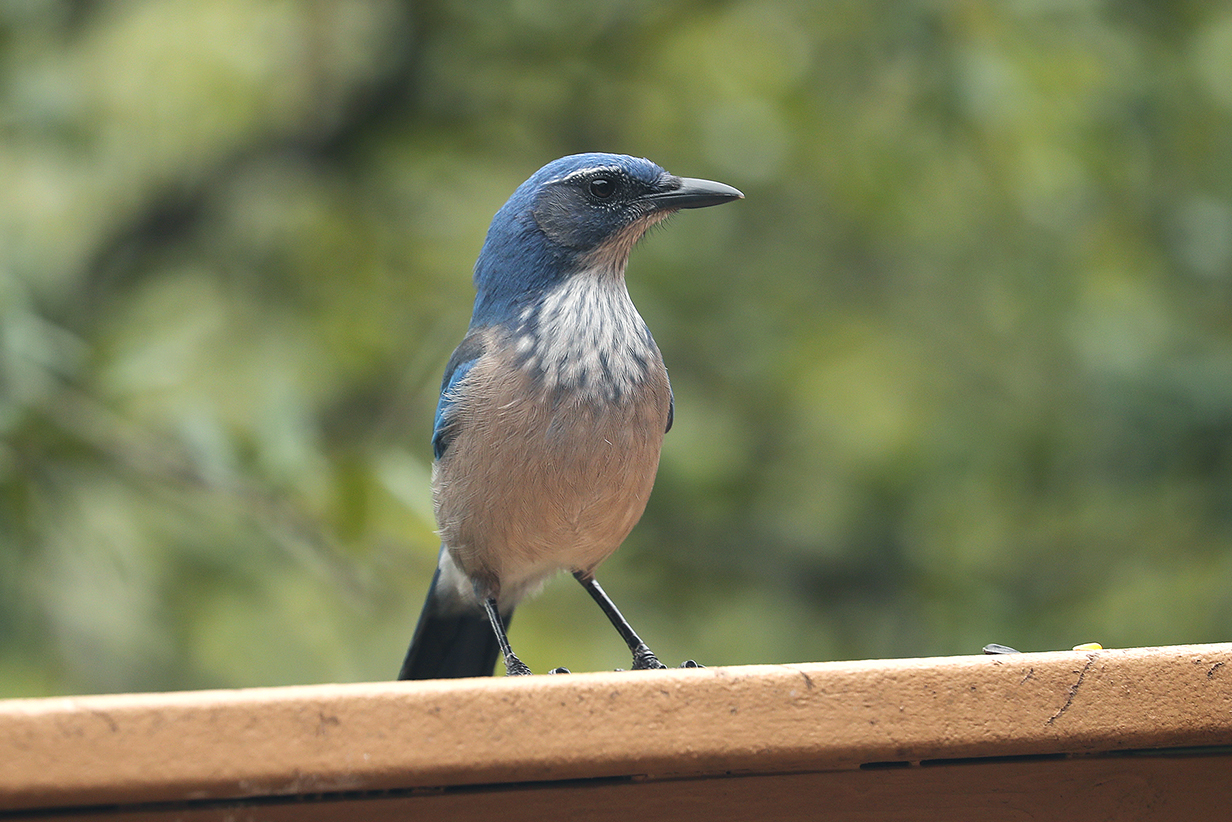
Western scrub-jay (breeding resident)
OK, Western scrub-jay has now been split into (among others) California scrub-jay (Aphelocoma californica) and this bird -- Woodhouse's scrub-jay (Aphelocoma woodhouseii; this should be subspecies texana).
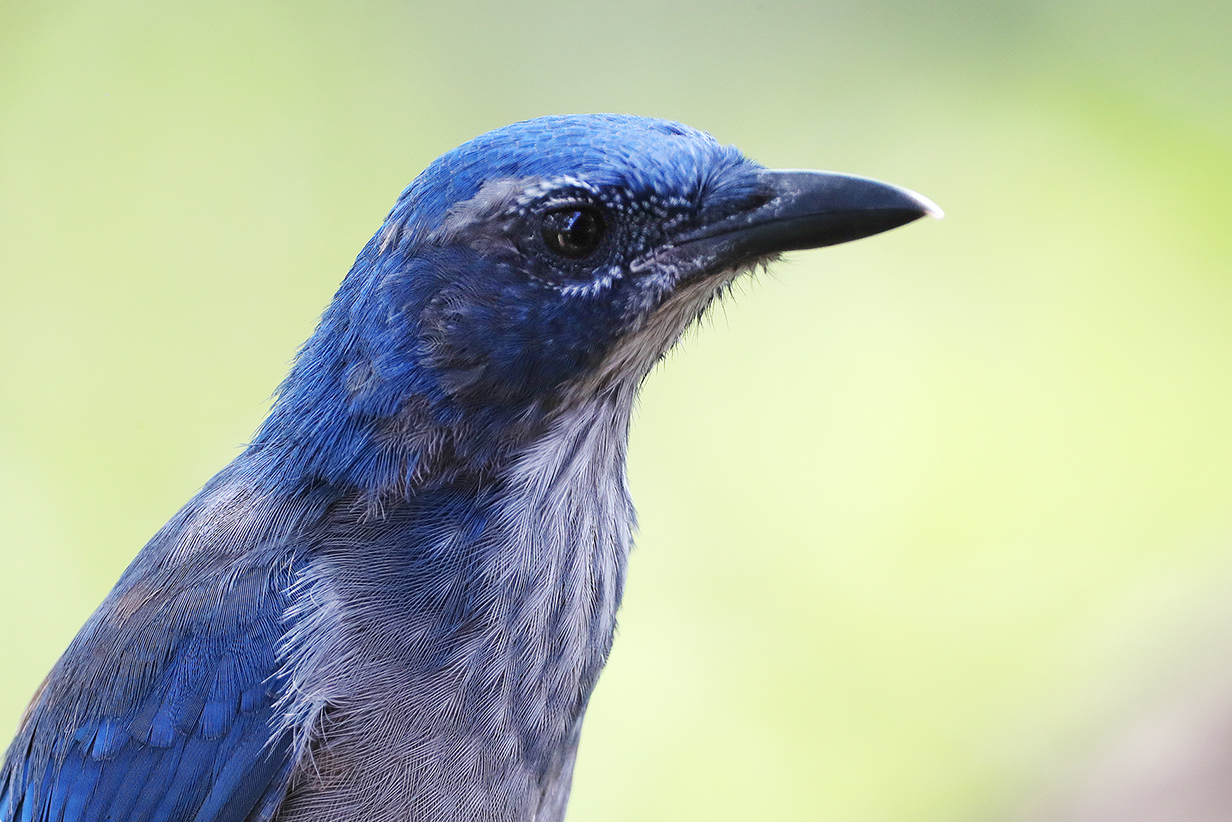
Woodhouse scrub-jay "head shot"
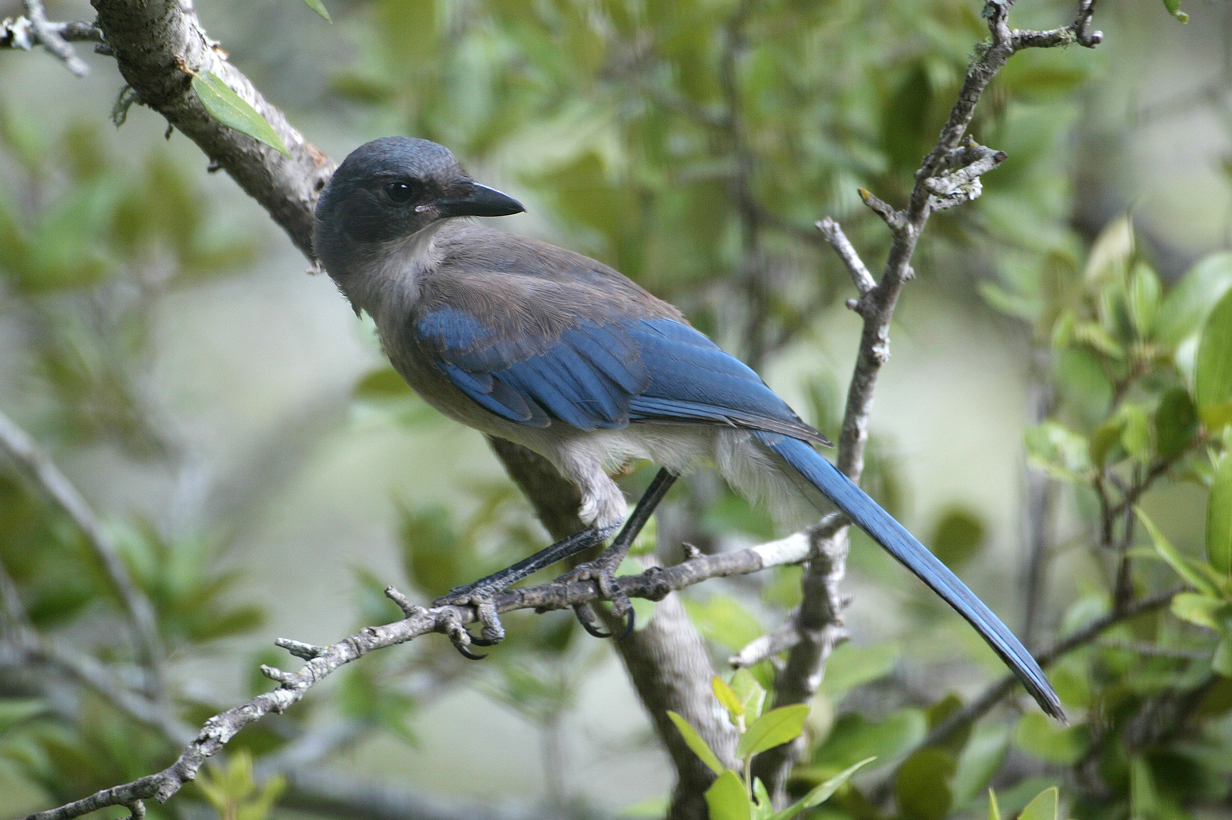
Western scrub-jays sometimes have at least 3 broods per summer. Fledglings are all brown. This is a young bird.
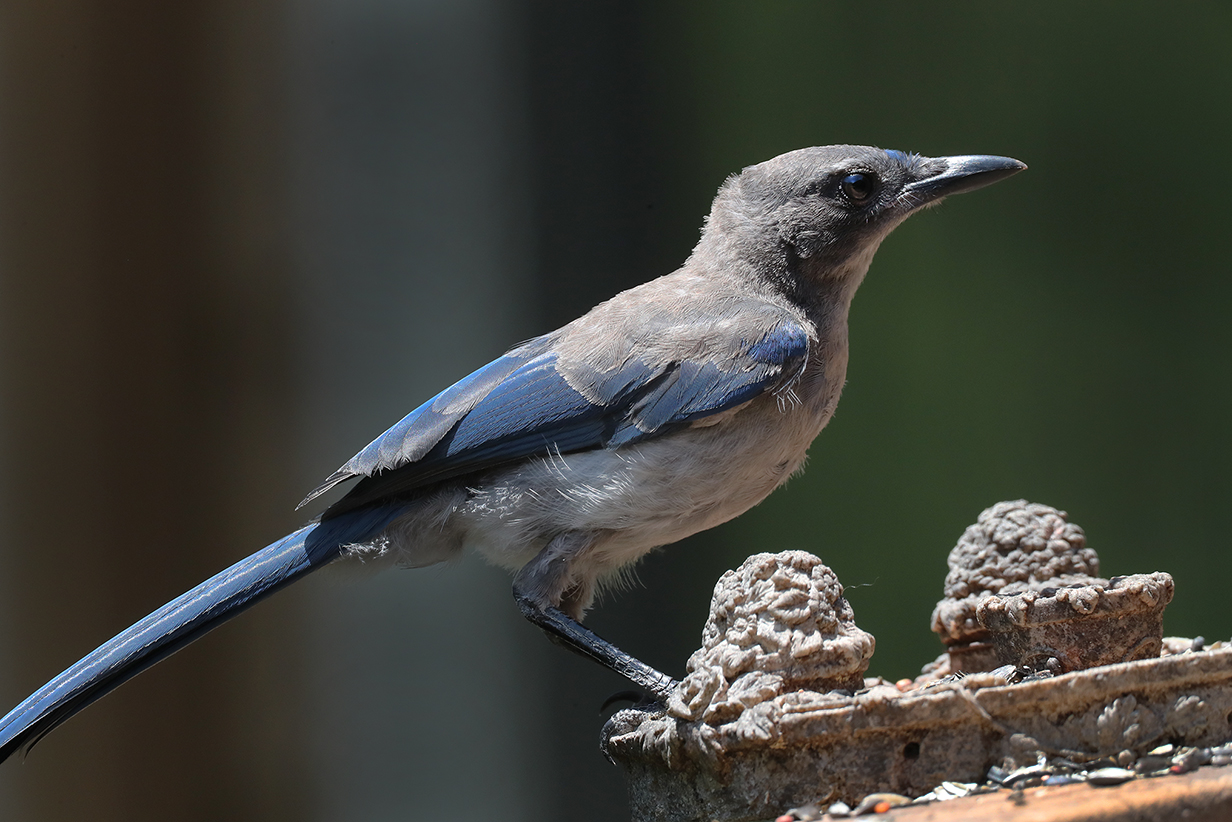
And this is a very young juvenile (lots of noisy -- and hungry! -- young birds in summer 2020)
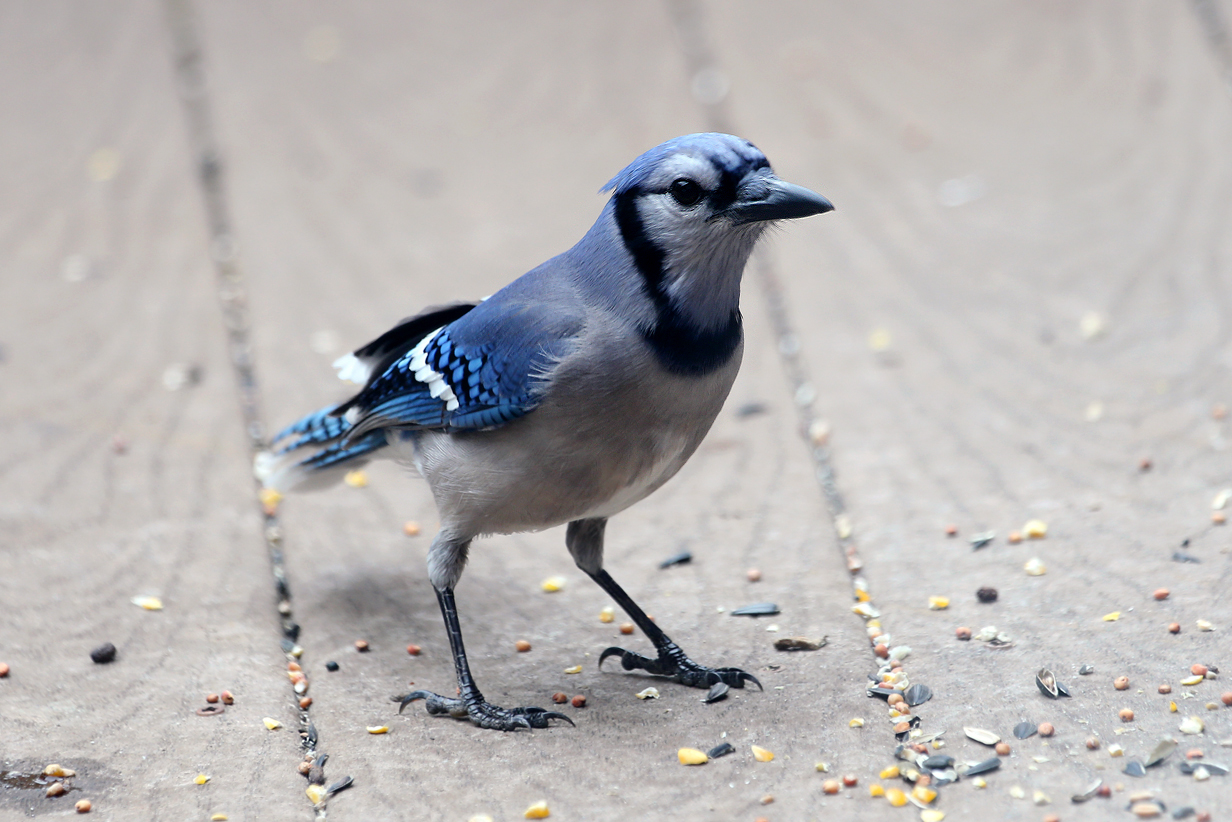
Blue jay (This is a resident of the nearby flat lands on the east side of Austin; it is generally replaced by Woodhouse's scrub-jay in the hill country around our house. However, sporadically, a few Blue jays show up at our house and usually stay for a few days to a few weeks, in post-breeding summer, fall, or winter.)
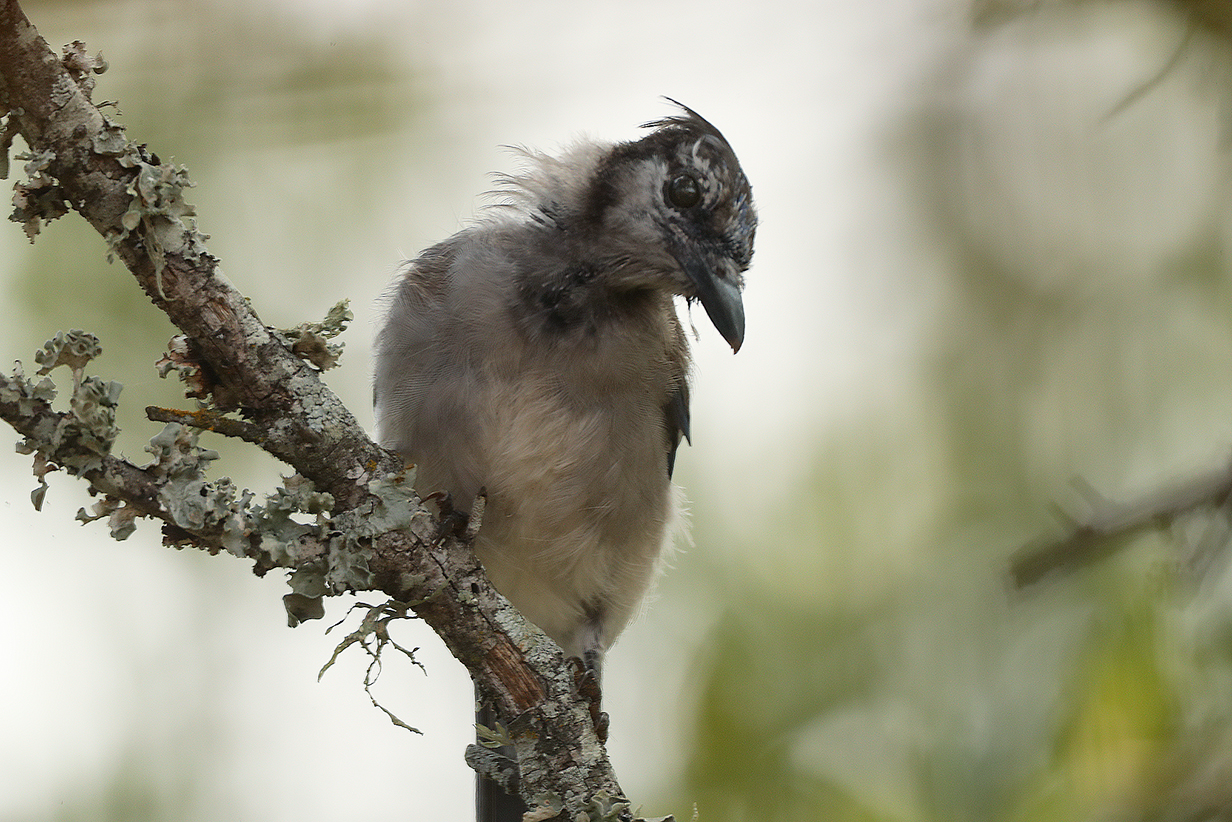
Blue jay (This juvenile may turn into a "babe magnet" when he grows up ... but he is not quite there yet.)
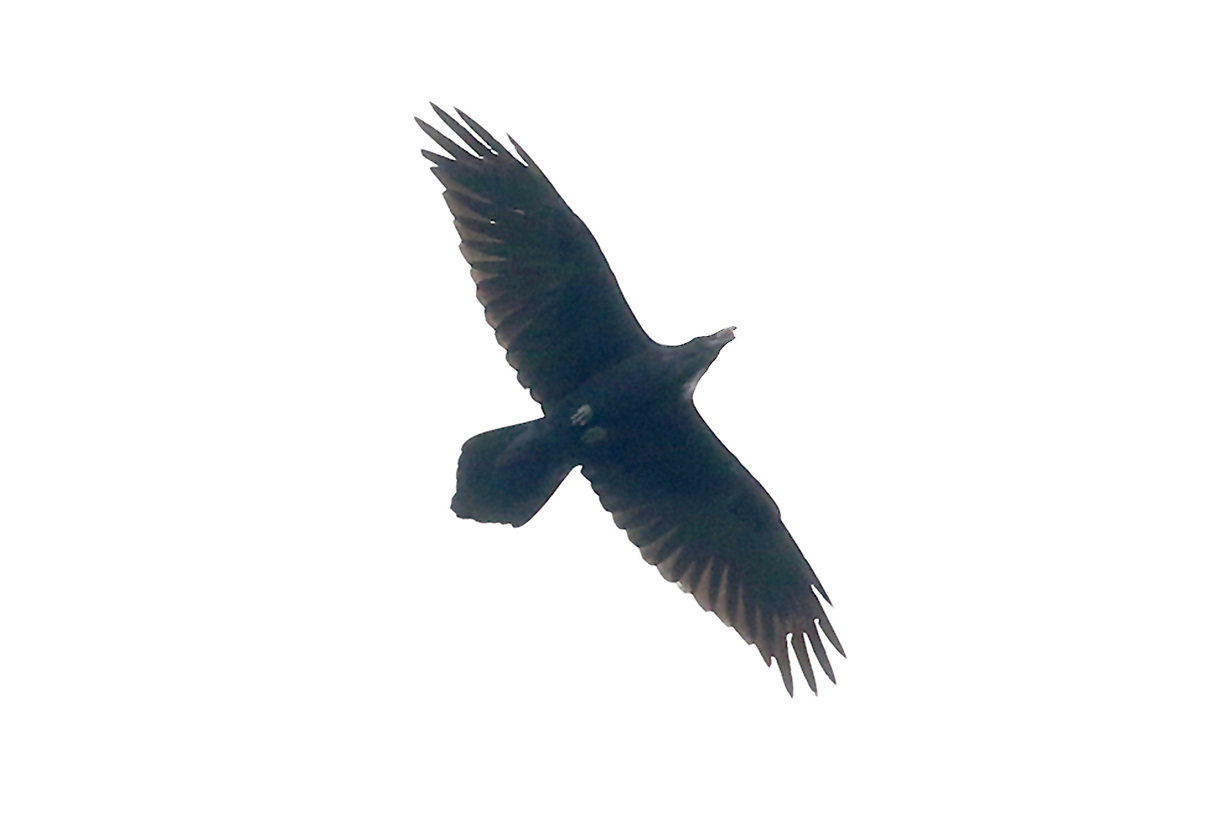
Common raven flyover (Fall 2020)
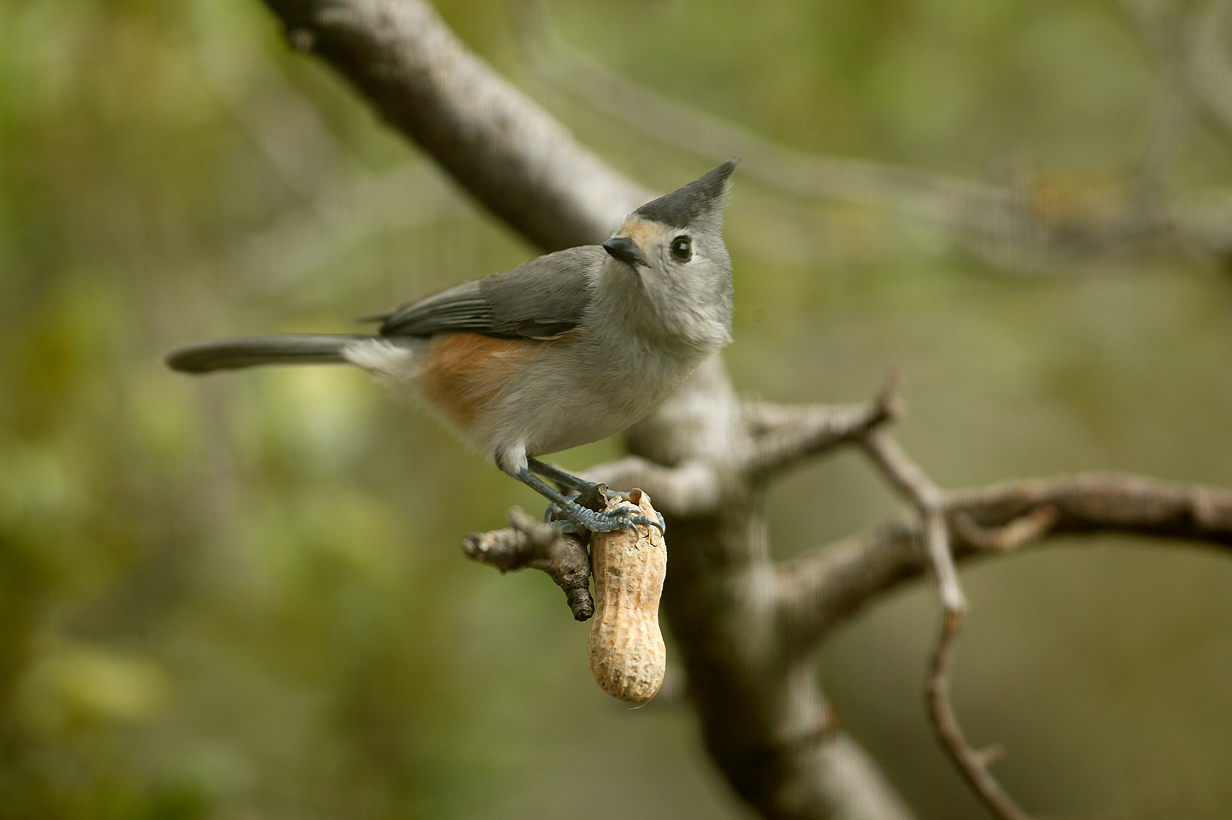
Black-crested titmouse (breeding resident)

Black-crested tit (young juvenile -- the crest is still gray)
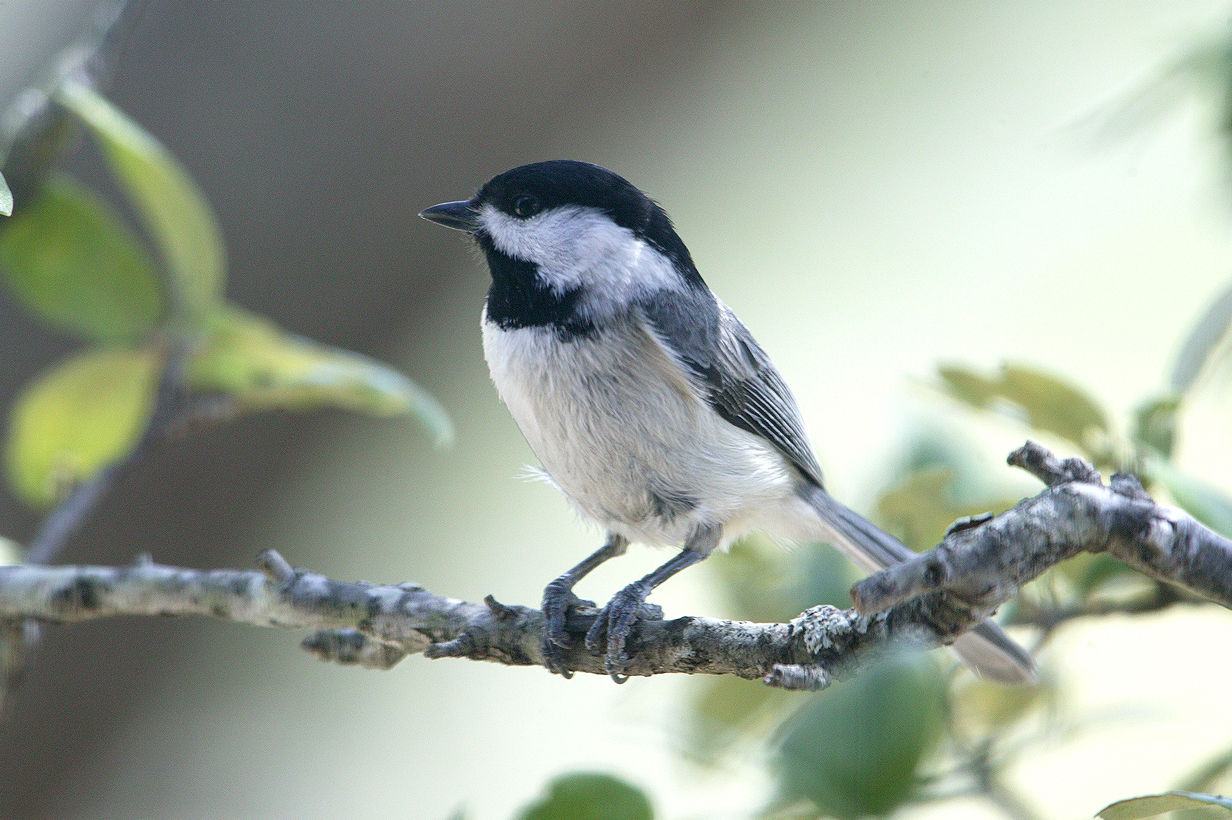
Carolina chickadee (breeding resident)
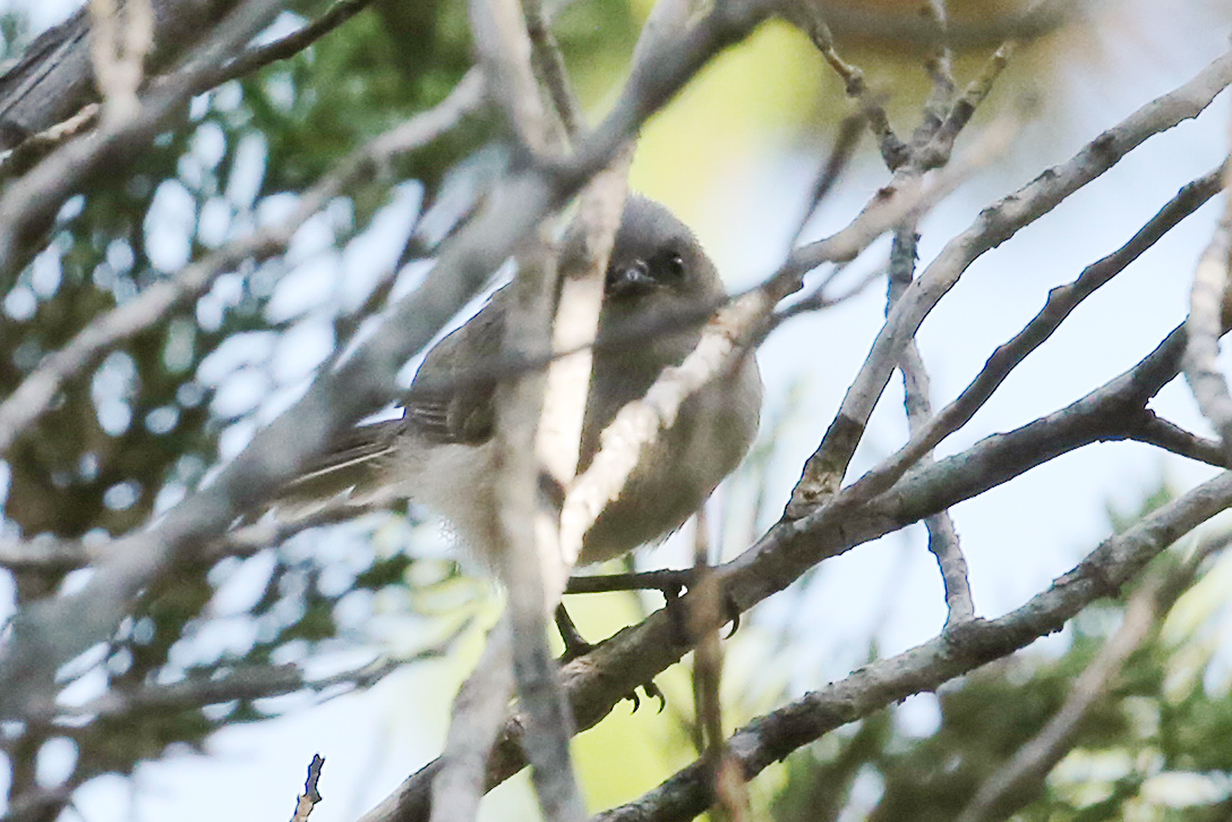
American bushtit (This is a very bad picture of John's "house bird" -- elusive, important sighting: Summmer 2020.)

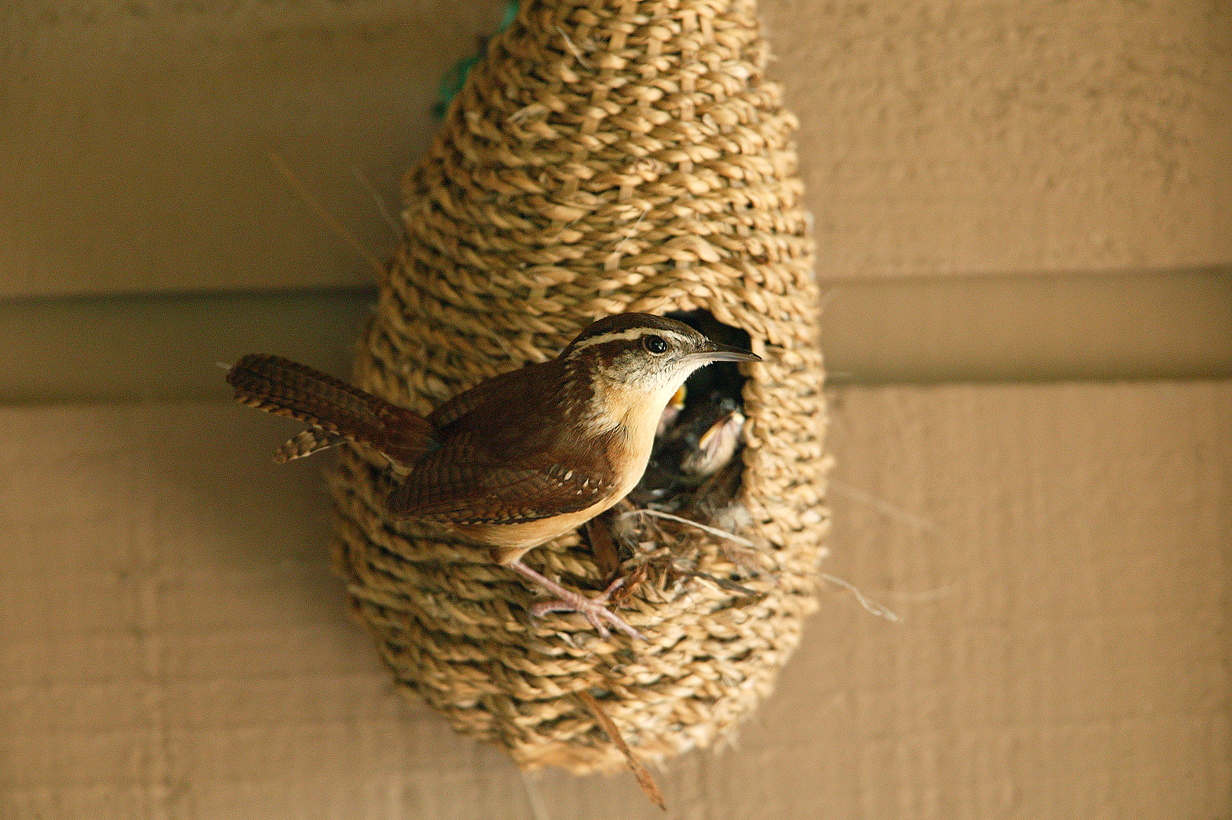

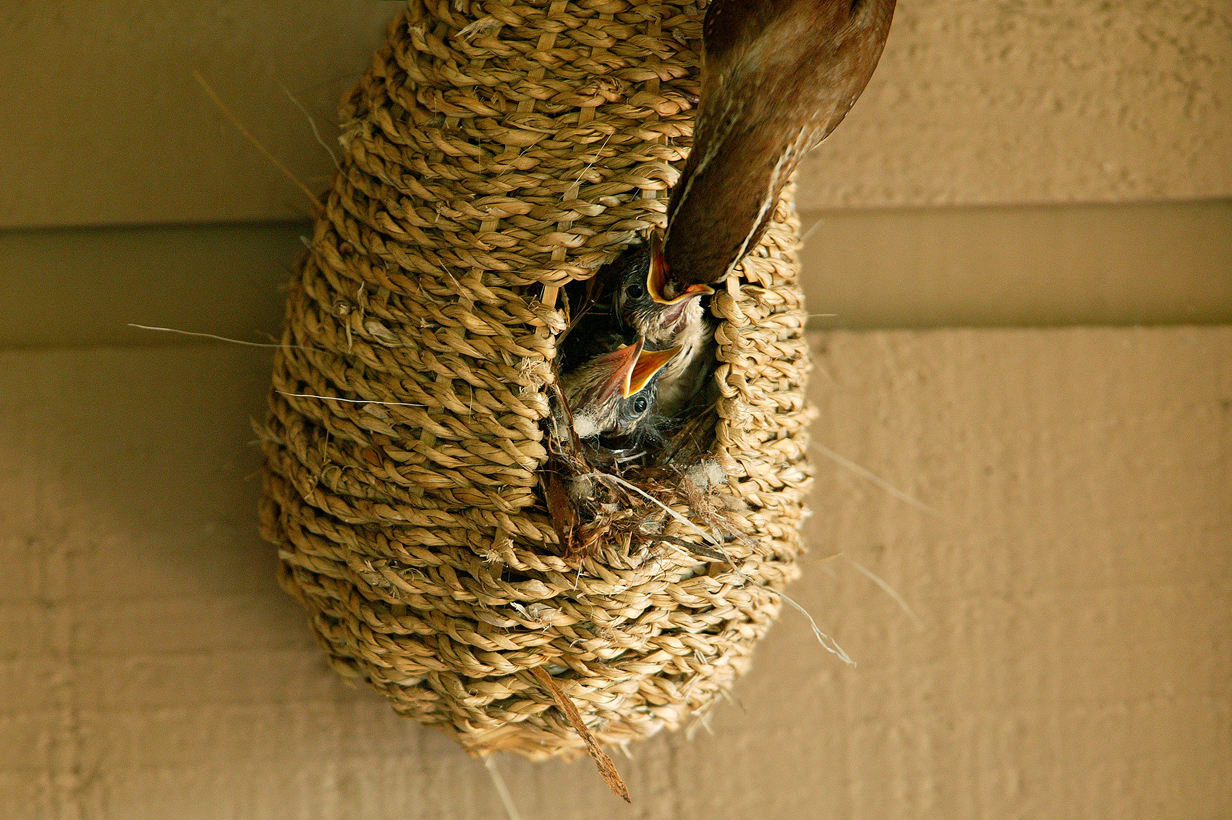
Carolina wren (breeding resident)
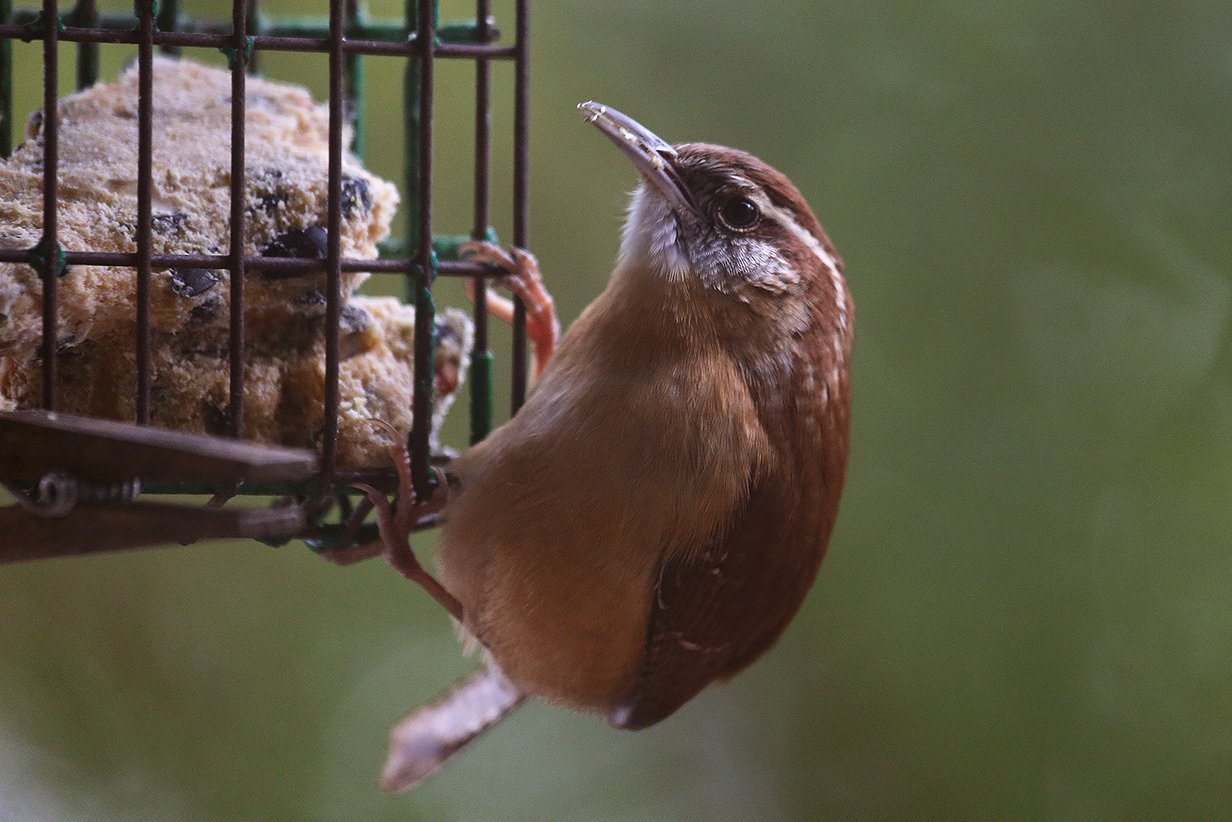
Carolina wren (somewhat seasonal but clearly a breeding resident)
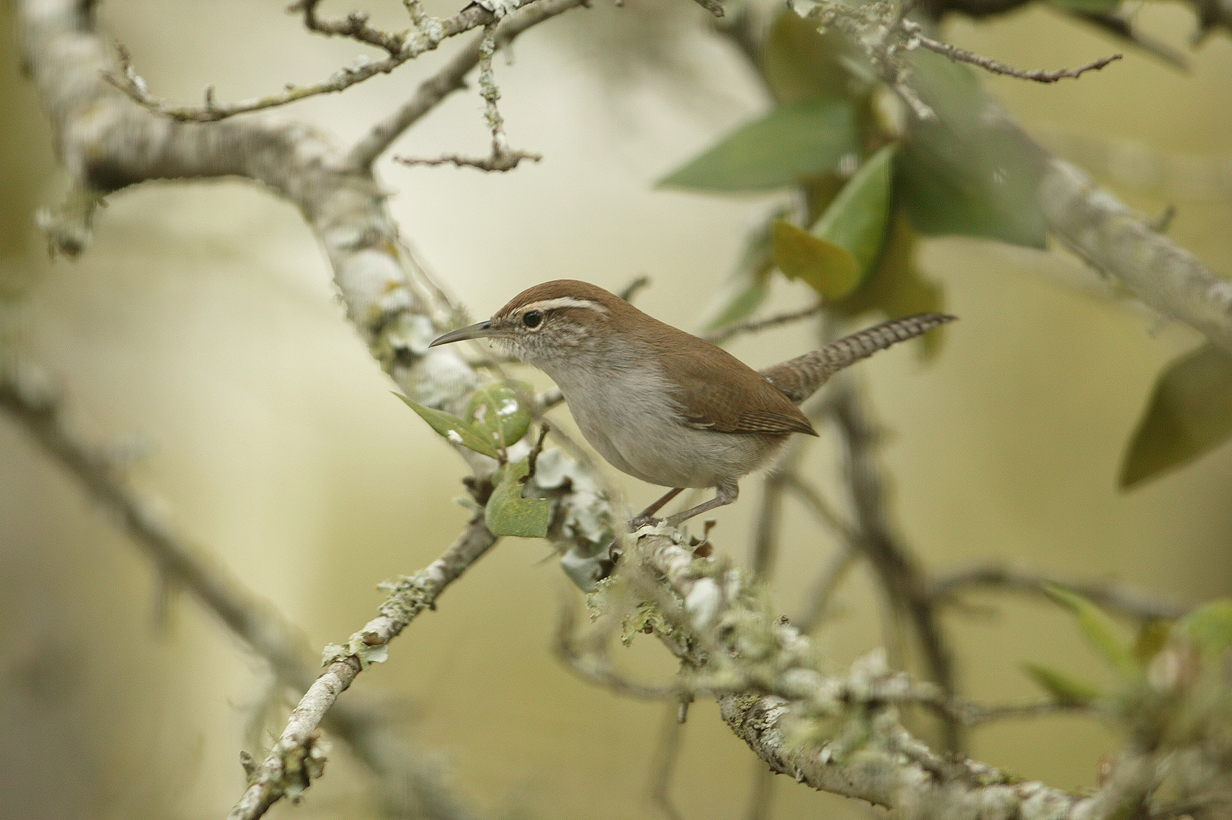
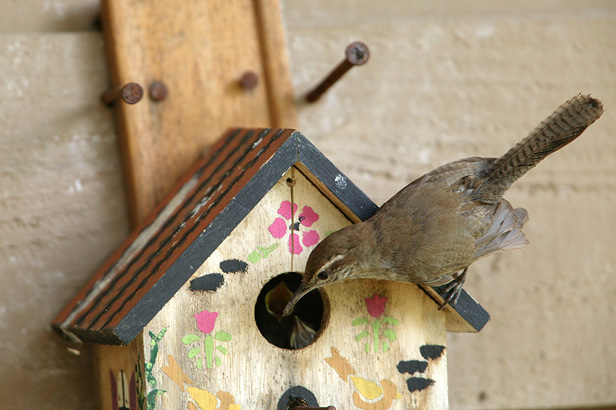
Bewick's wren (breeding resident)
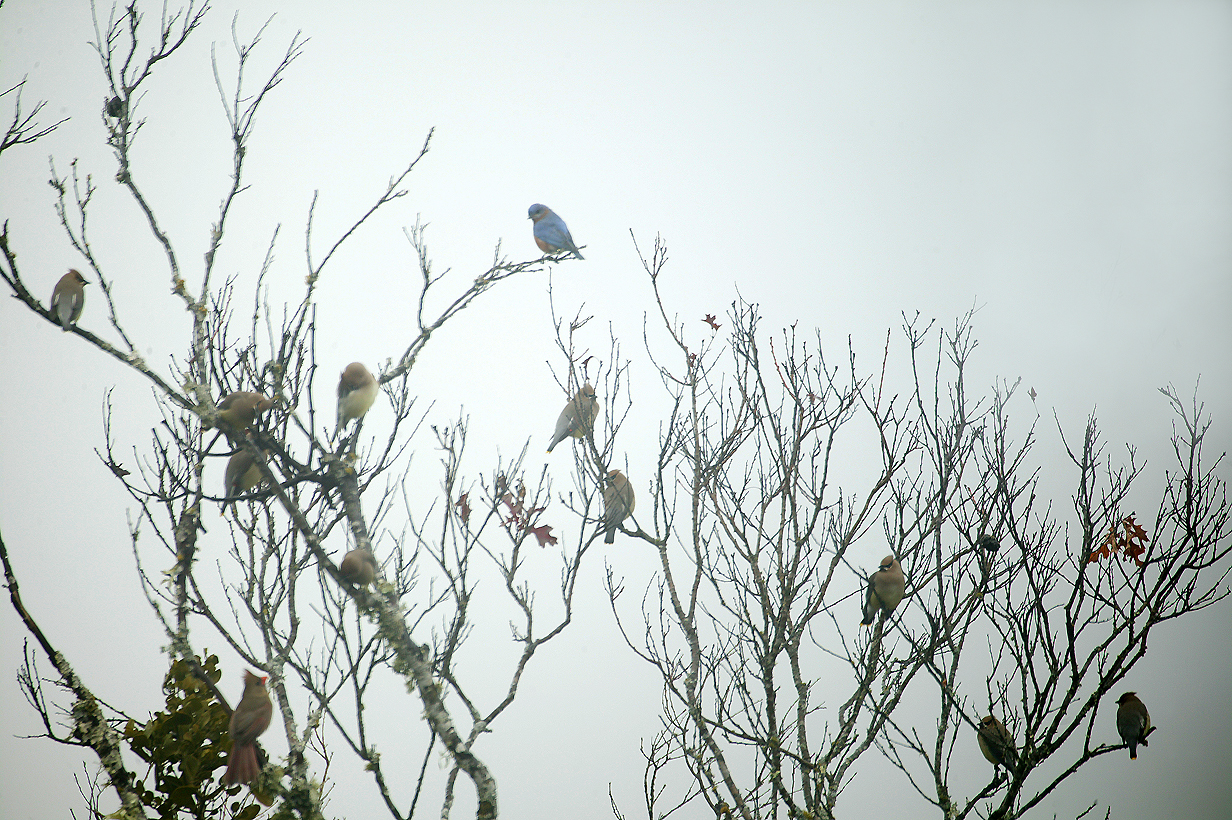
Eastern bluebird (occasional) and Cedar waxwings (sporadic in winter)
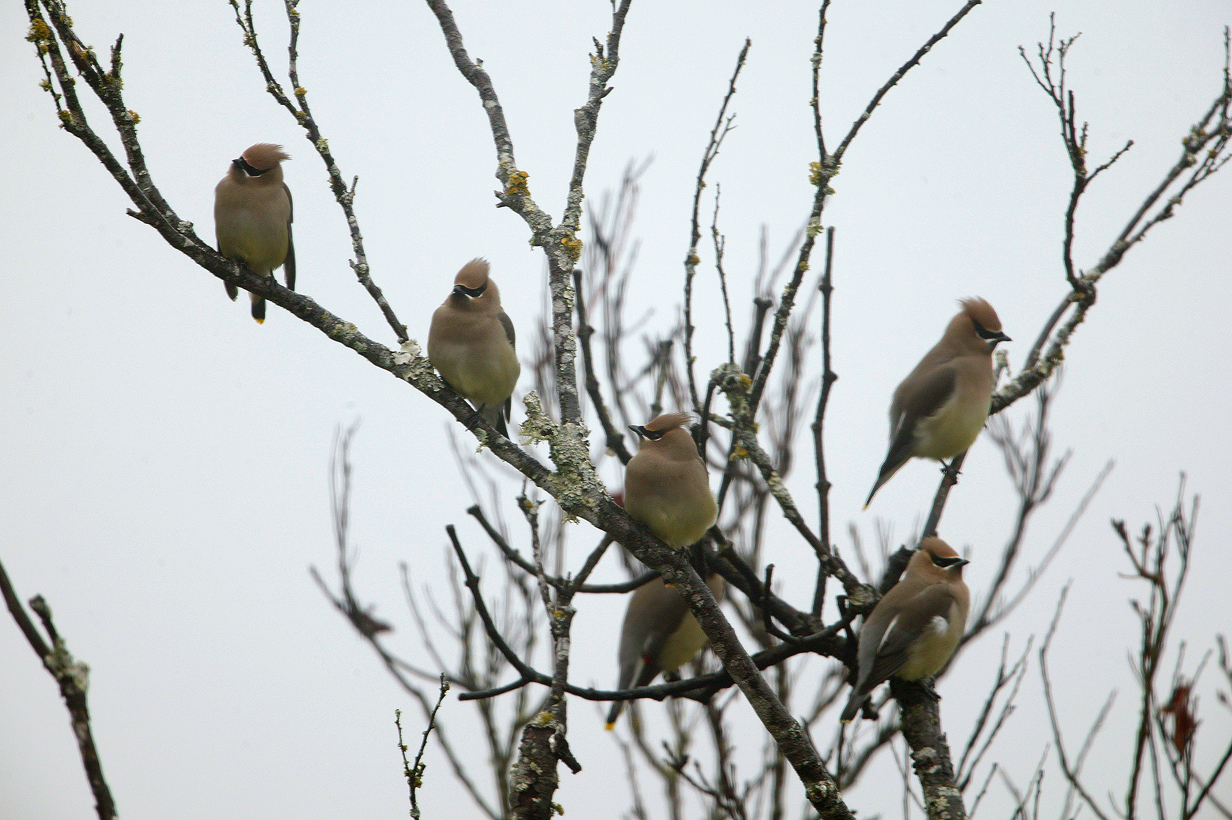
Cedar waxwings (We see them most winters.)
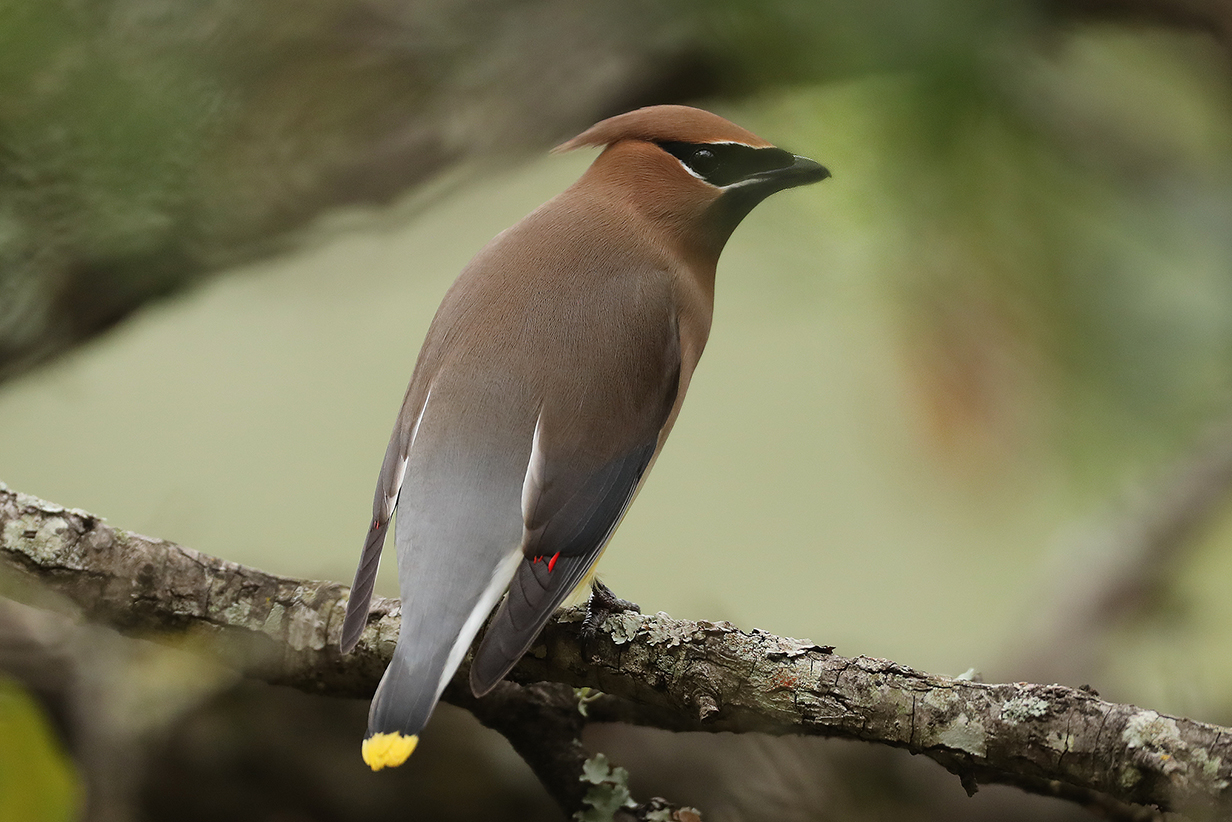
Cedar waxwings have been more regular in 2019 (this picture) and 2020.
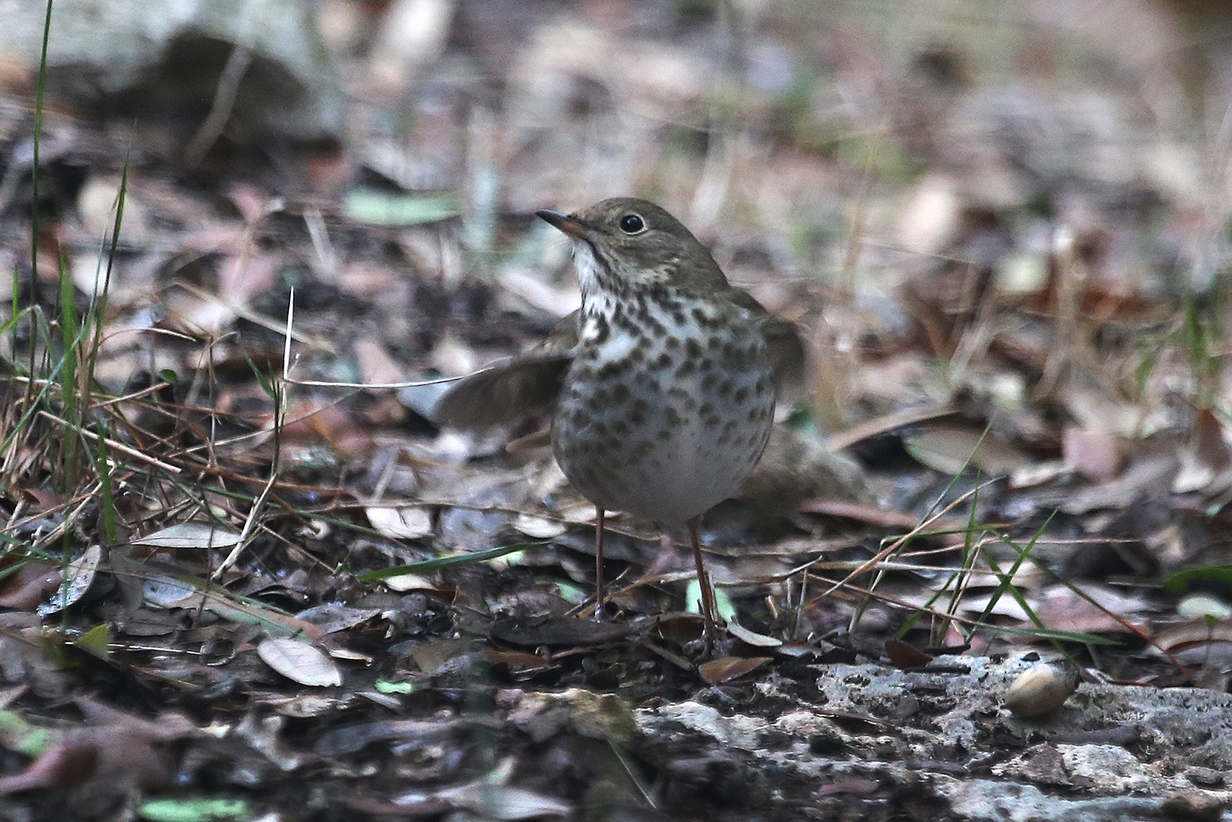
Hermit thrush (Hermit thrush usually comes in the winter, when it is cold.)
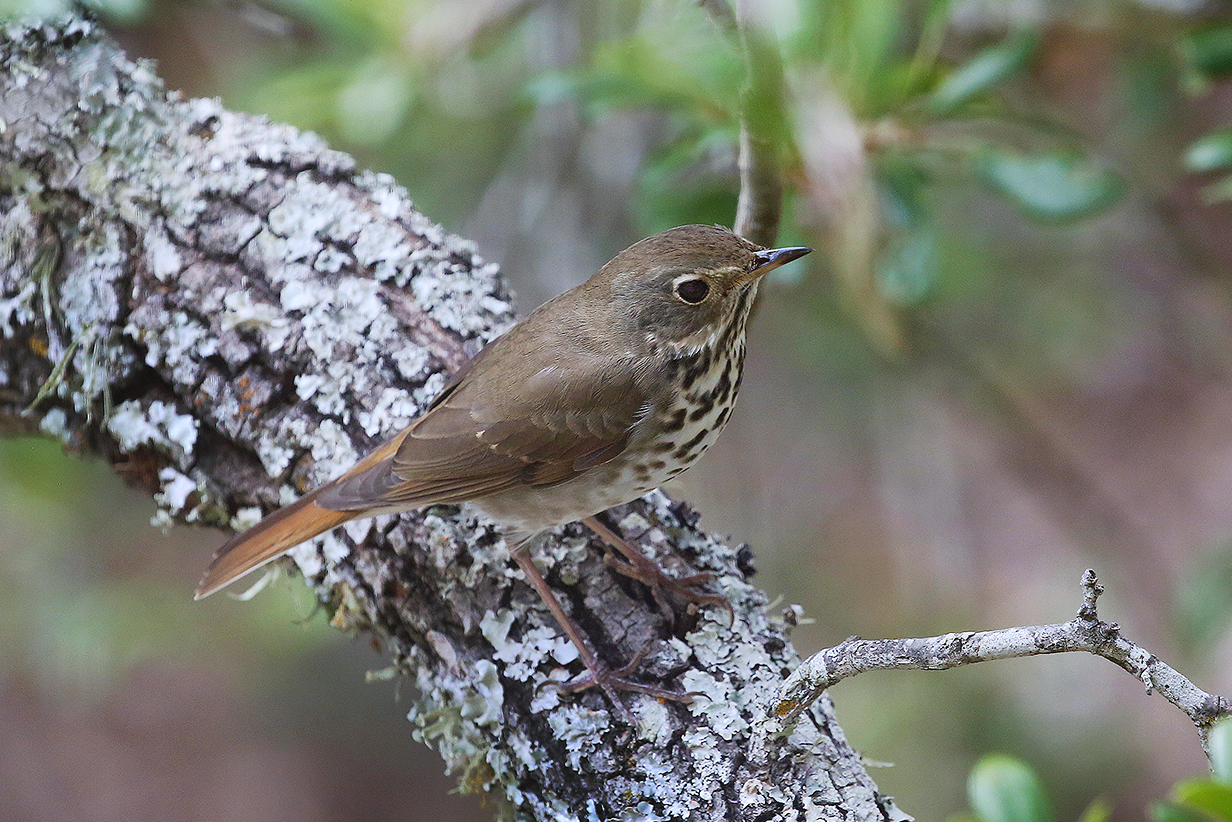

Hermit thrush (We had a spectacularly good crop of berries in 2020: lots of Robins and even a regular Hermit thrush in November.)
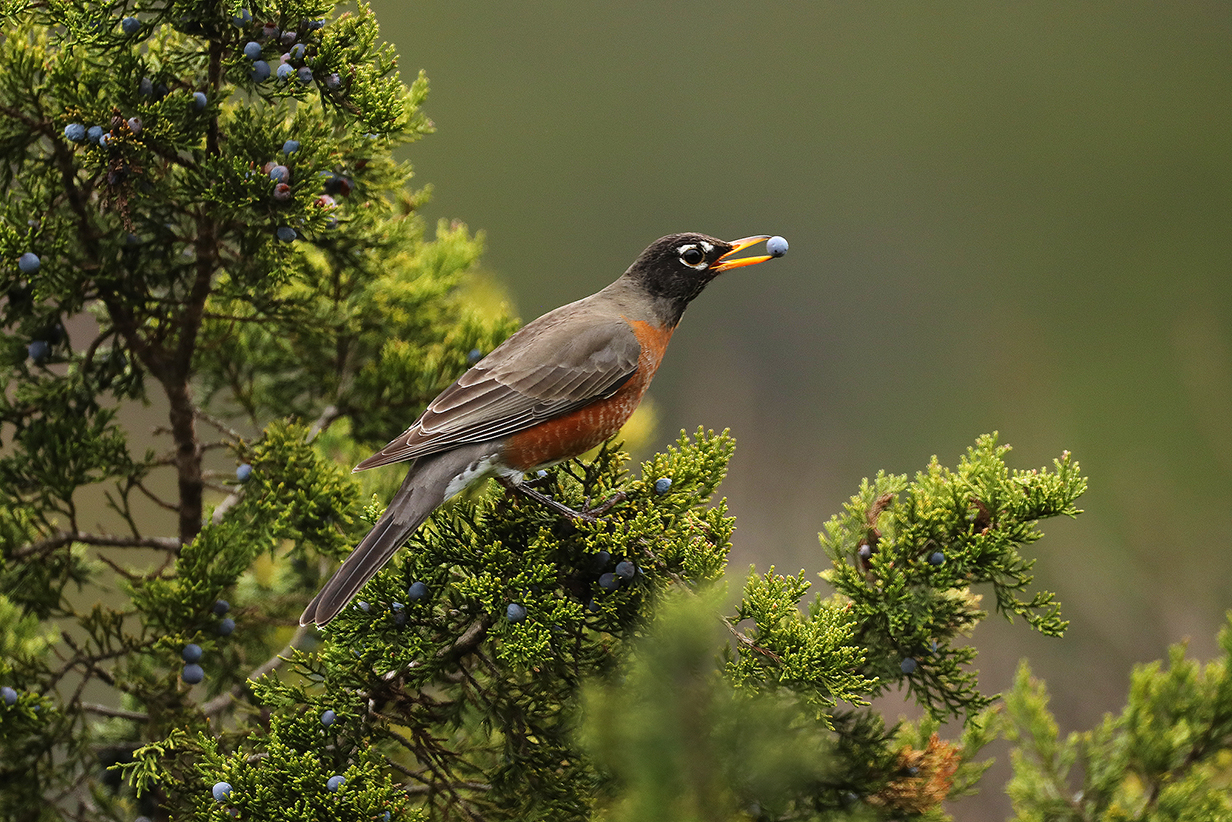
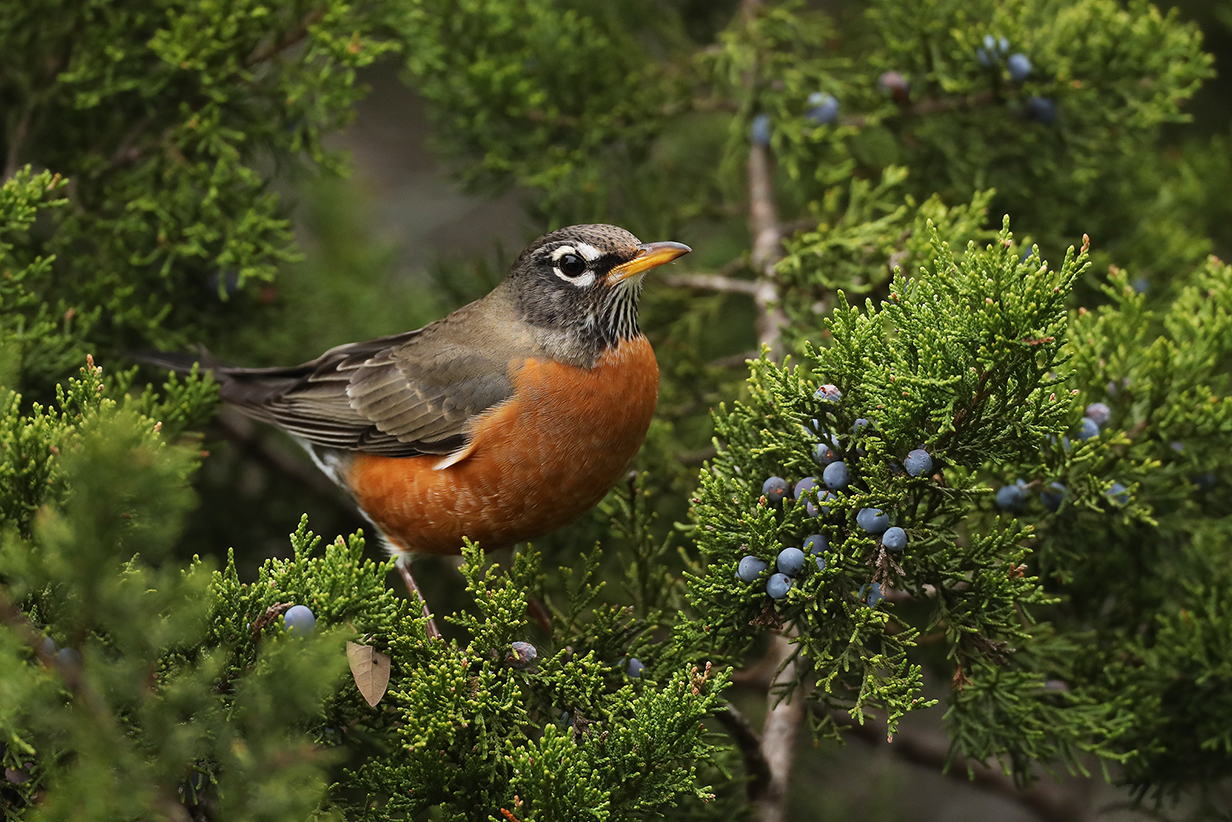
American robin (sporadic in winter; usually arrives with freezing weather)
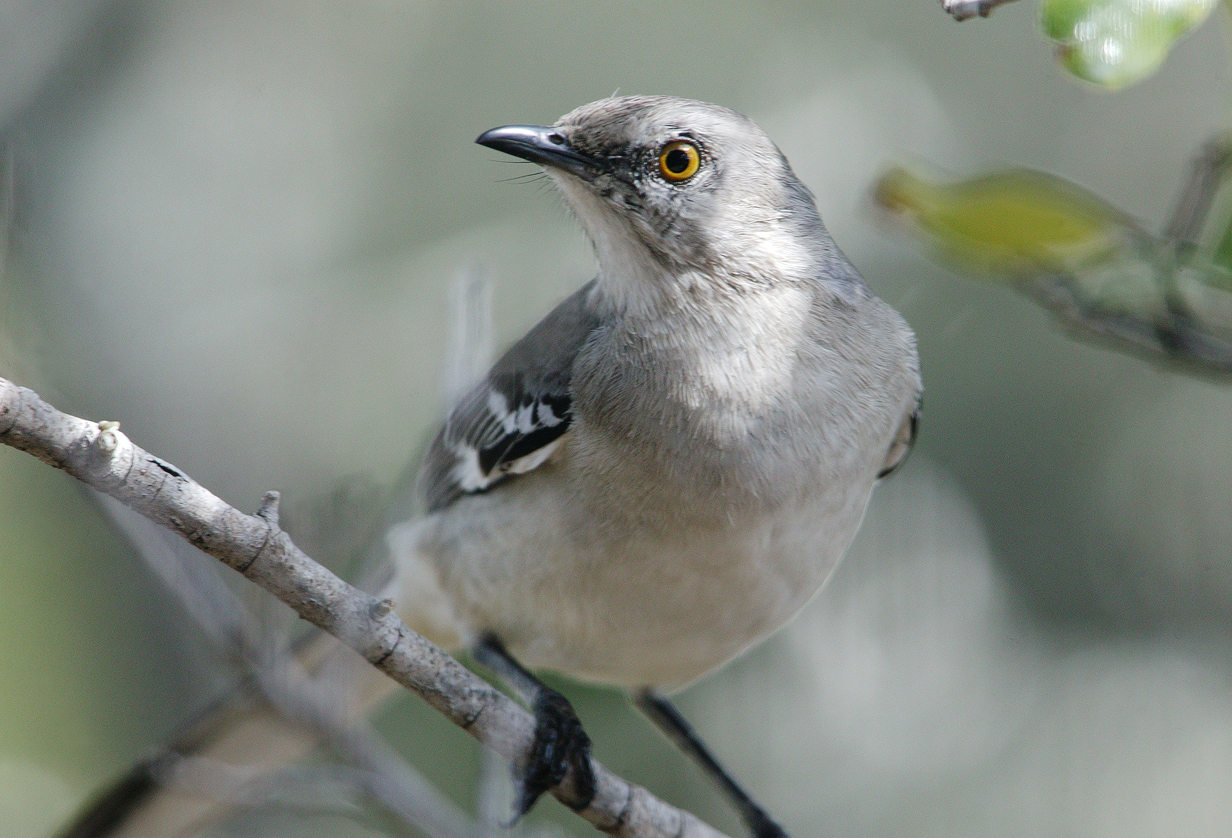
Northern mockingbird (sporadic year-round, most often in the winter -- berries!)

Blue-gray gnatcatcher (Seen every few years. This picture was taken on June 23, 2020. It's a tiny bird, always on the move and hard to photograph.)
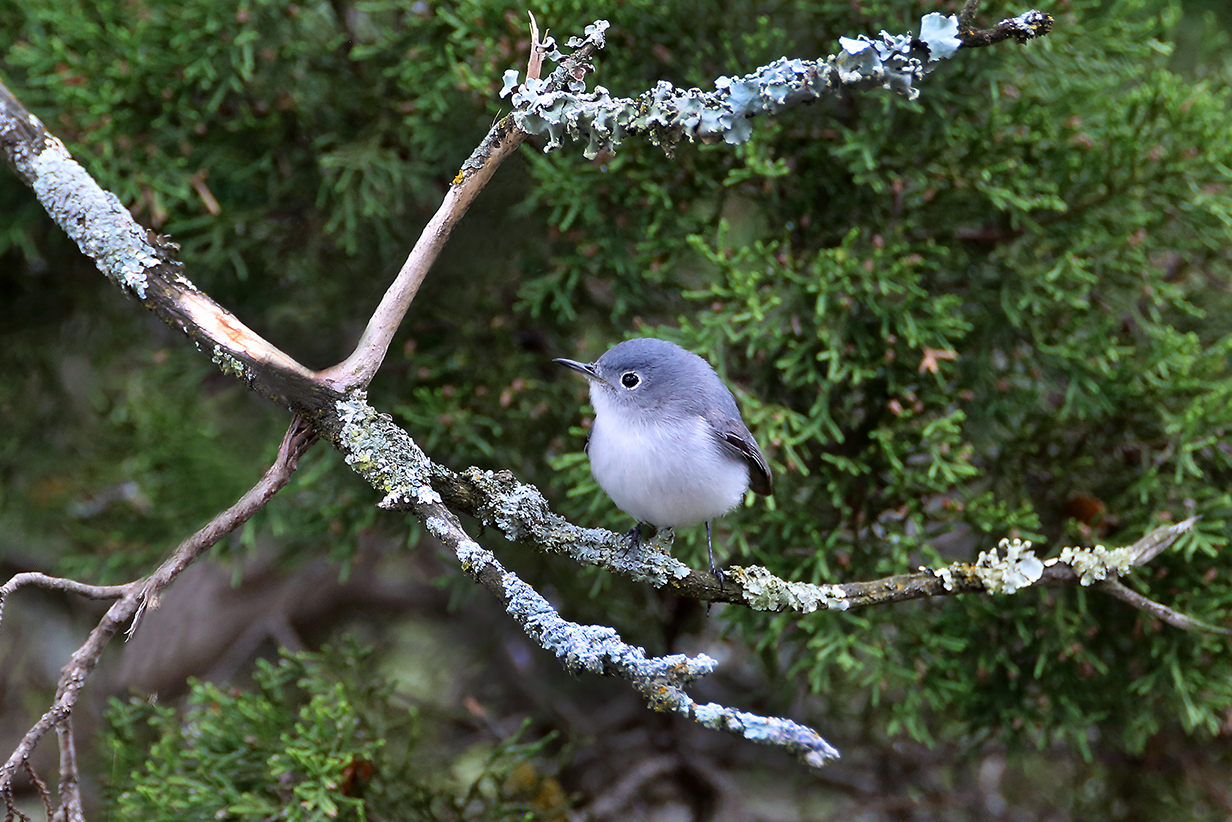
Blue-gray gnatcatcher (female: March 24, 2021)
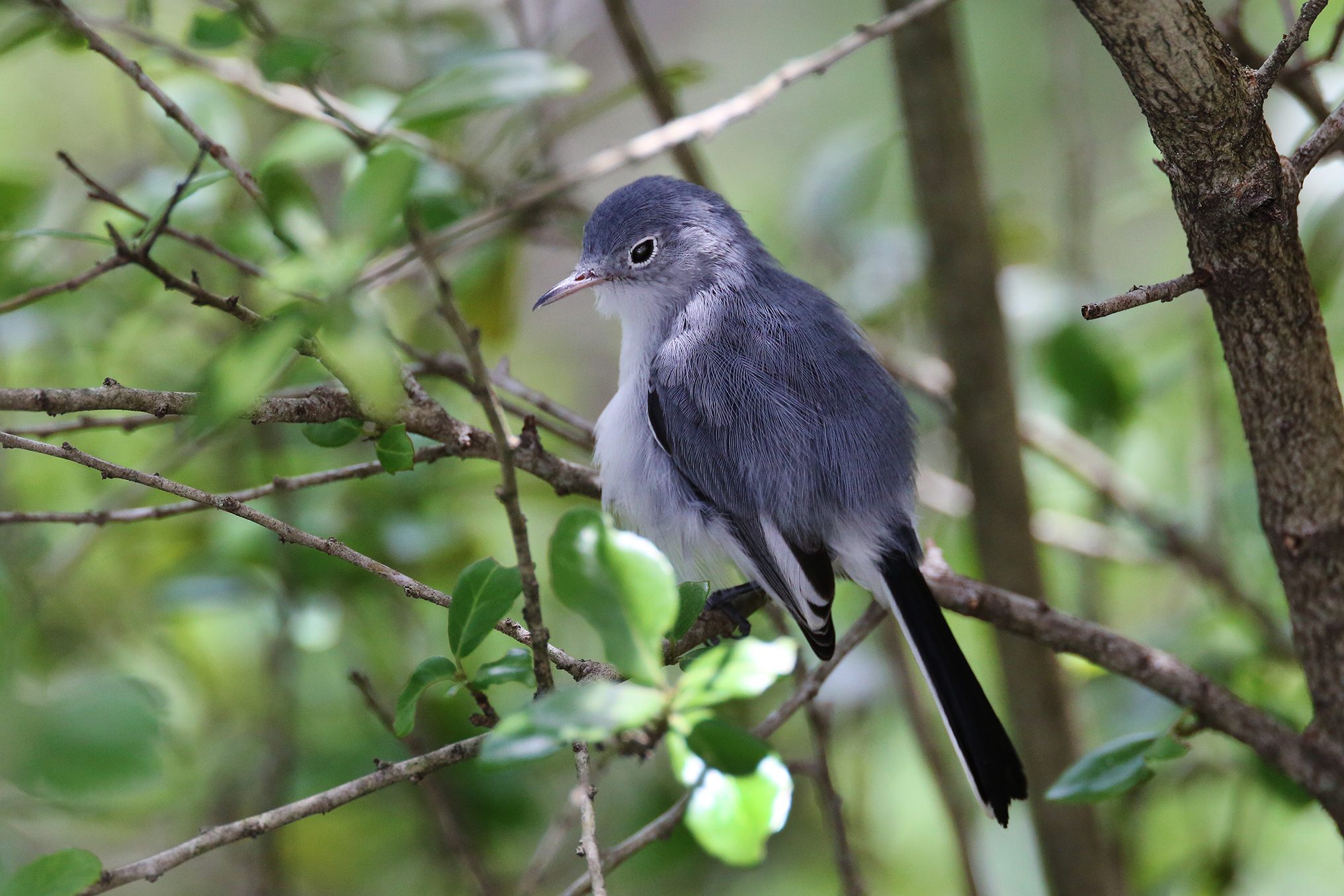
Blue-gray gnatcatcher has been here often in summer 2021.
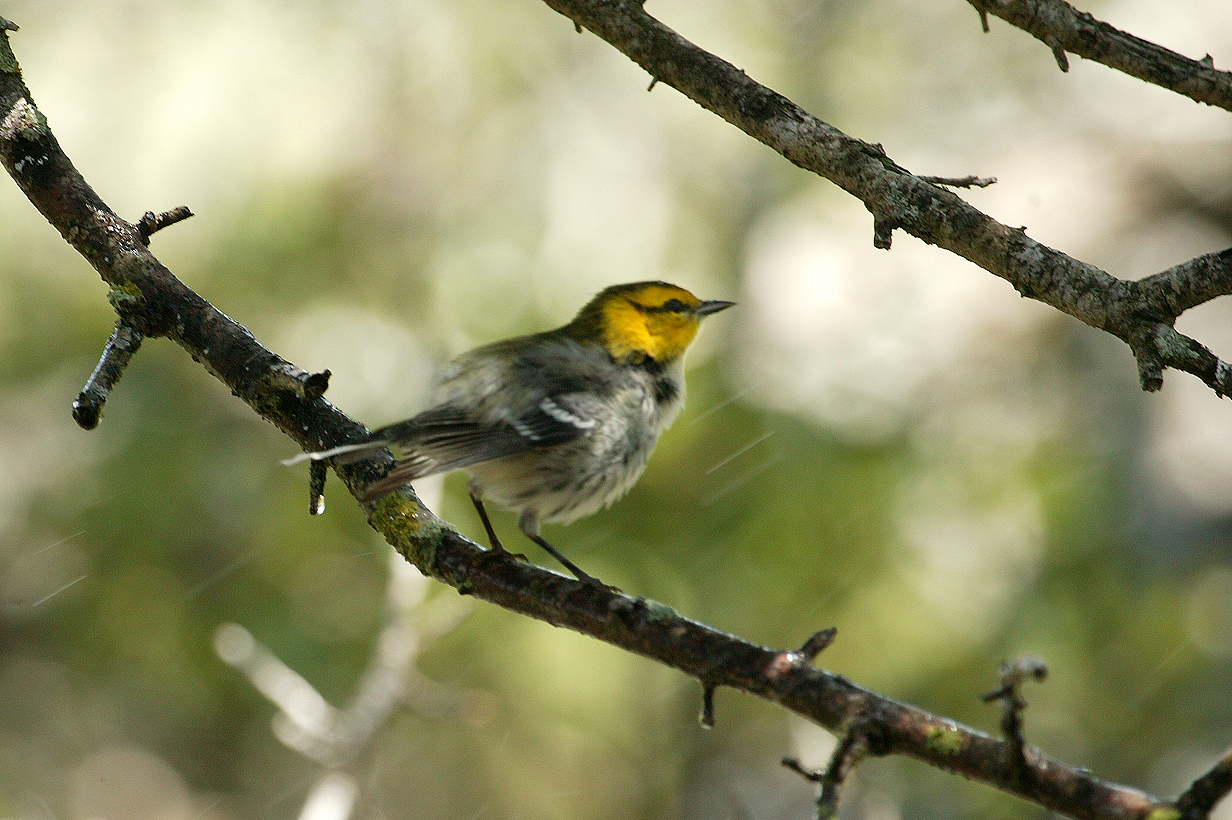

Golden-cheeked warbler enjoying our mister on a hot day in spring. (These famous Texas rarities breed as close as Pedernales Falls State Park, but our property does not have enough mature oak trees. Still, a few birds pass through on migration every year, and this one stayed for a whole day to keep cool.)
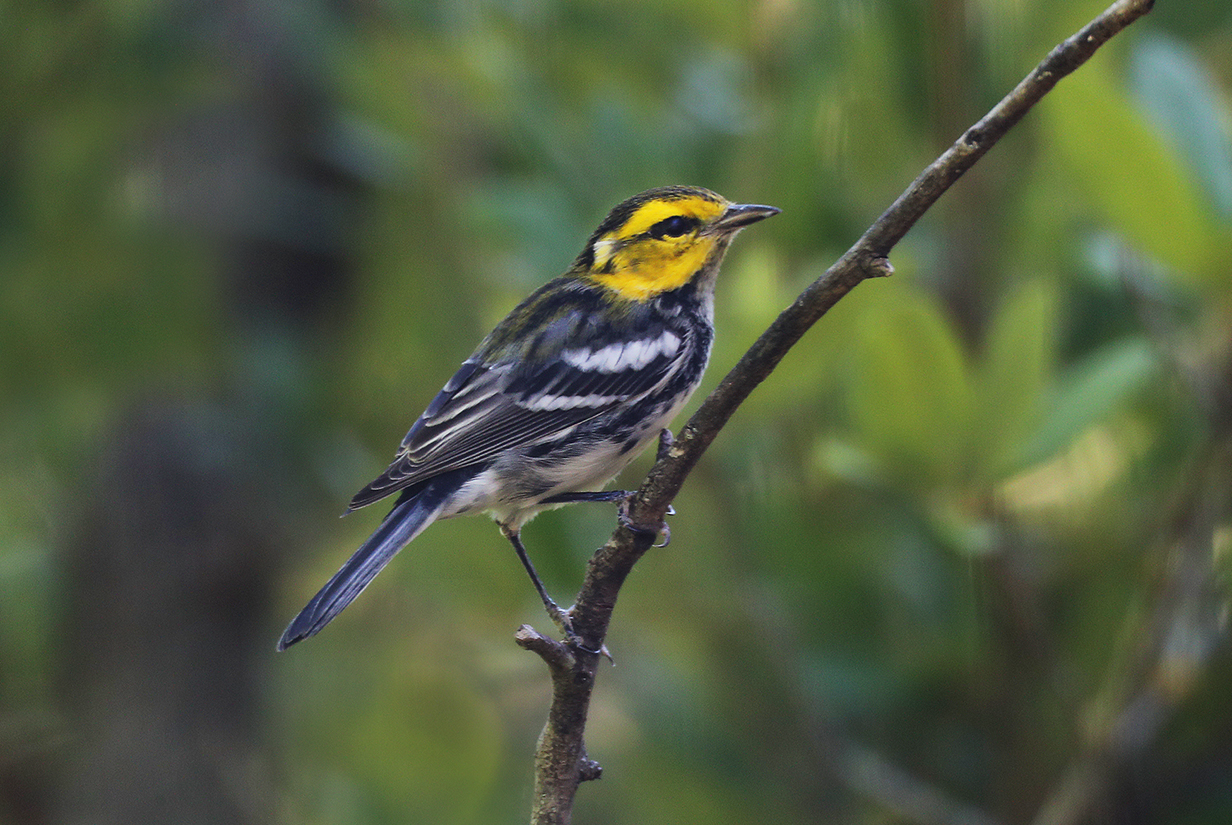
Golden-cheeked warbler adult (post-breeding dispersal or on its way back to Mexico -- June 10, 2020)

Golden-cheeked warbler (This is the most beautifully marked male that has shown up at our house, on a hot summer day in 2020, on his way back to Mexico.)
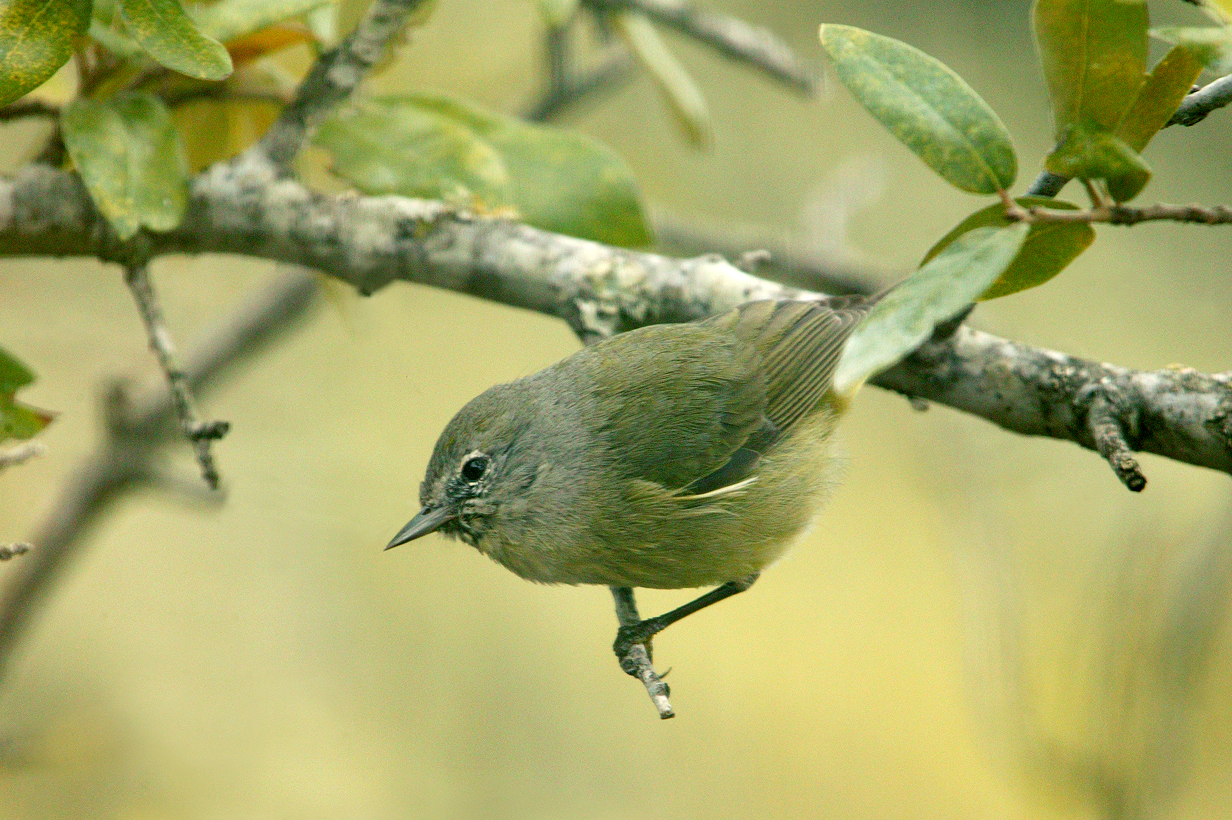
Orange-crowned warbler (winter resident)
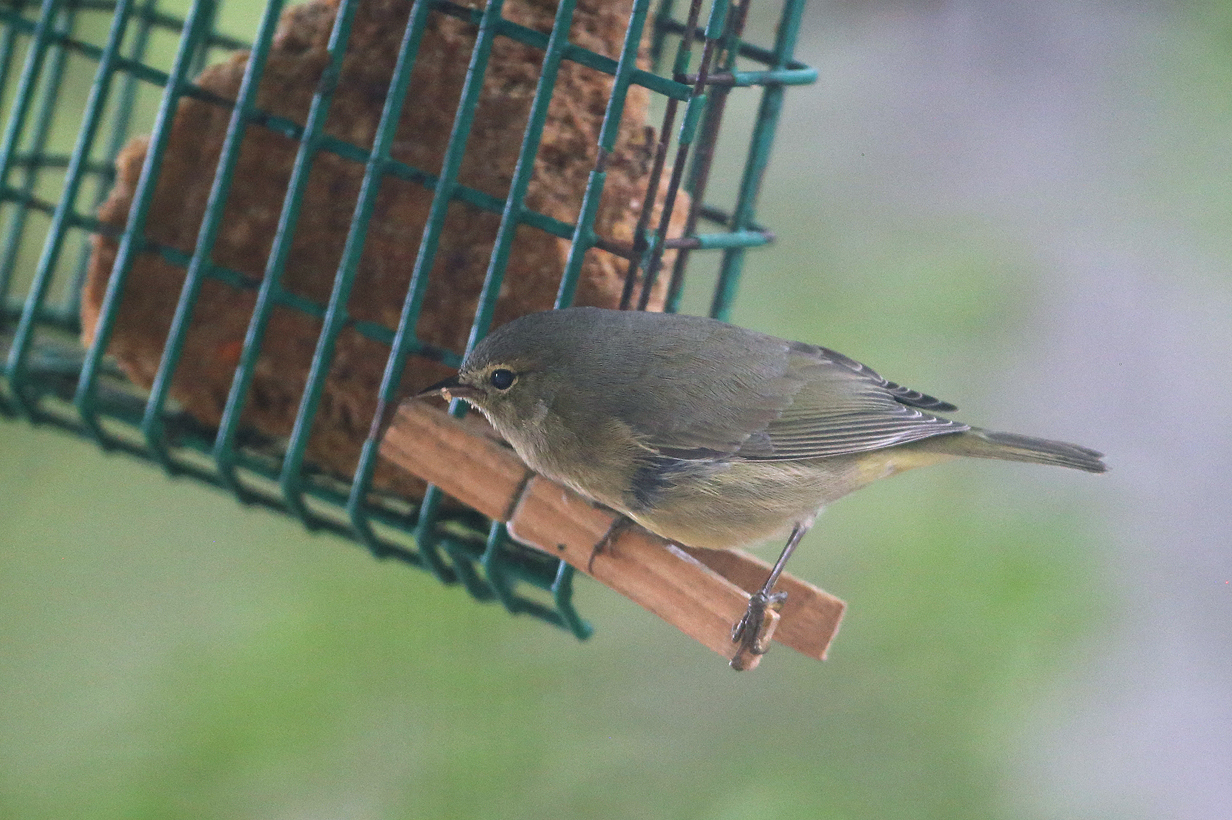
Orange-crowned warbler in January 2016

Orange-crowned warbler in January 2019 (We seriously like warblers. We had two of them for all of winter 2019/2020: they like our seedcake.)
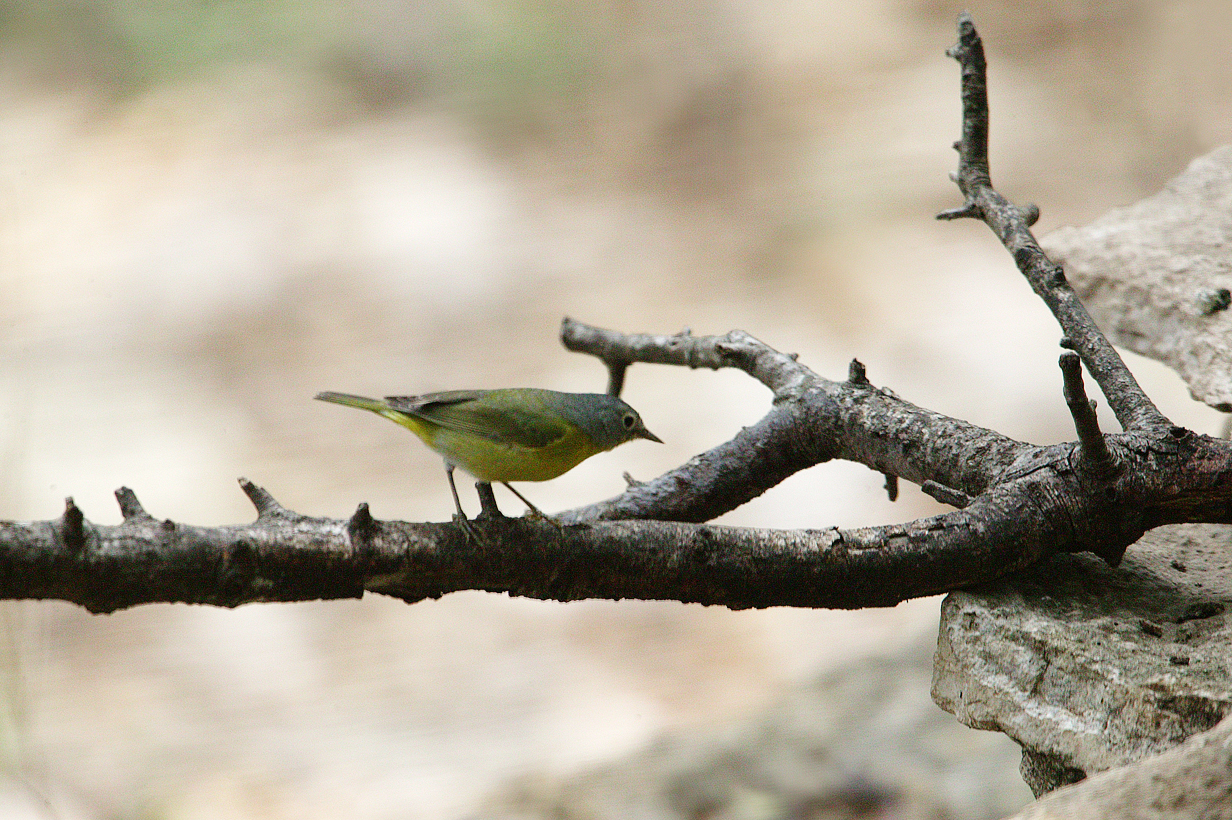
Nashville warbler (This is our most common spring and fall migrant warbler.)
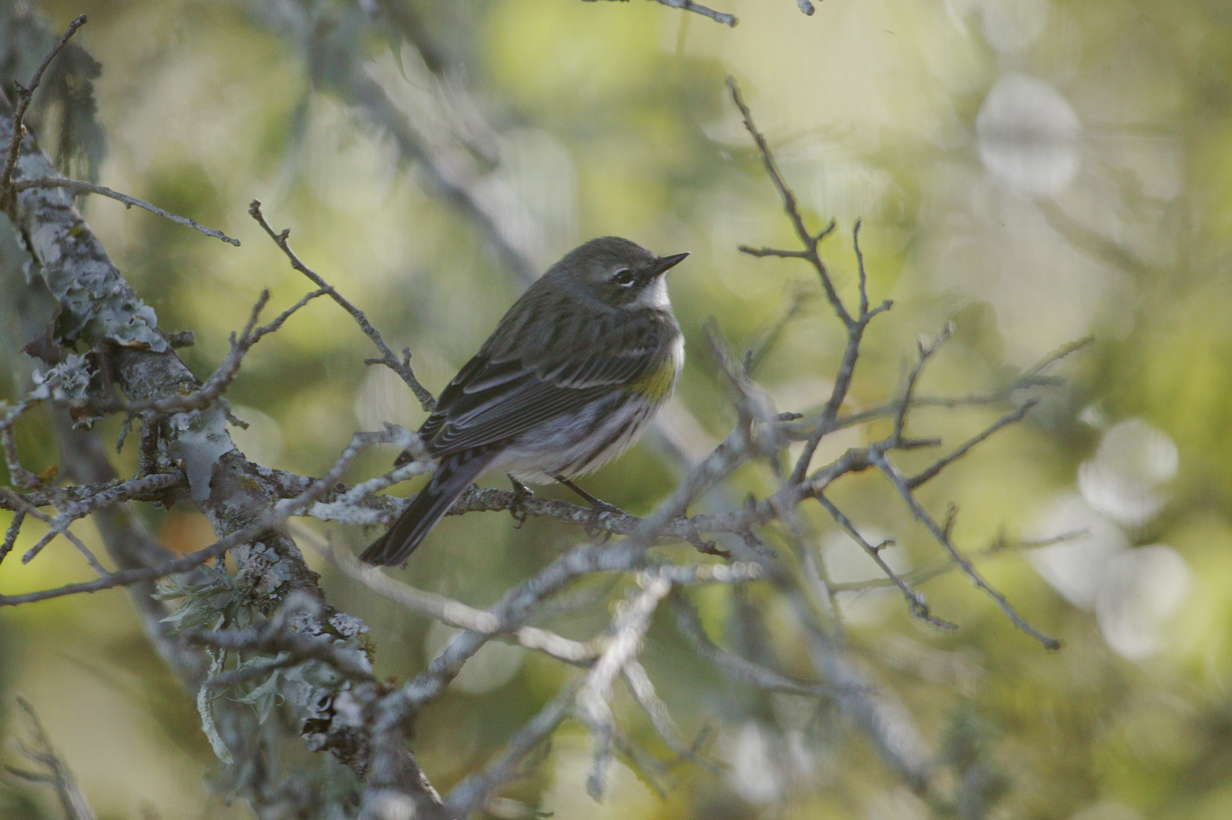
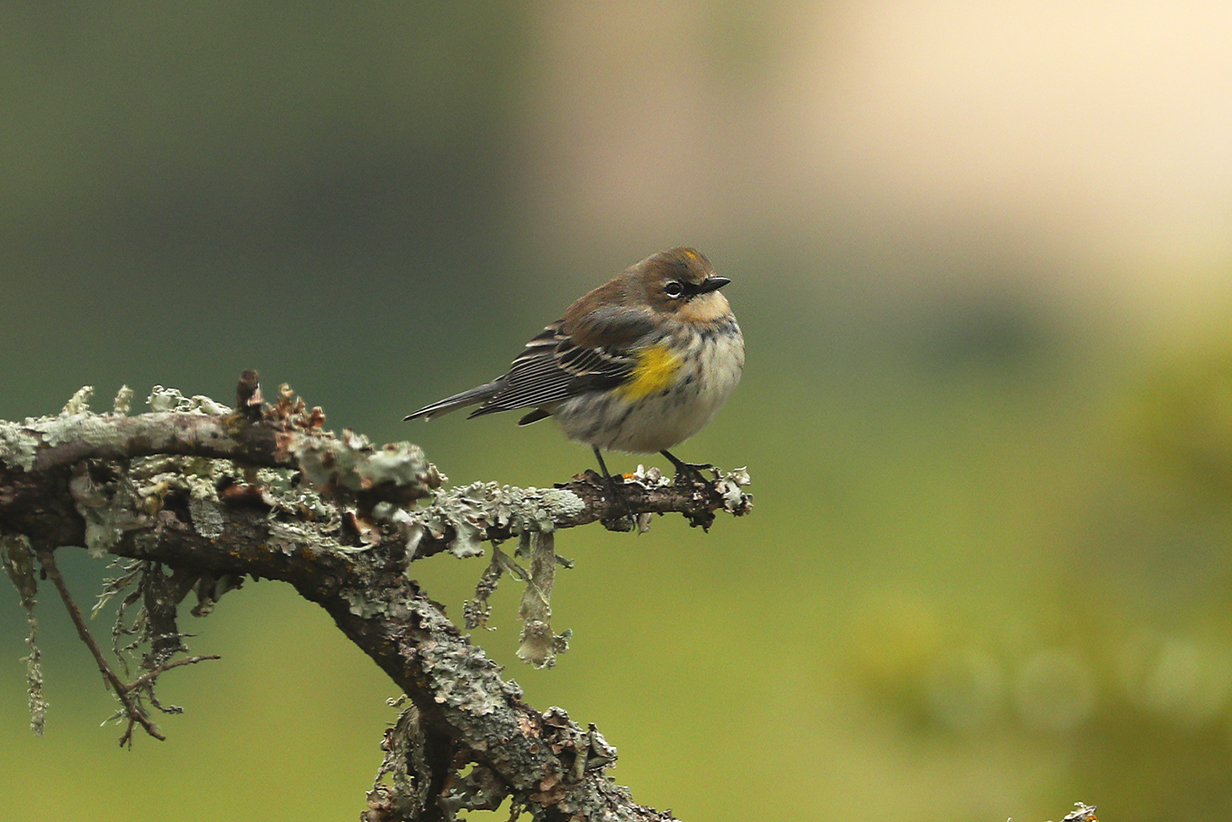
Yellow-rumped warbler (Common Texas resident in winter; has appeared at our house several times. Both of these are the "Myrtle warbler" subspecies, Setophaga coronata coronata, in winter plumage.)
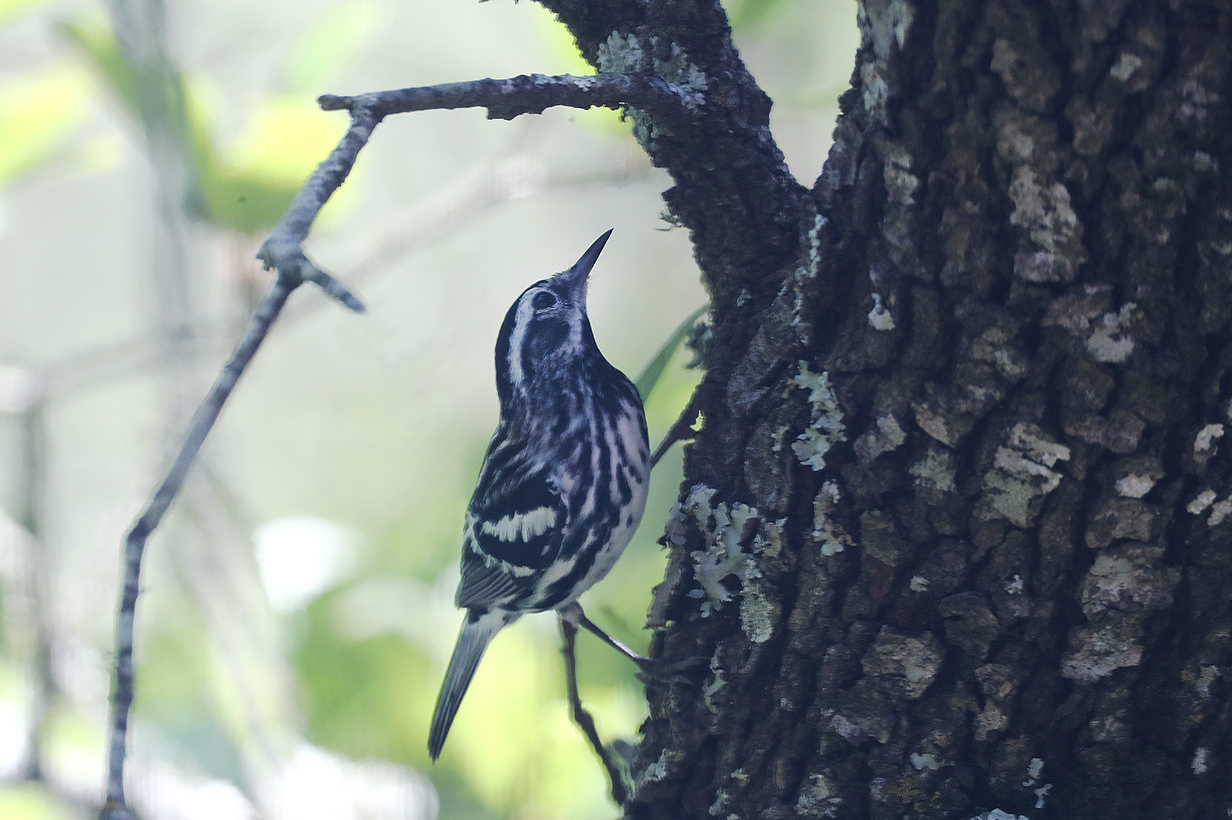
Black-and-white warbler (Sporadic migrant -- seen every couple of years.)
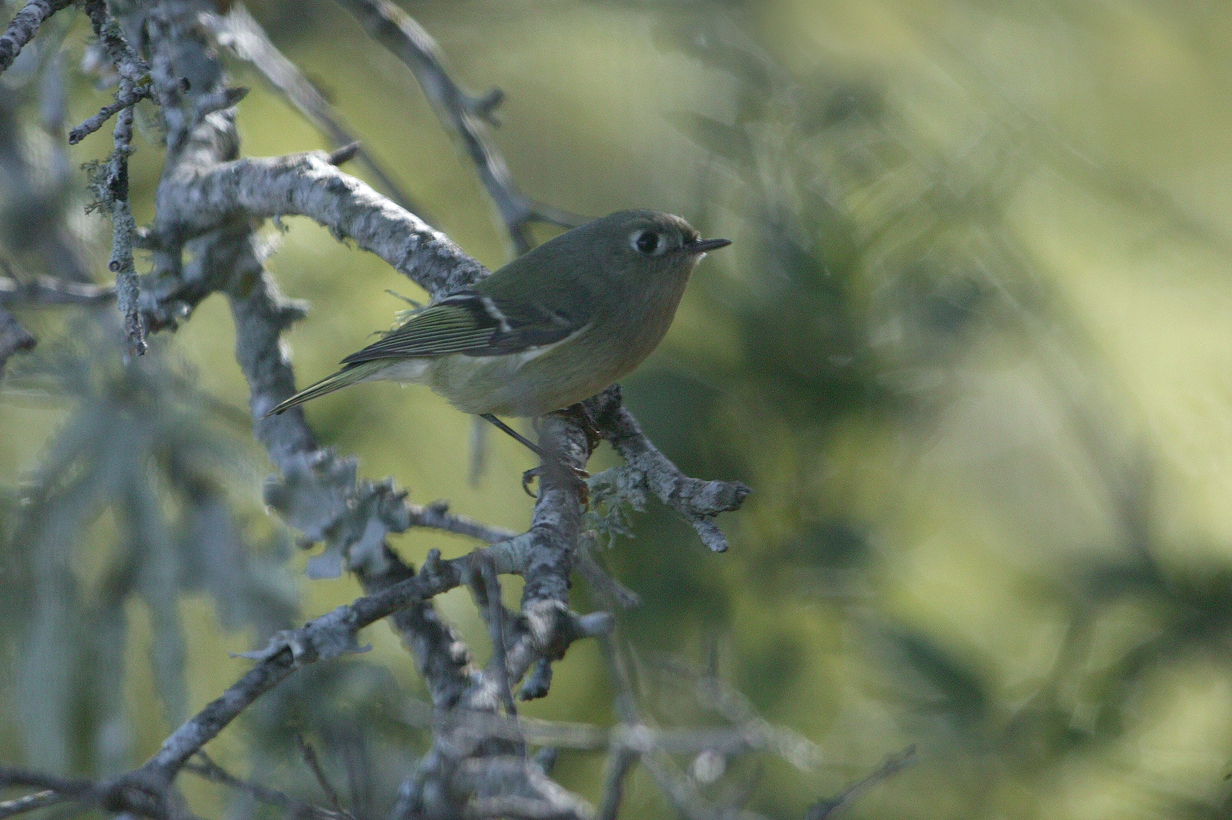
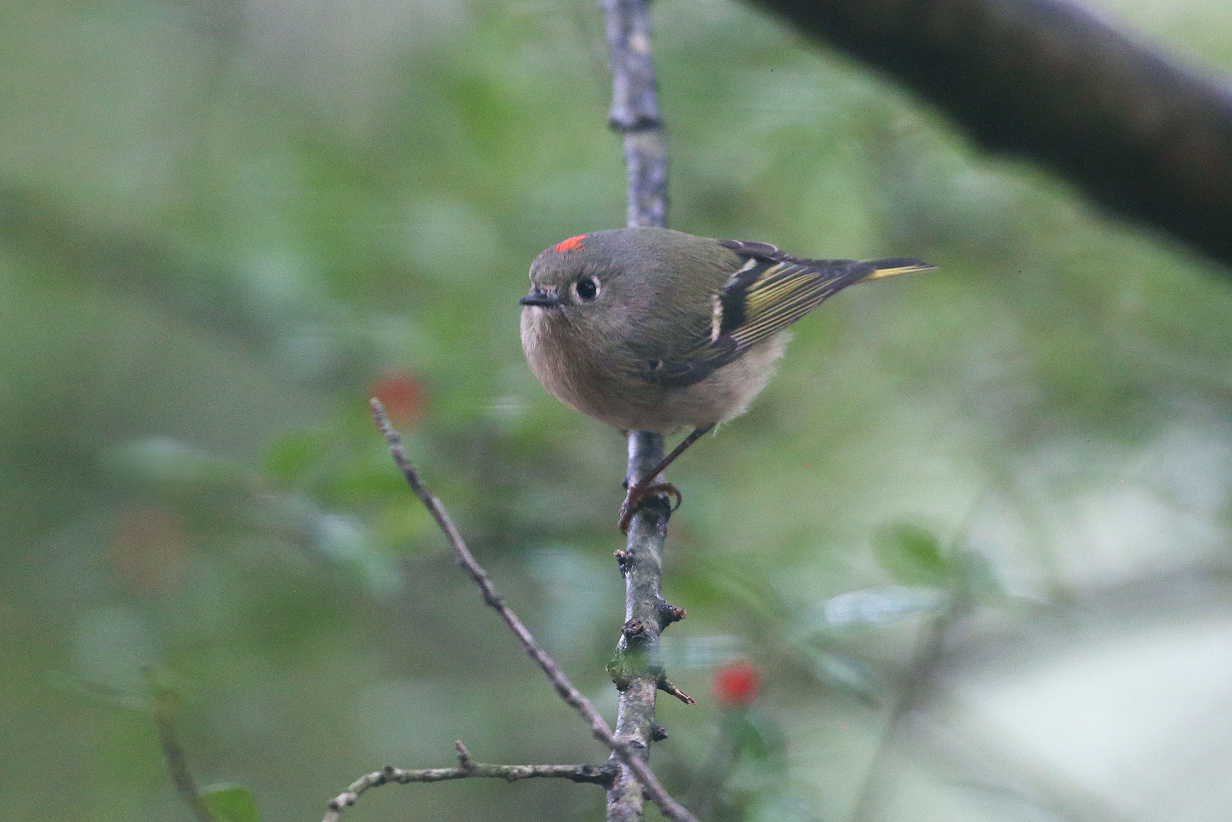

Ruby-crowned kinglet (Annual winter resident -- two birds seen about 5 years apart; the second two pictures show a bird from January 2016).
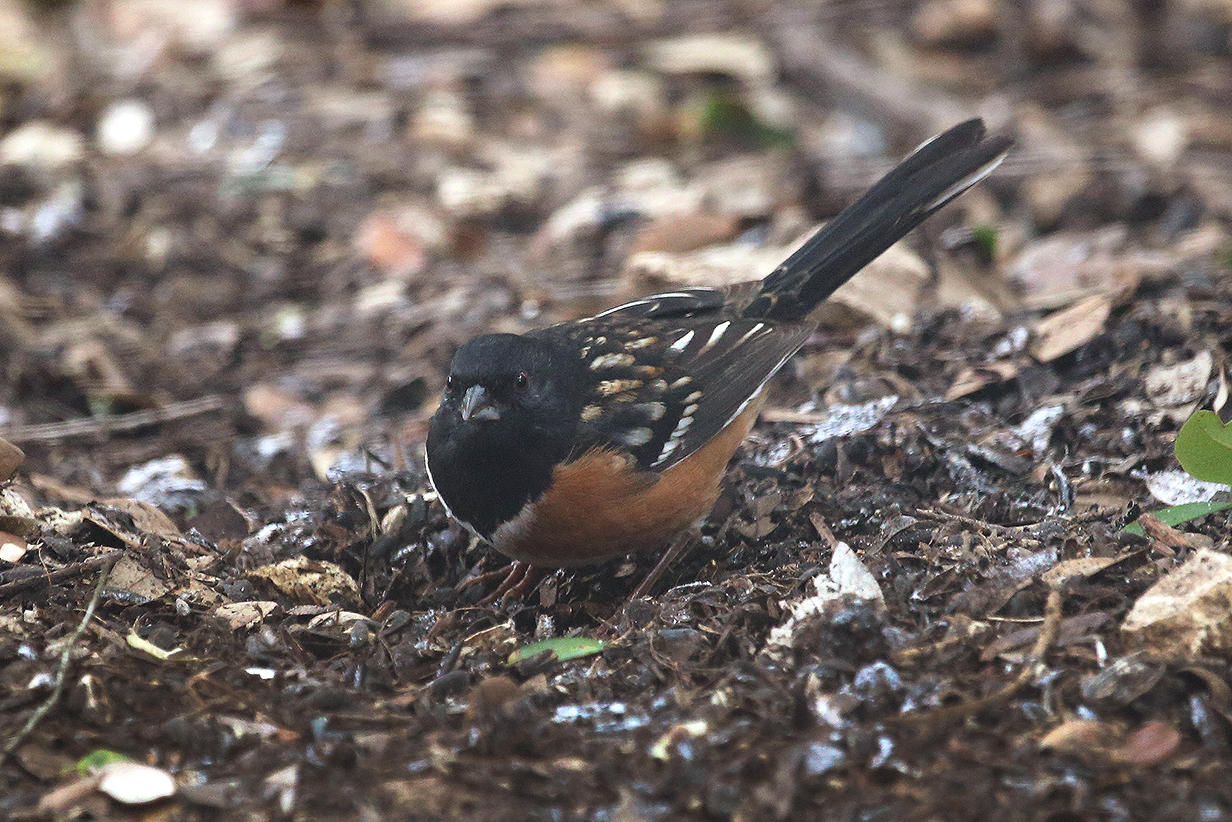
Spotted towhee (sporadic winter resident)
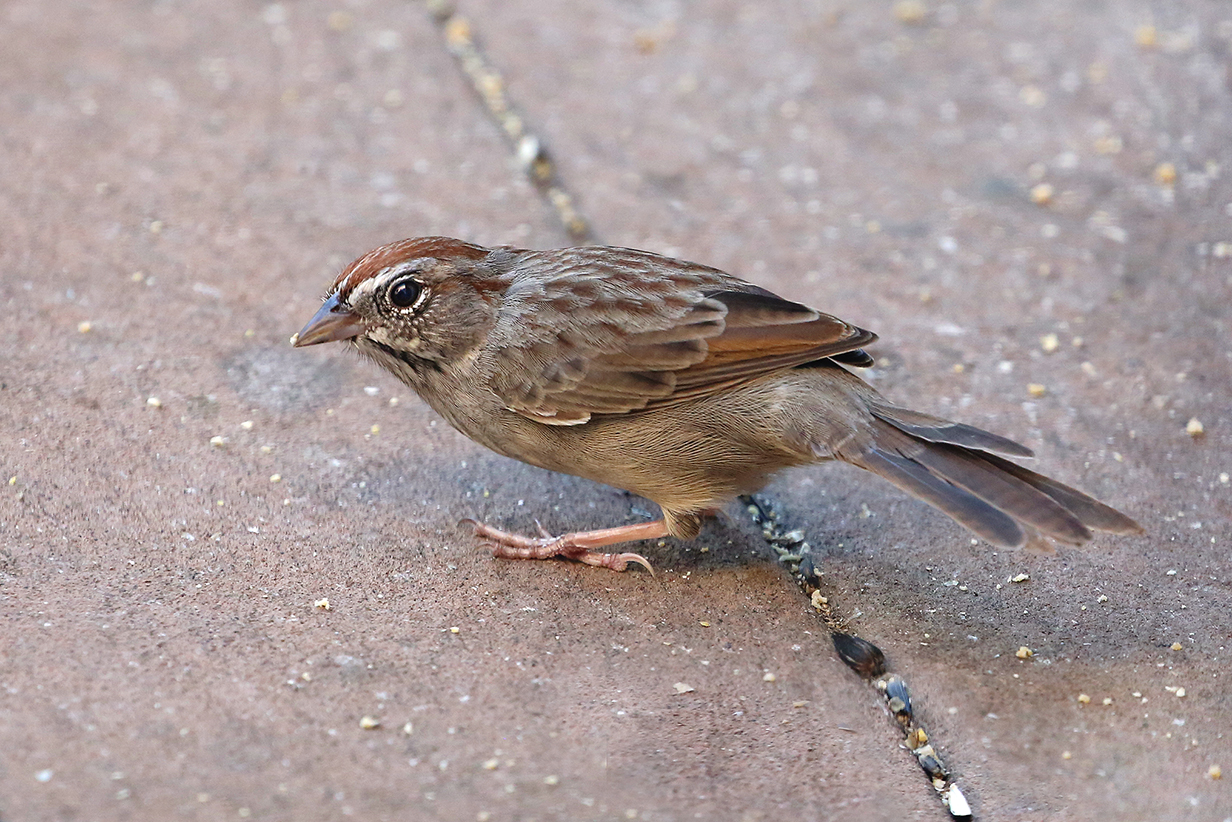
Rufous-crowned sparrow (This was the most common sparrow at our house, year-round, for the first 10 years that we lived here, but we had not seen one now in almost a decade, partly because of travel but mainly because most bird populations are crashing. In summer and fall 2020, a few birds have shown up again. We are glad to see them.)
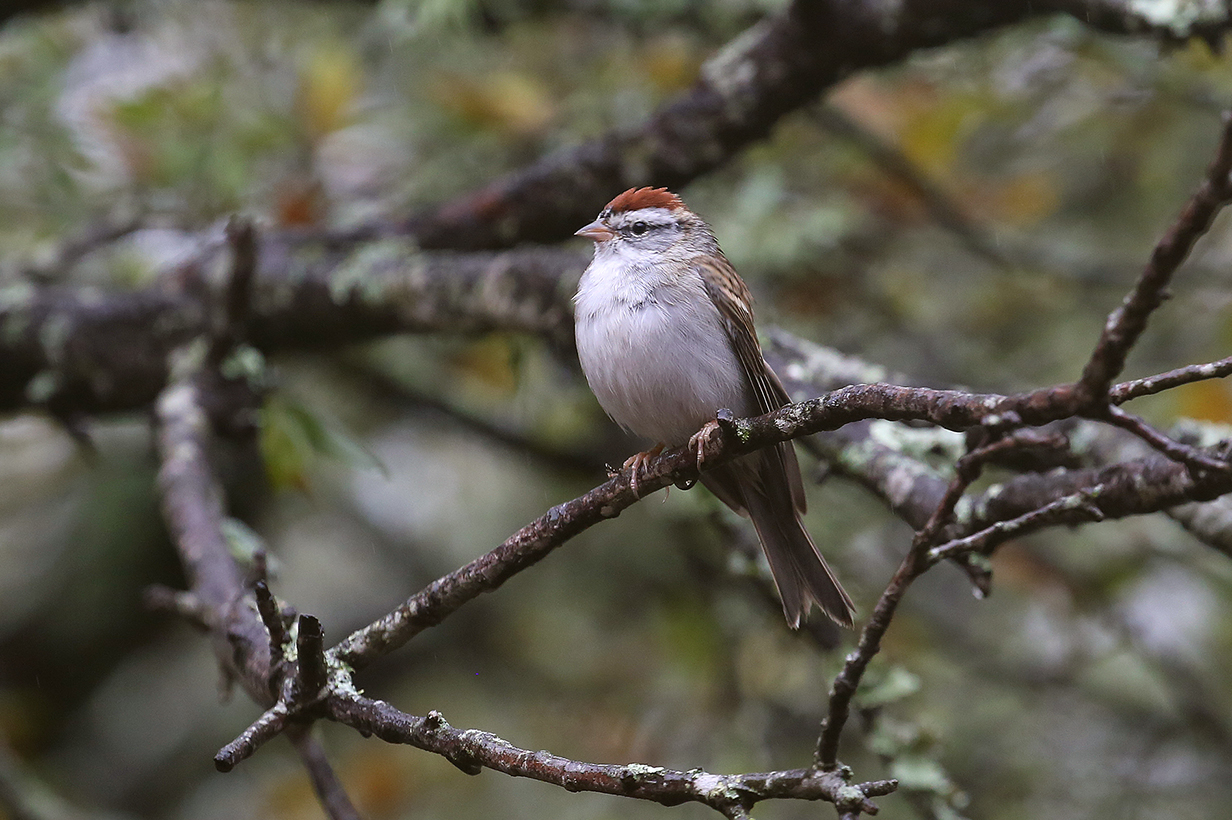
Chipping sparrow (winter resident -- sometimes we have more than 100.)
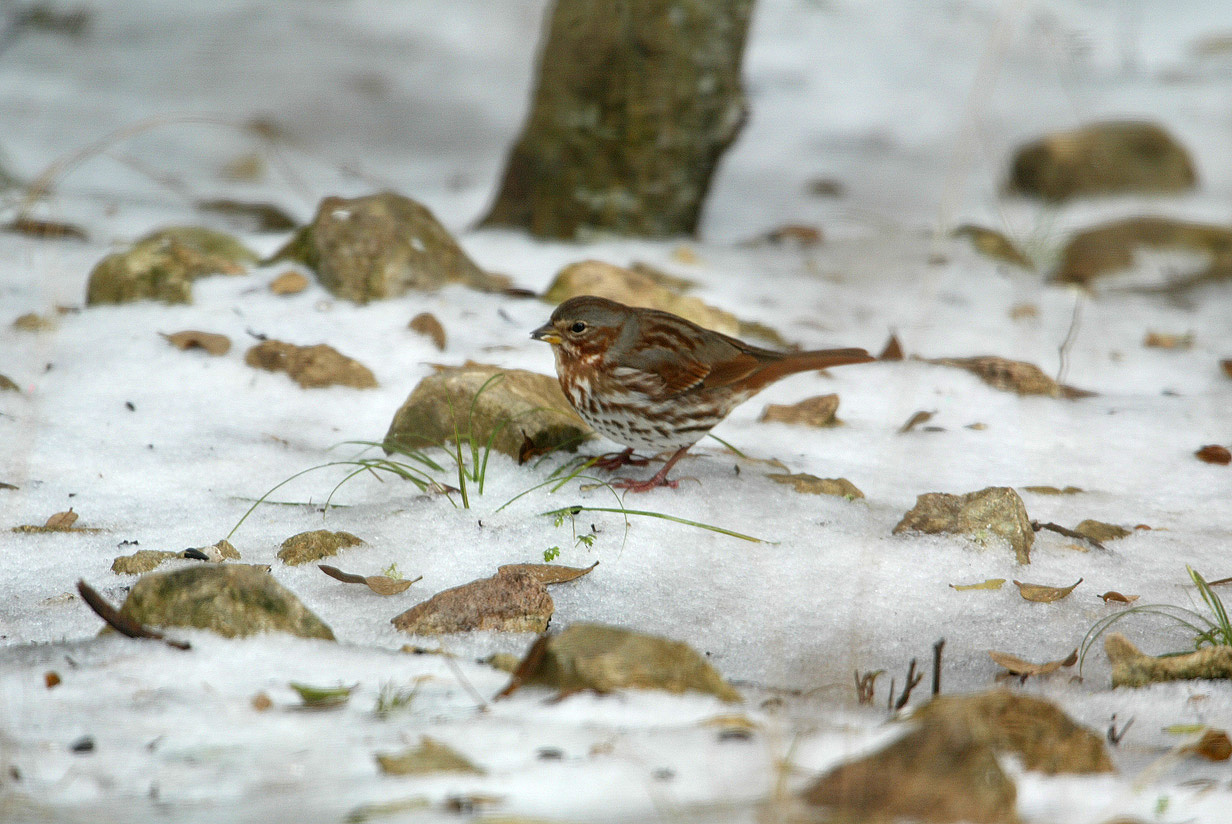
Fox sparrow (rare winter visitor in very cold weather)
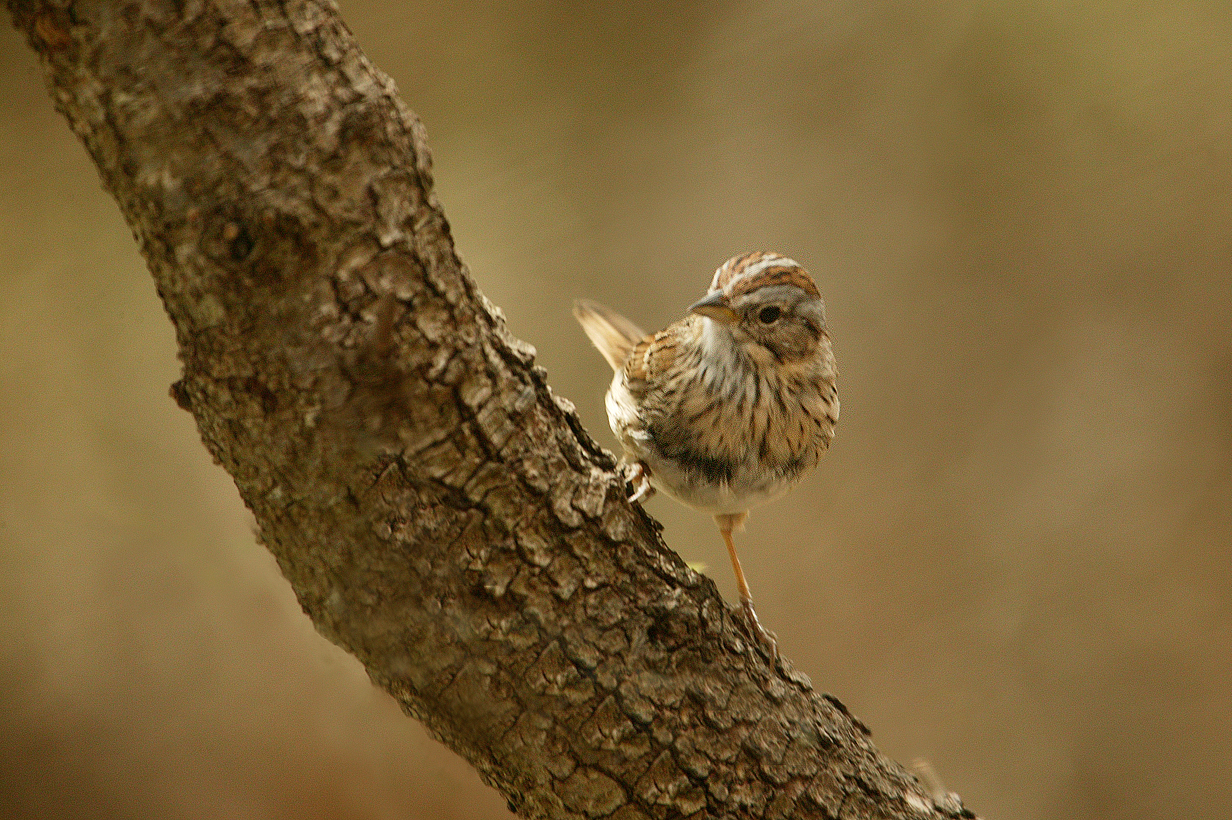
Lincoln sparrow (spring and fall migrant; occasional winter resident)
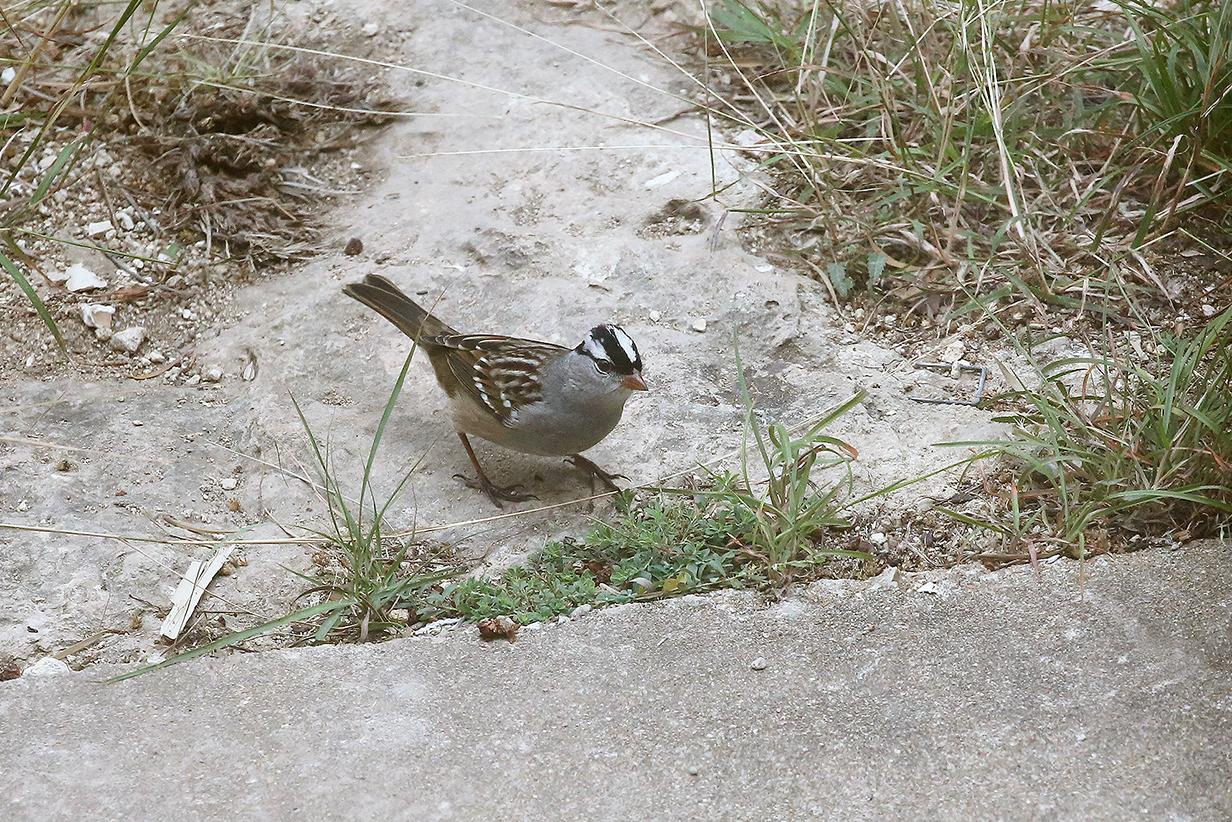
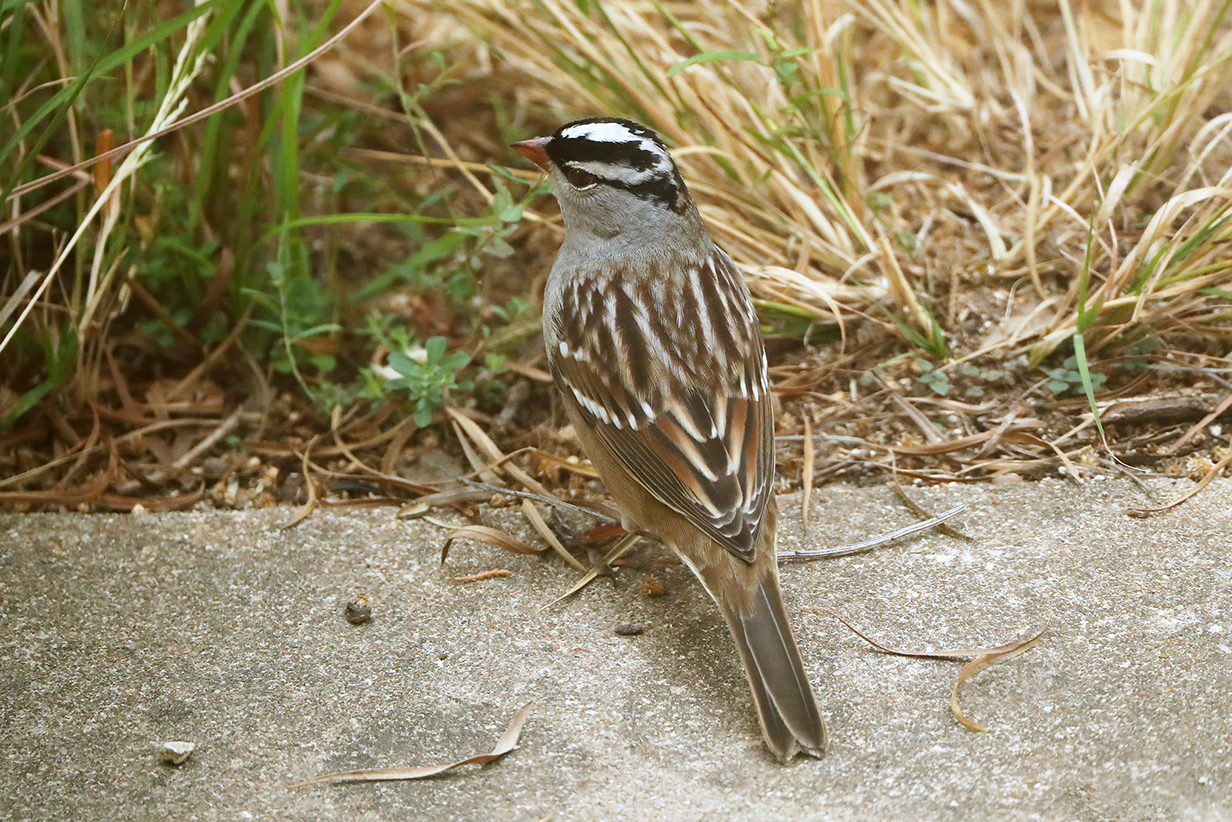
White-crowned sparrow (This male was part of a flock that stayed for a few days in November 2020: the first time that we have seen this species here in many years.)
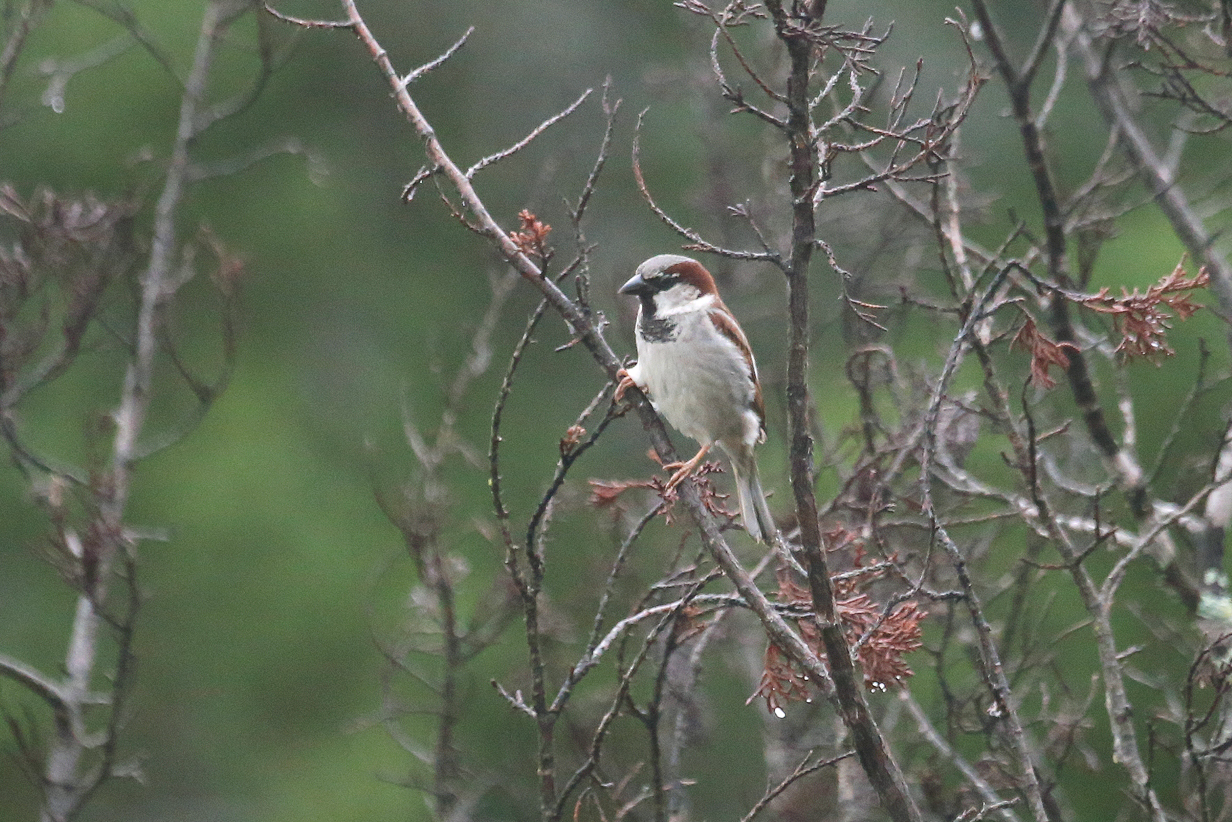
House sparrow (A small family group has appeared at our house only twice in 20 years.)
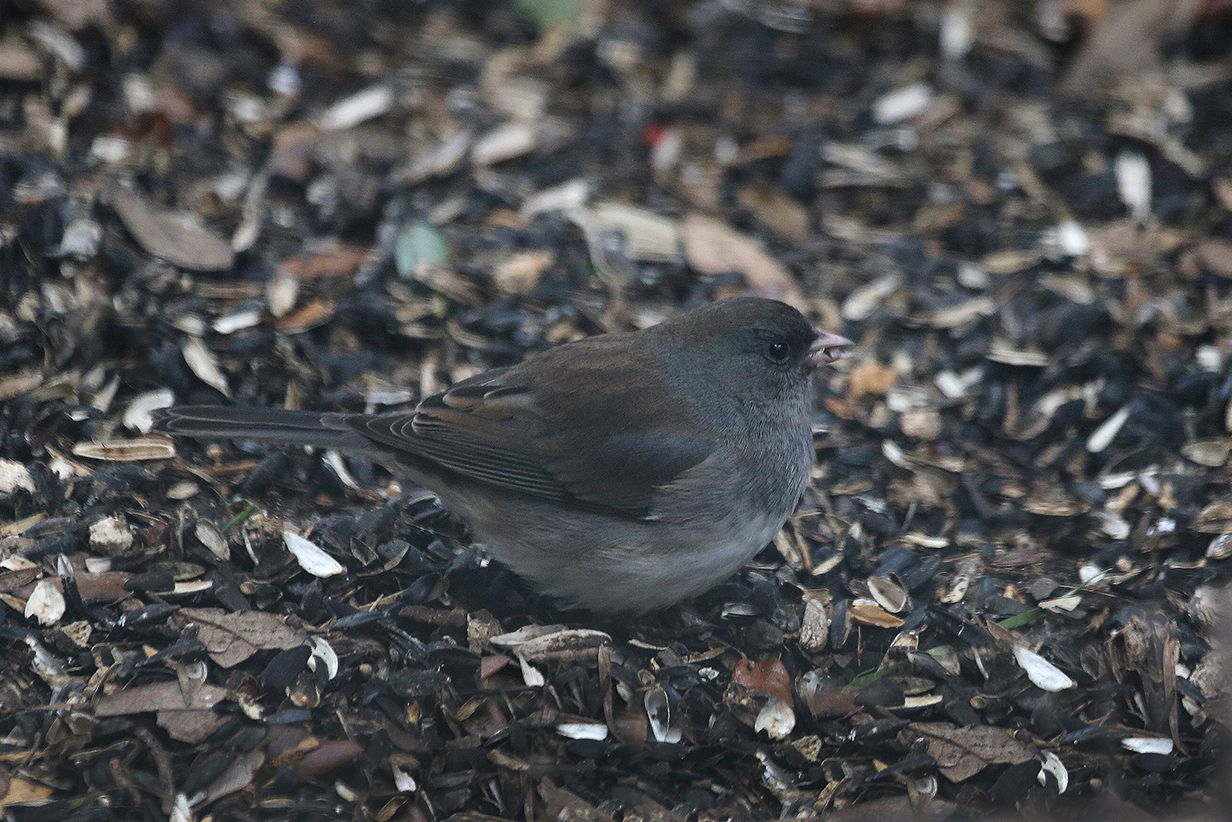
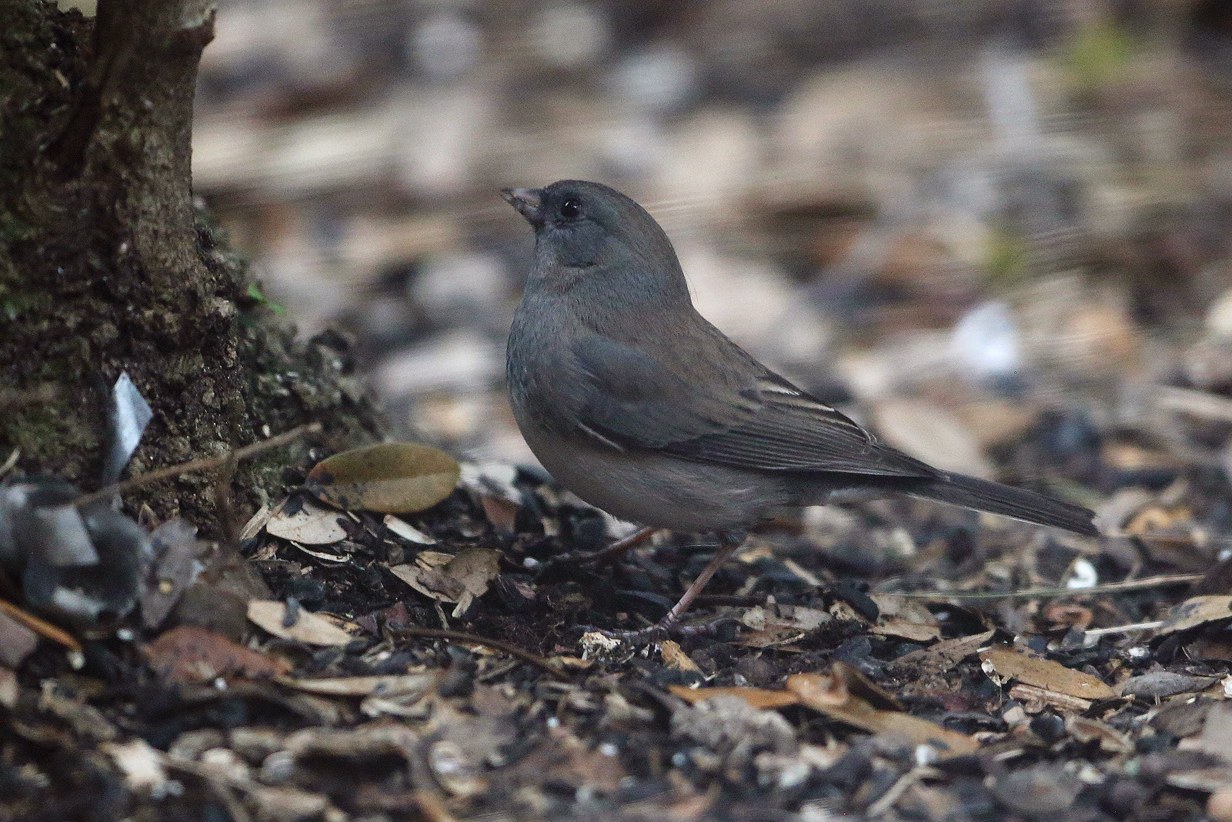
Dark-eyed junco (You can always tell when the temperature drops near freezing. That's when the juncos show up.)
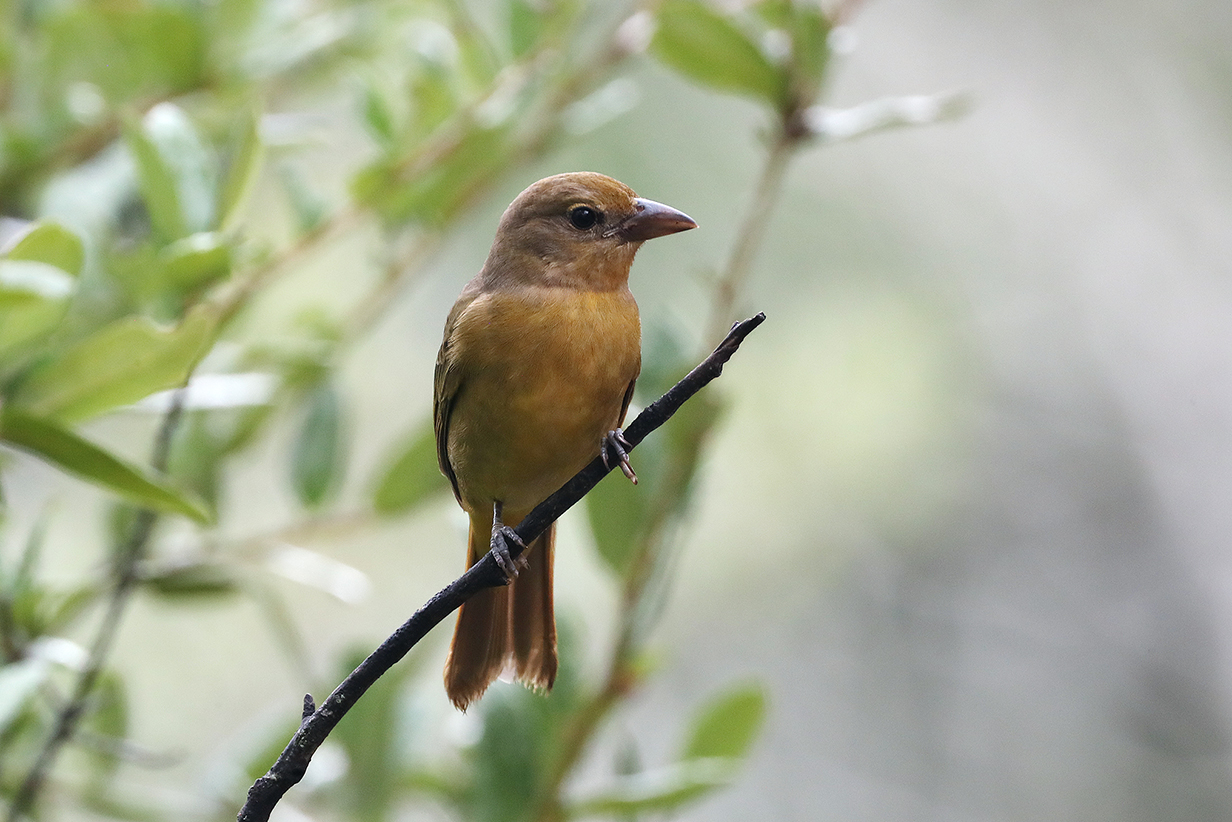
Summer tanager (sporadic during post-breeding dispersal. This is a female. We have seen males at Pedernales Falls State Park, a few miles away, but -- at least: definitively -- not at our house until May 17, 2021, below.)

Summer tanager (juvenile in summer 2020)
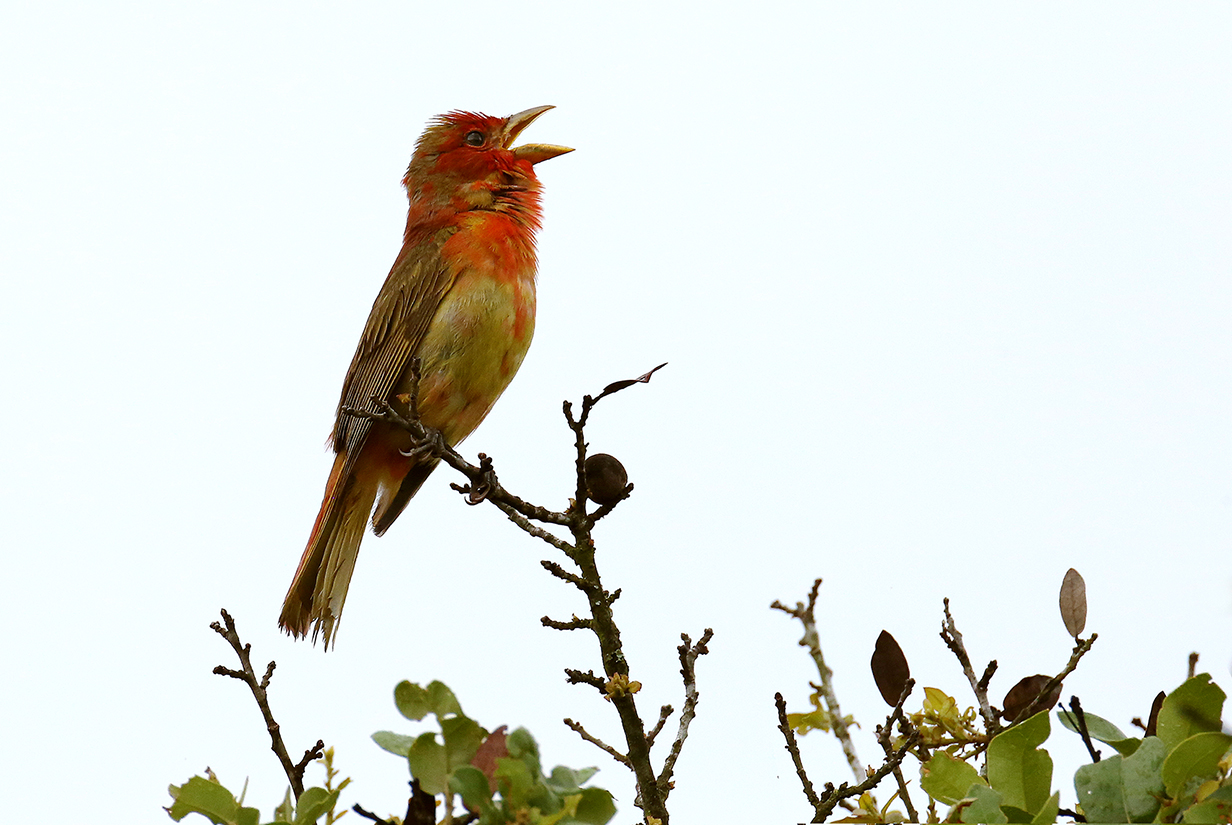
Summer tanager (young male still getting adult plumage but already claiming territory and advertising for a mate, May 17, 2021)
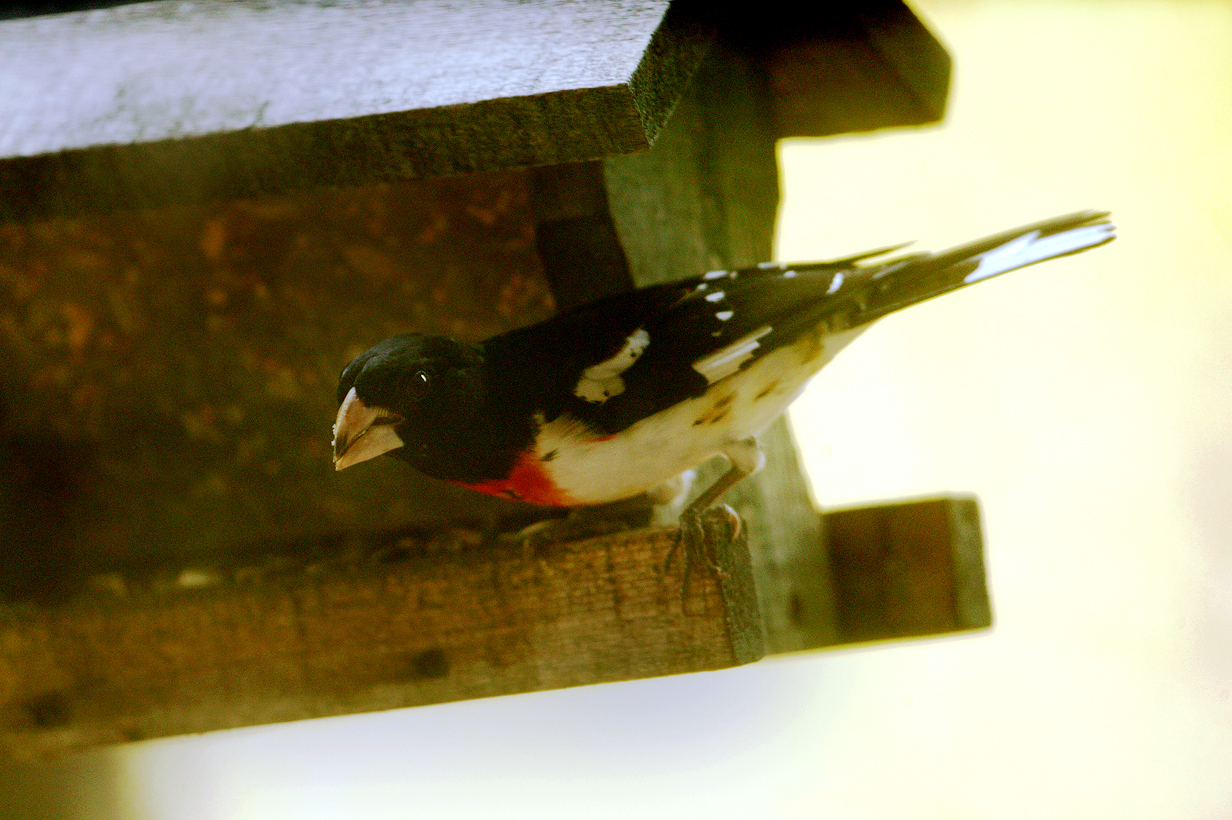
Rose-breasted grossbeak (occasional spring migrant)
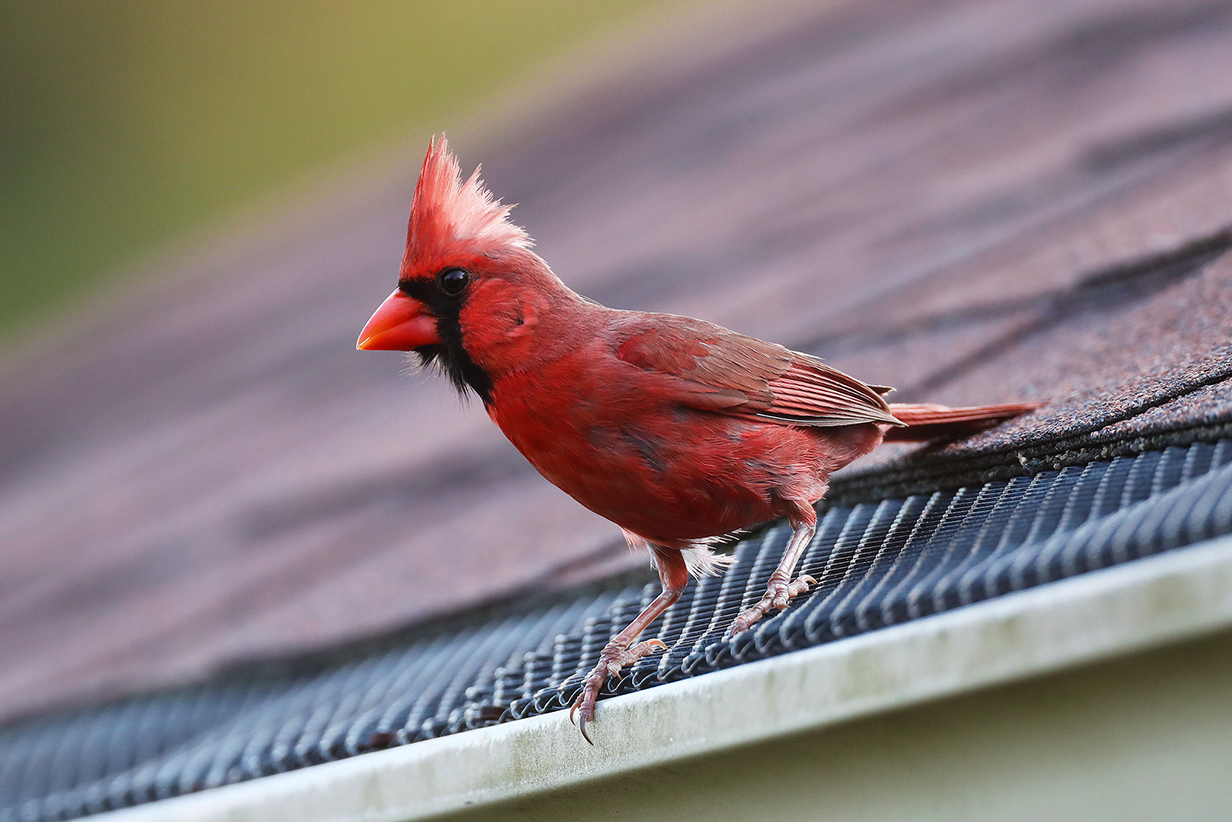
Northern cardinal (male) (breeding resident -- 2020 was a great year!)

Northern cardinal (female) (If you are a sunflower seed, resistence is futile.)
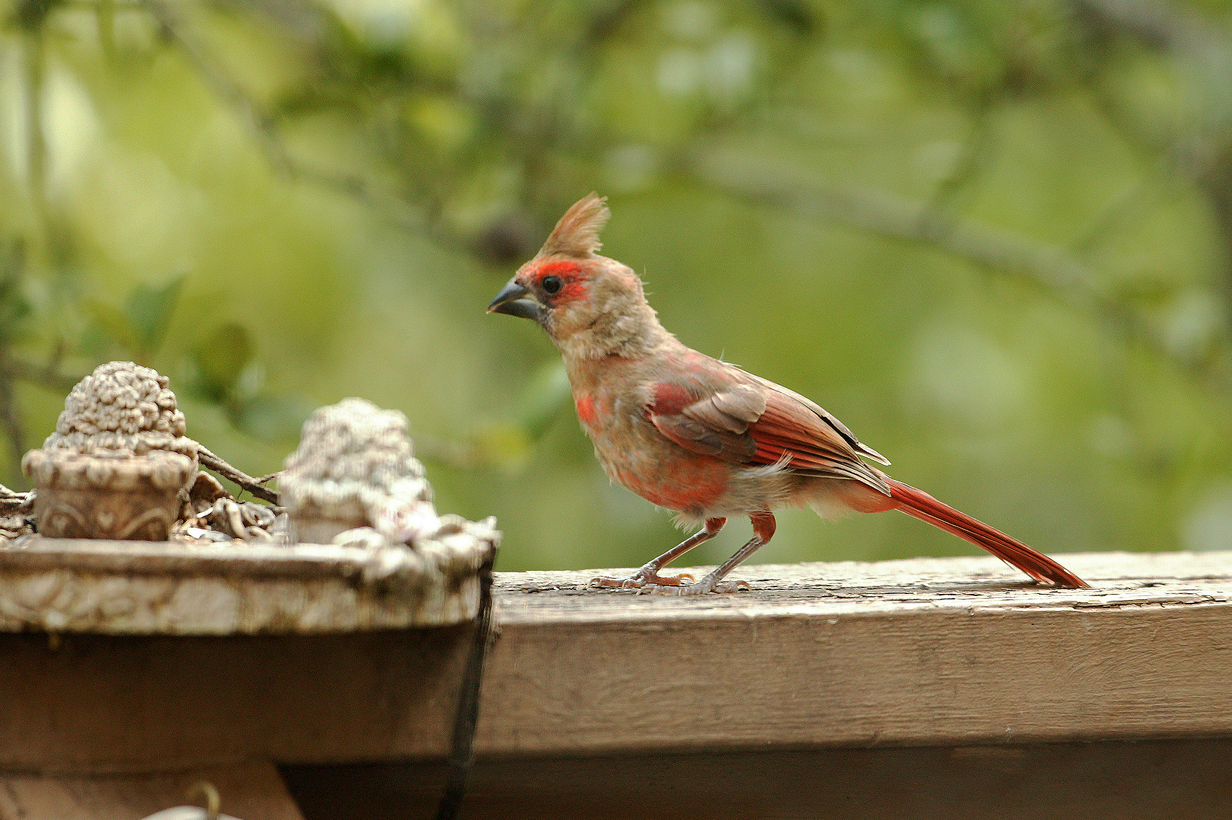
Northern cardinal: The embarrassment of adolescence

Indigo bunting (fairly common spring migrant)
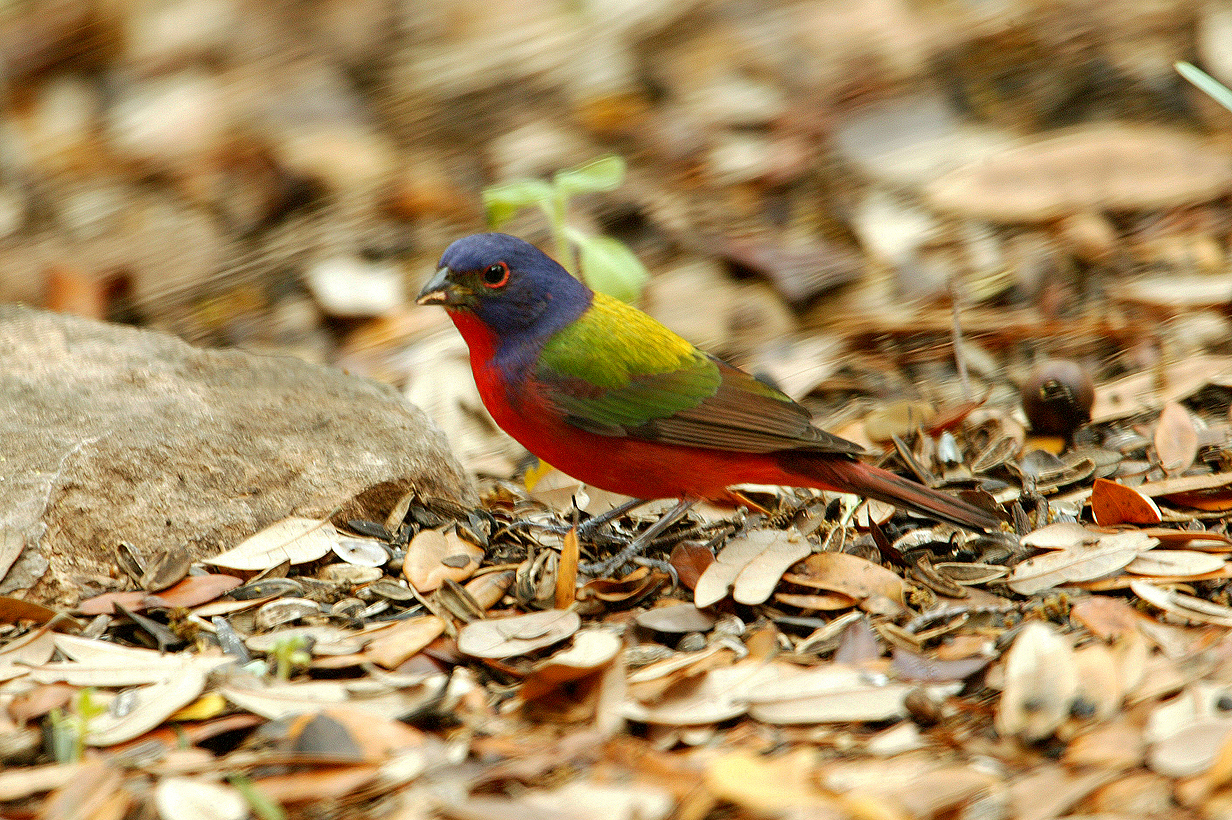
Painted bunting (breeding summer resident -- this is most definitely a male)
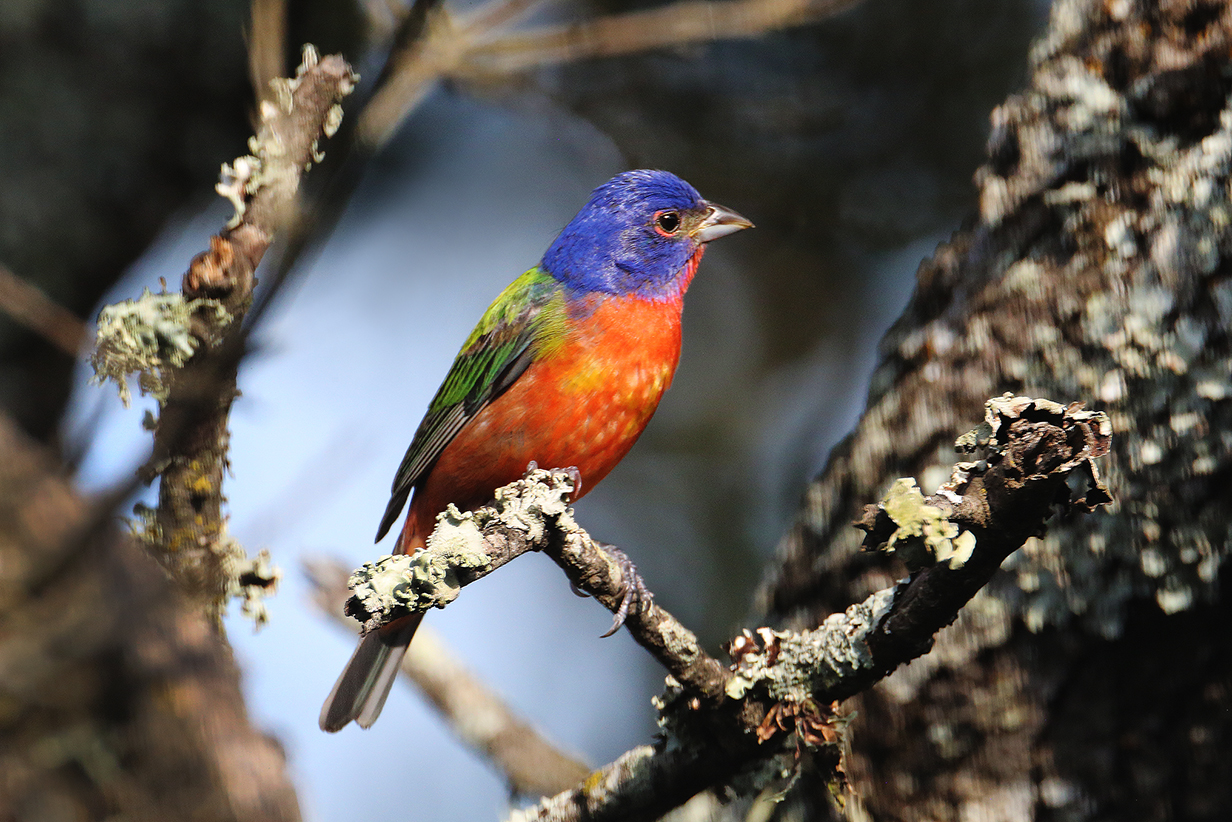
Painted bunting have nested successfully again in 2021 -- the whole family comes to feed every day.
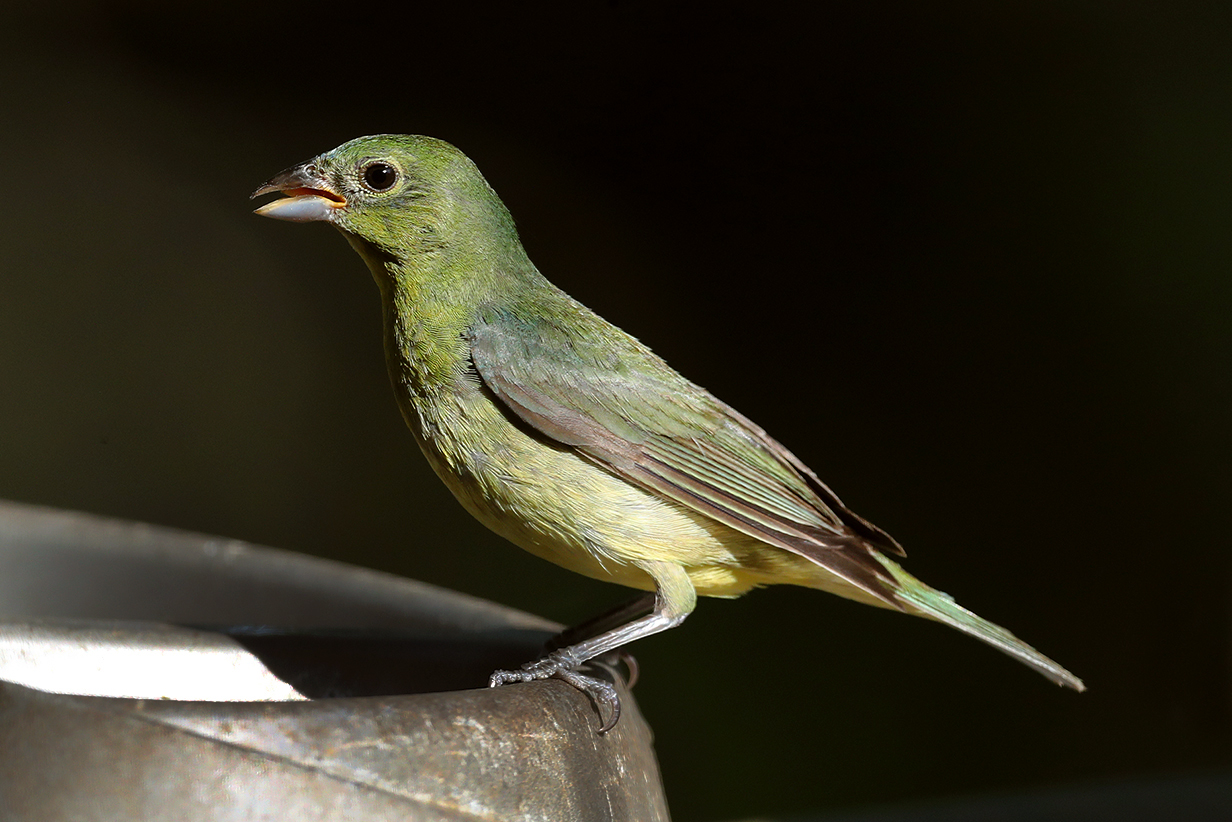
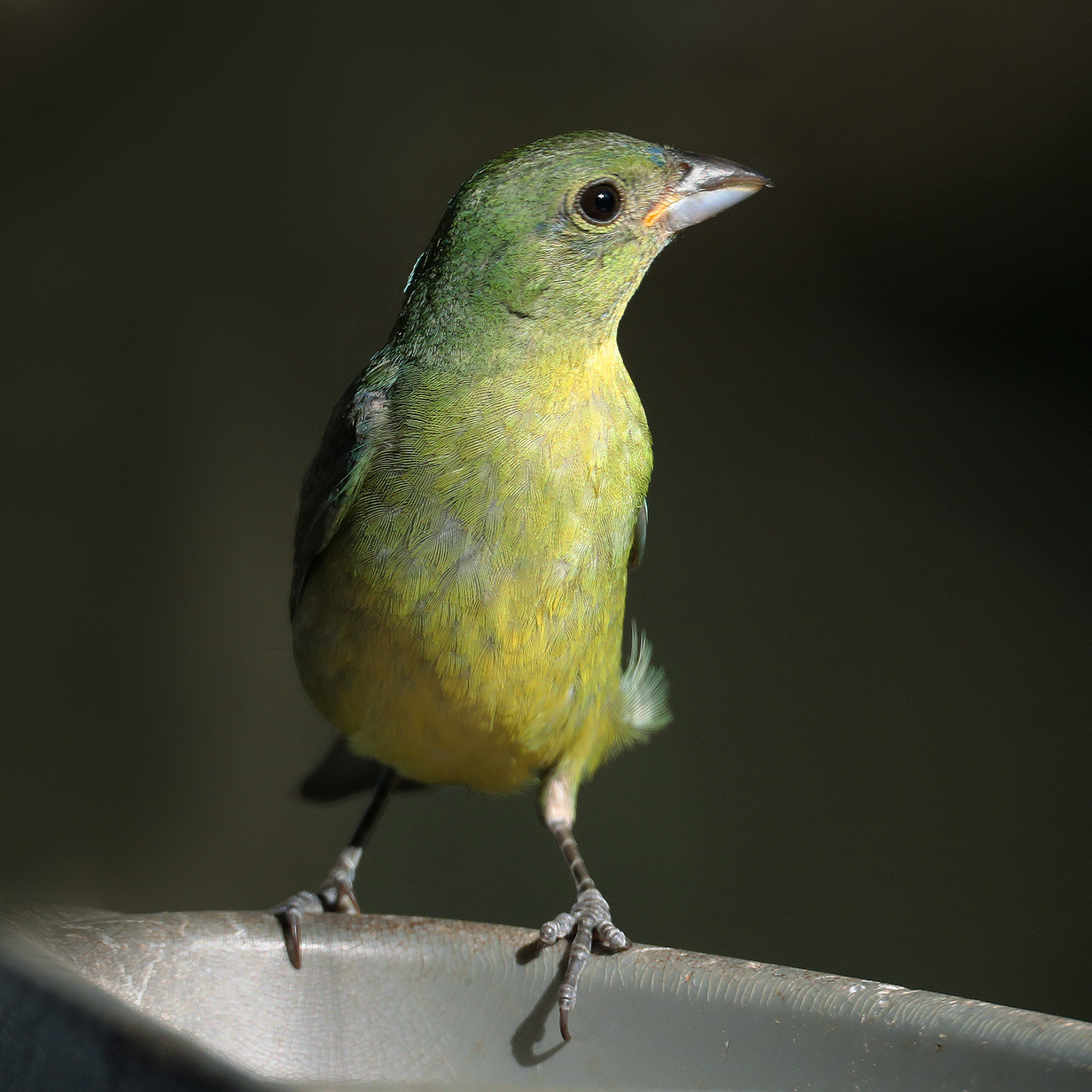
Painted bunting (females are all cryptic green and yellow)
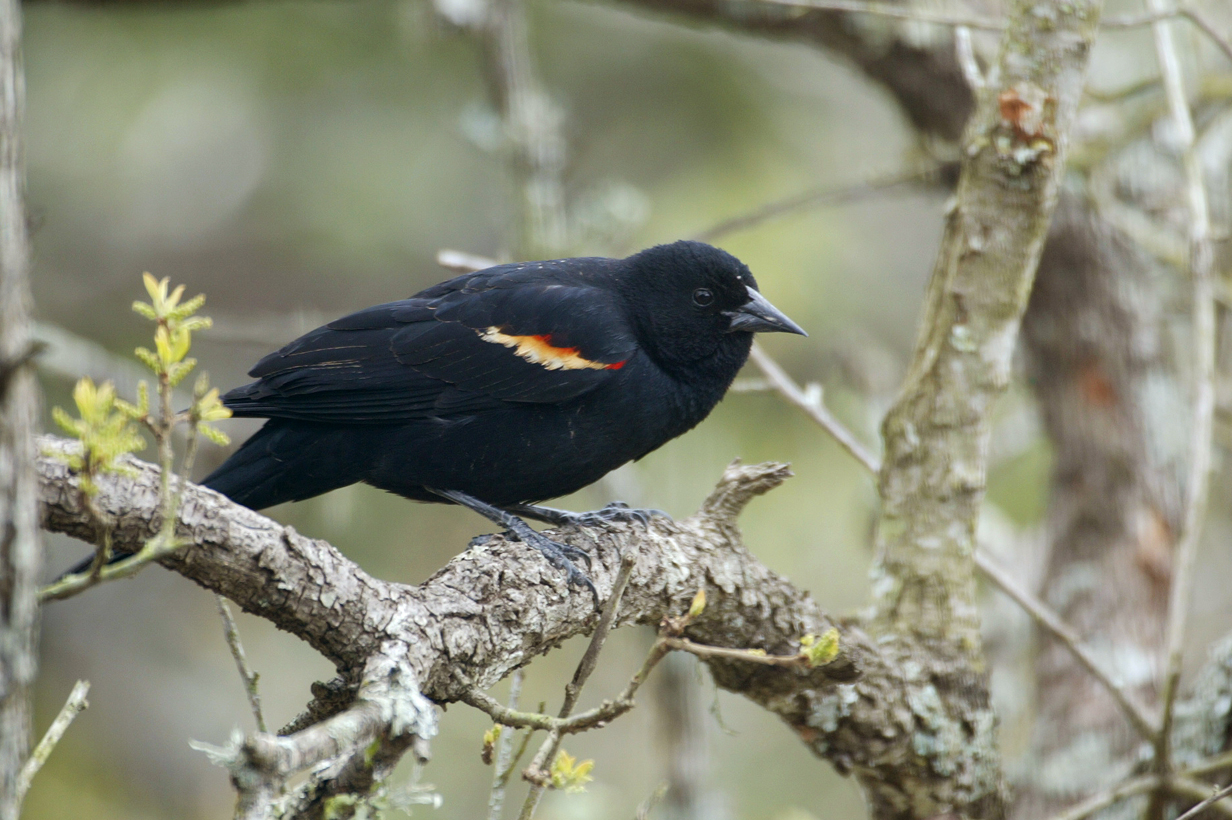
Red-winged blackbird (fairly common spring migrant; breeding resident a few miles away)

Brown-headed cowbird (regular during Spring migration: March 24, 2021)
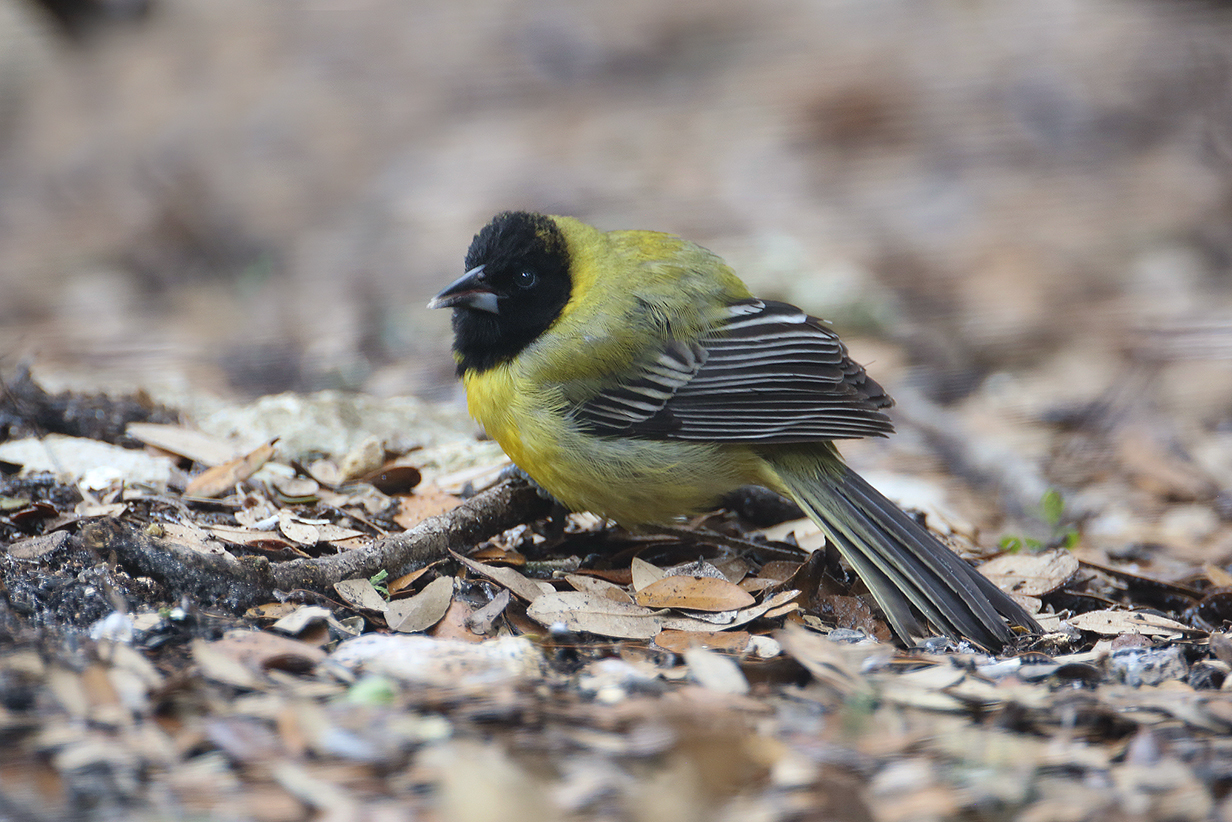
Audubon's oriole (February 13, 2021: House bird and Mary's life bird -- we never expected this tropical species at the start of the 2021 historic cold spell.)
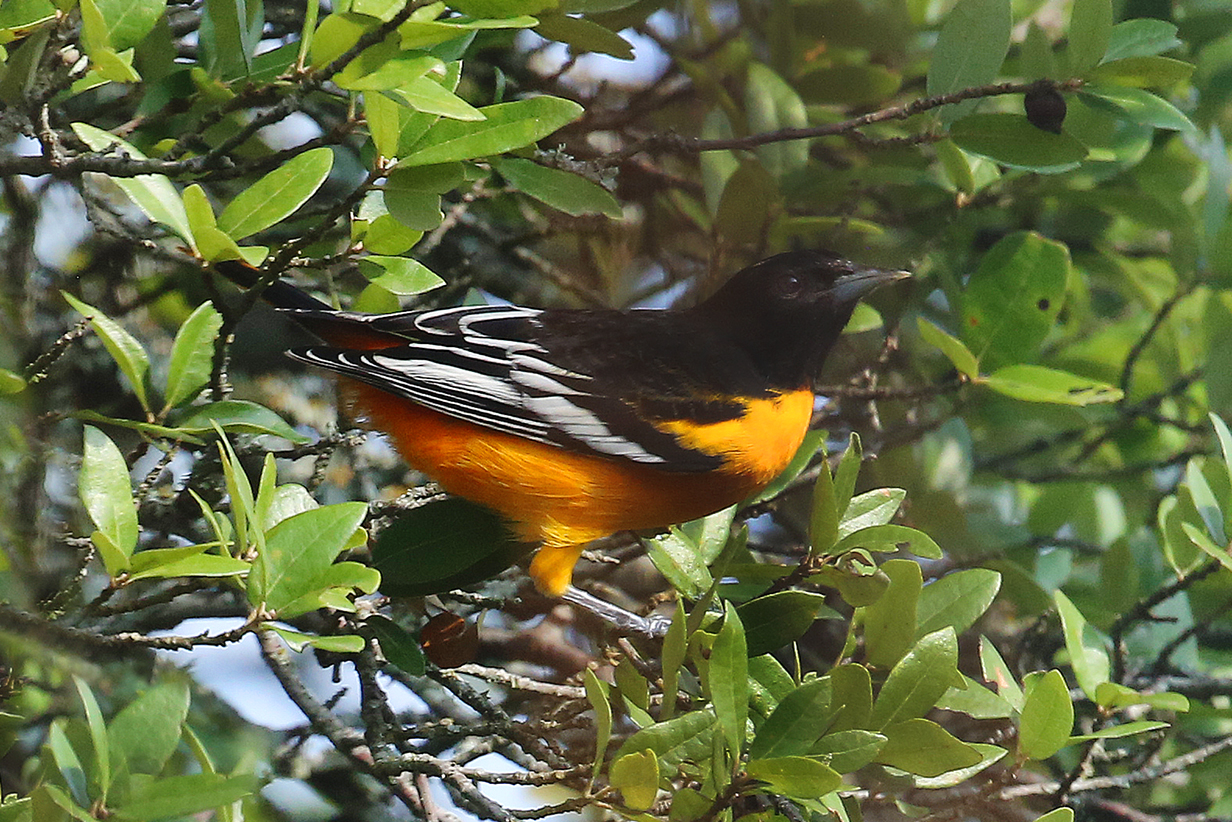
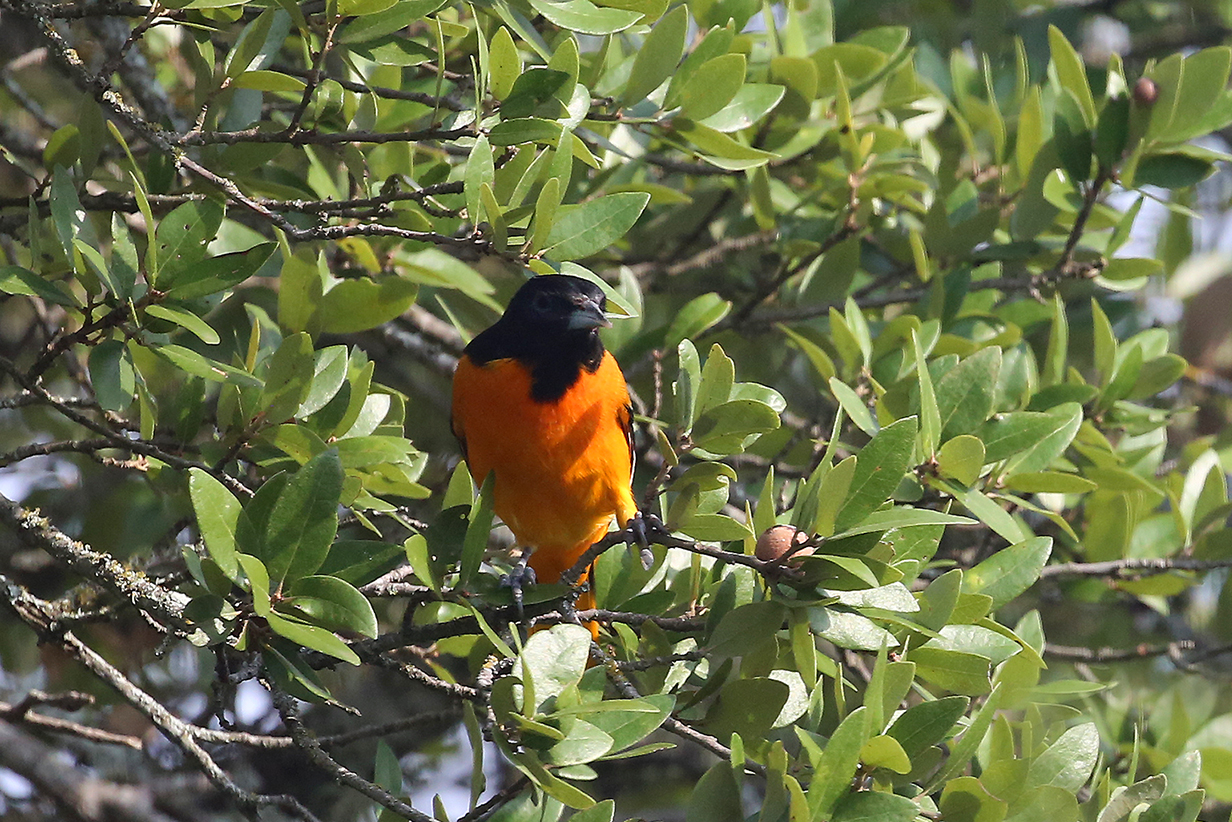
Baltimore oriole (male) (Occasional during migration; this one came in fall 2020. Also in 2020, several female and/or young Baltimore orioles came through during fall migration.)
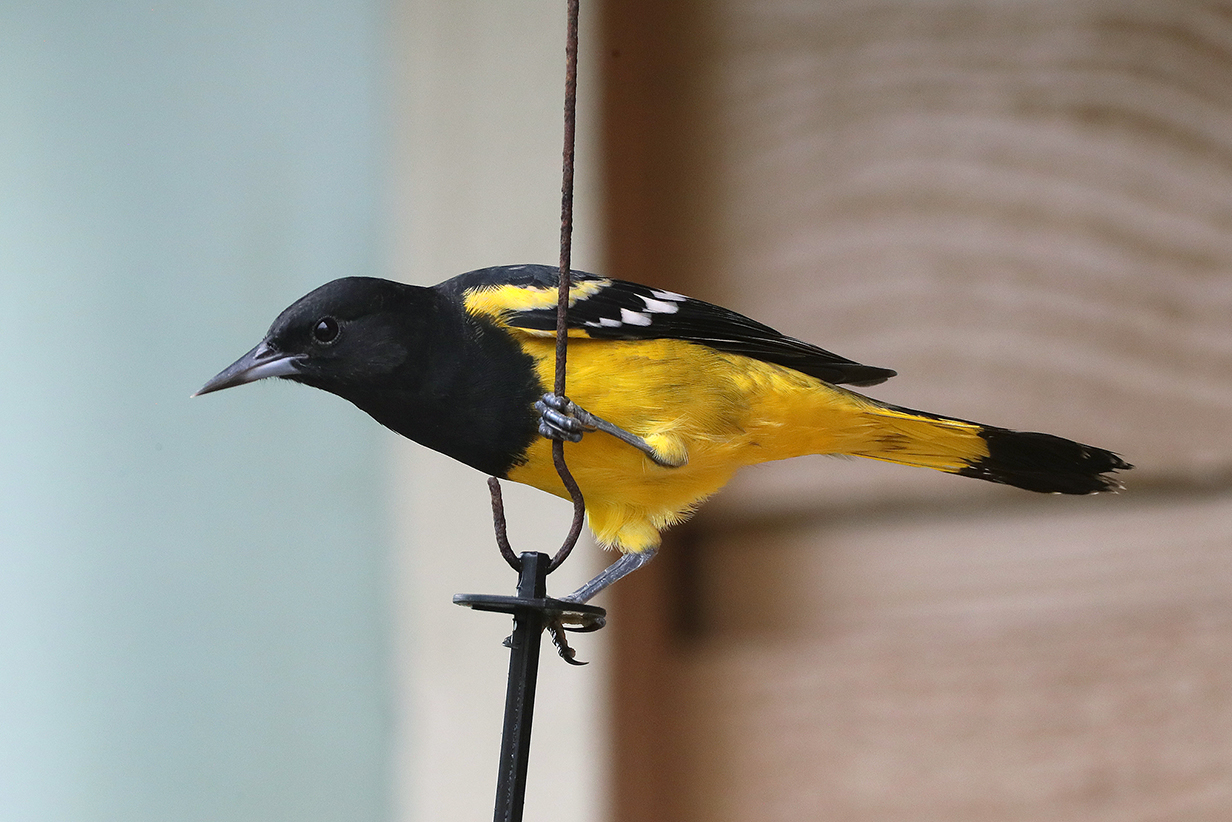
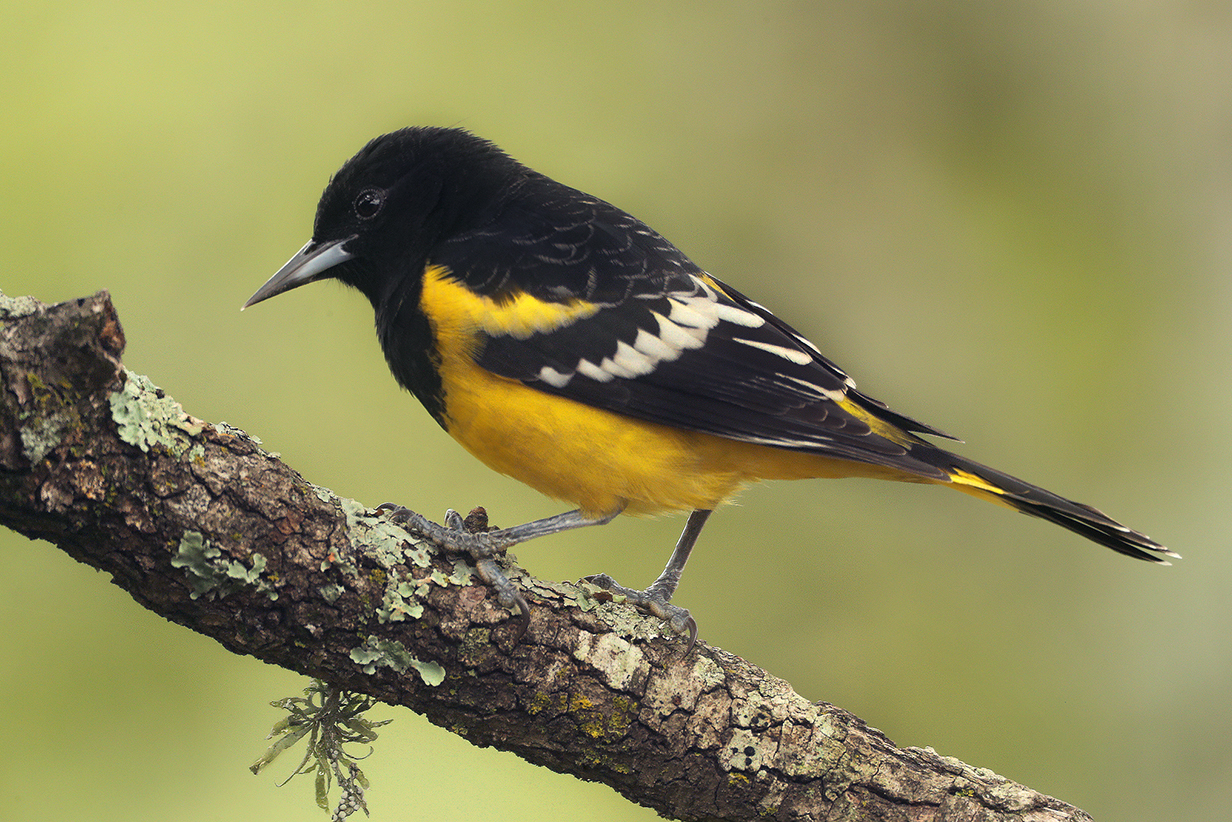
Scott's oriole (male) (breeding resident most years)
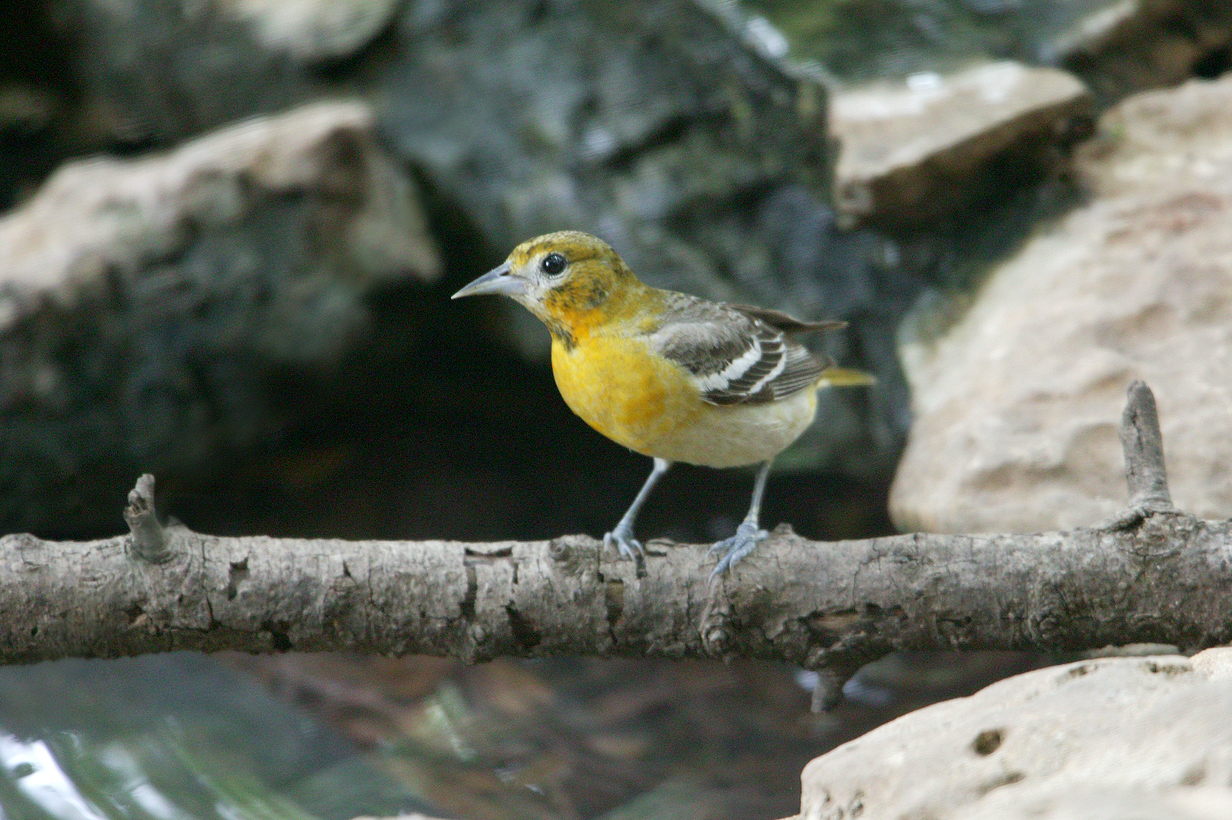
Scott's oriole (female) (breeding resident most years)
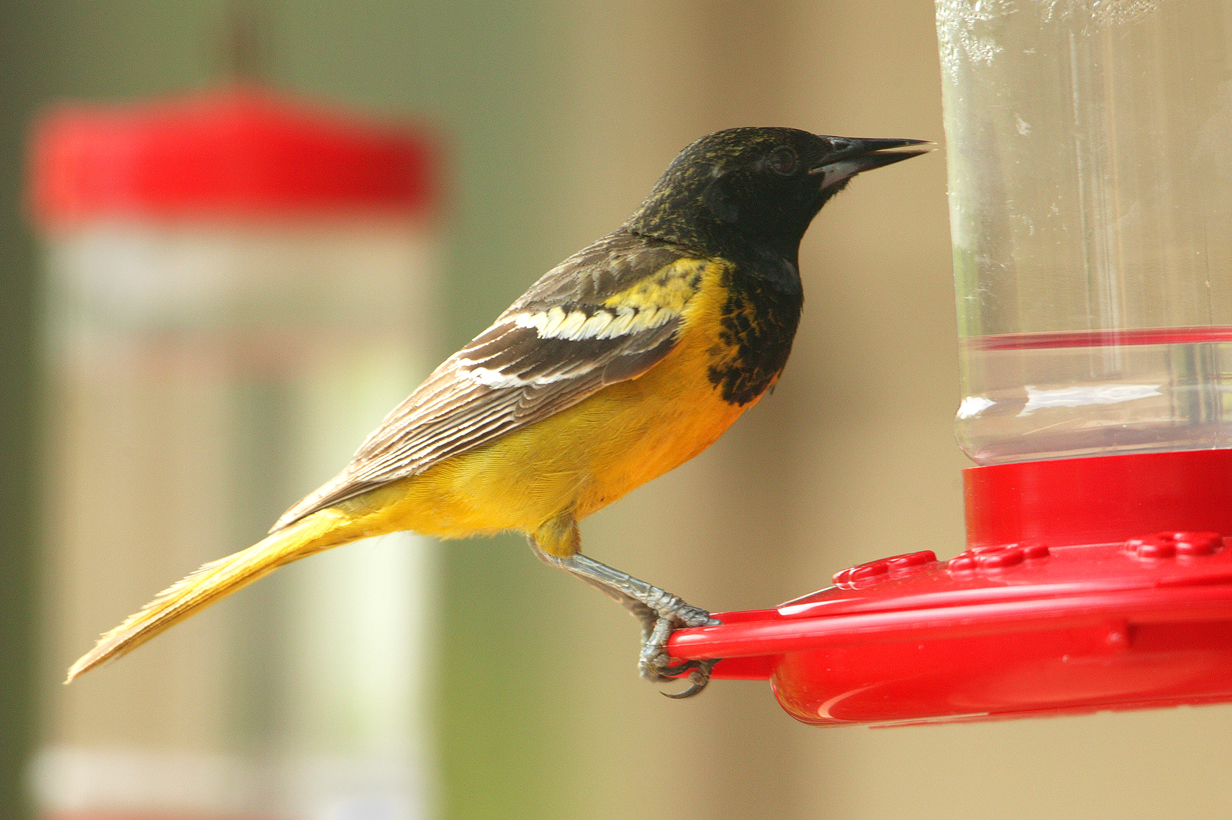
Scott's oriole (juvenile male)
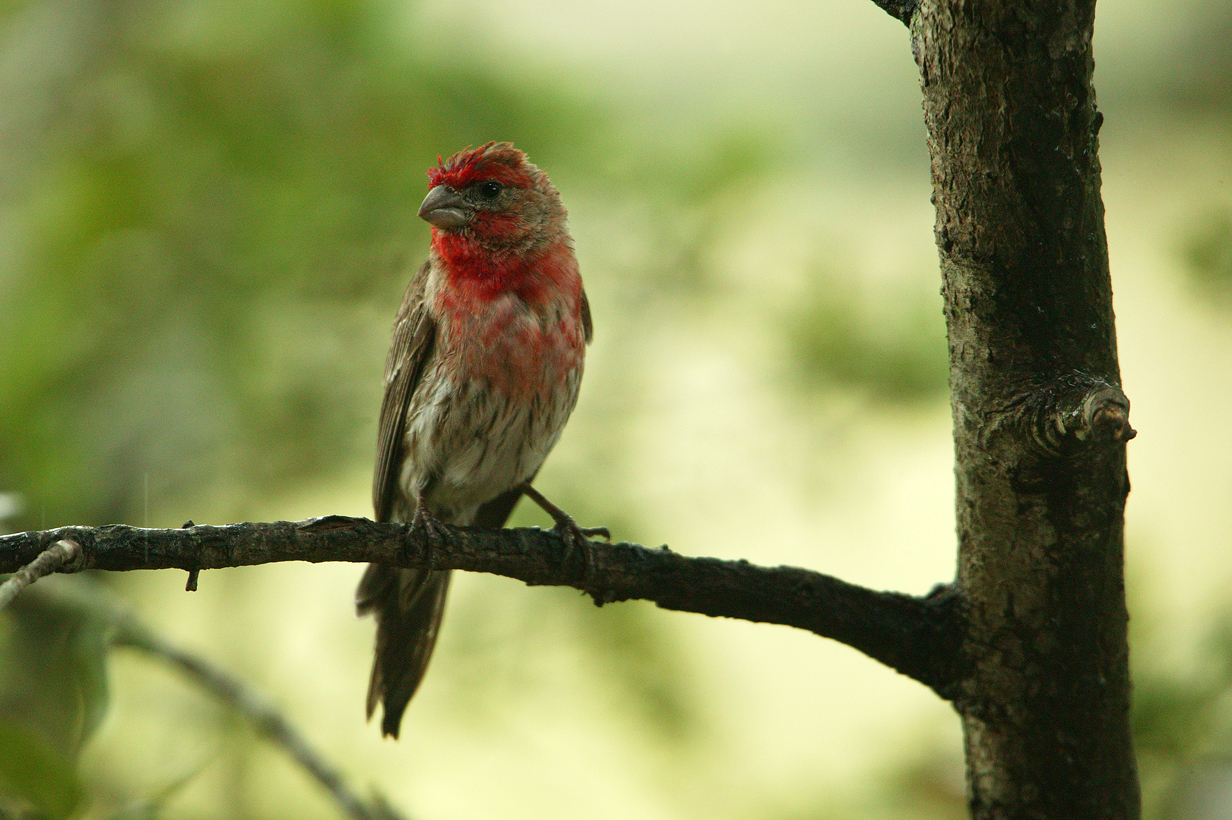
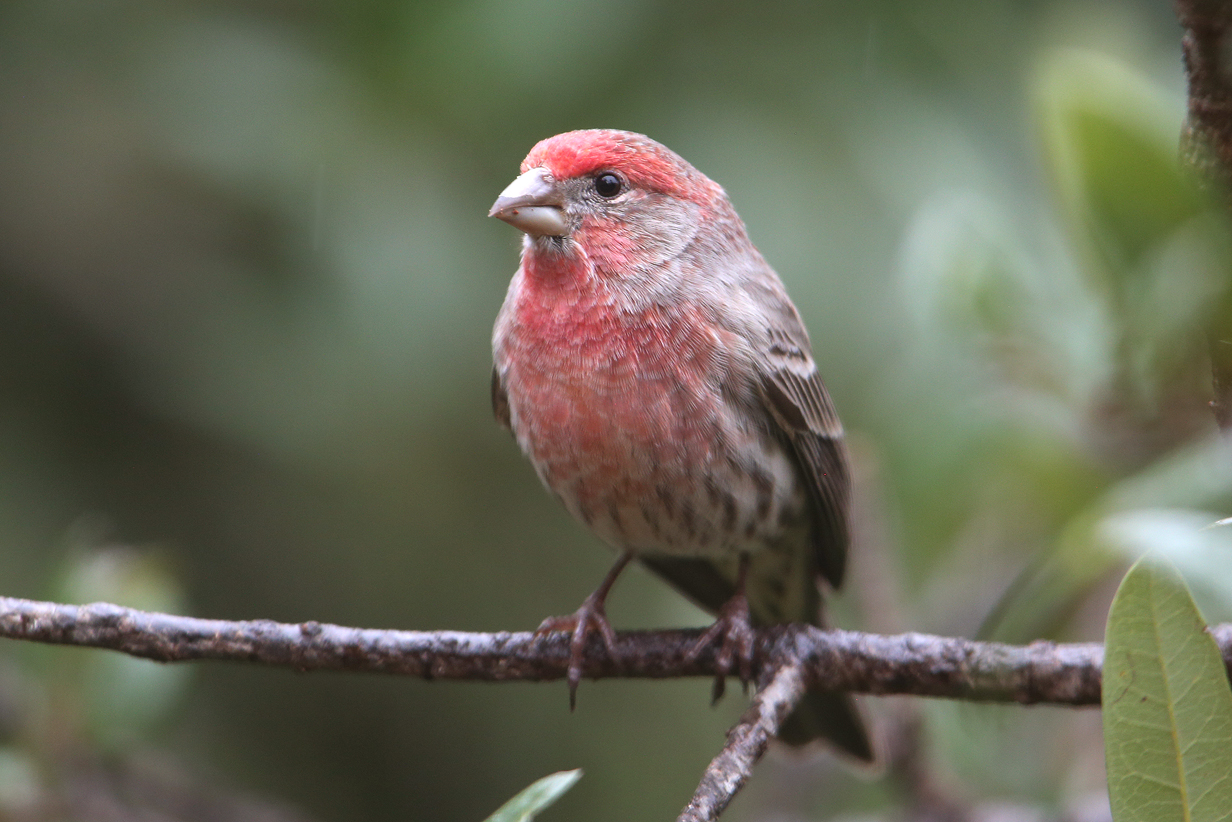
House finch (breeding resident males)
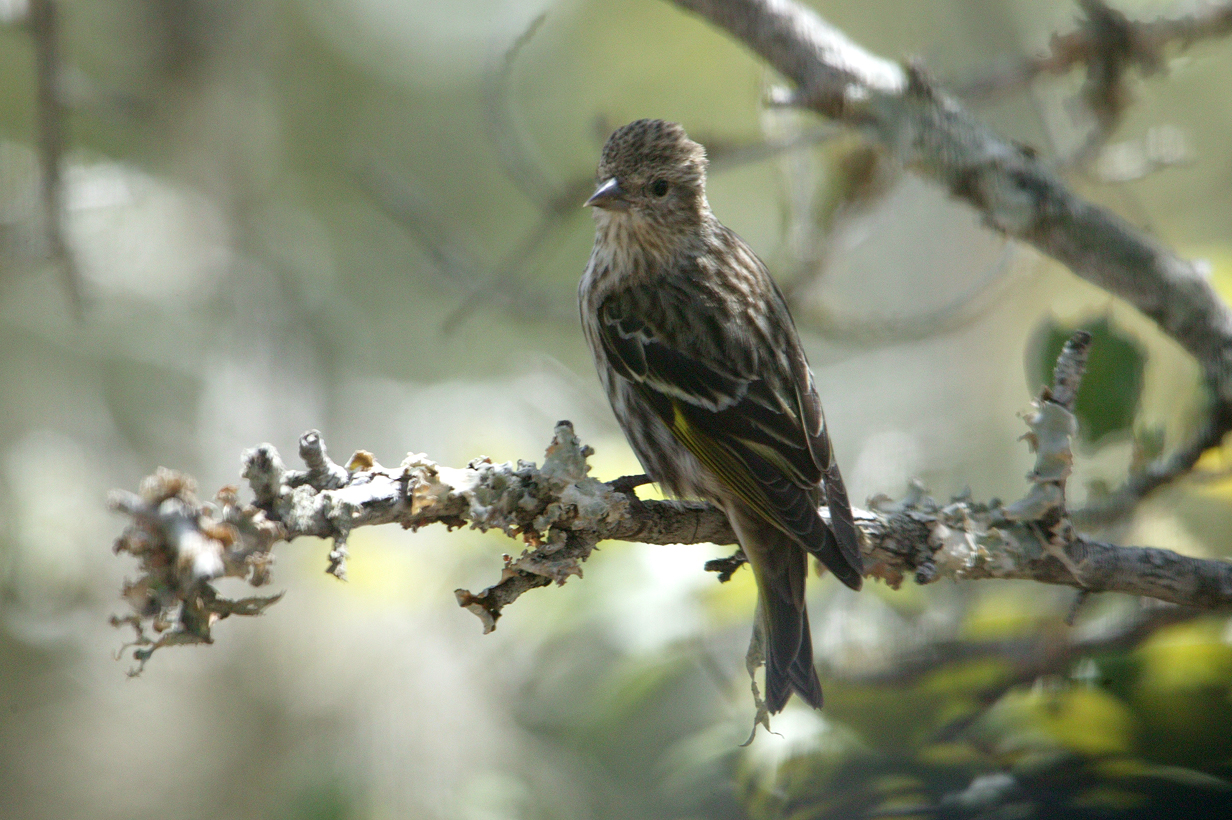
Pine siskin (winter resident -- sometimes we have more than 100)
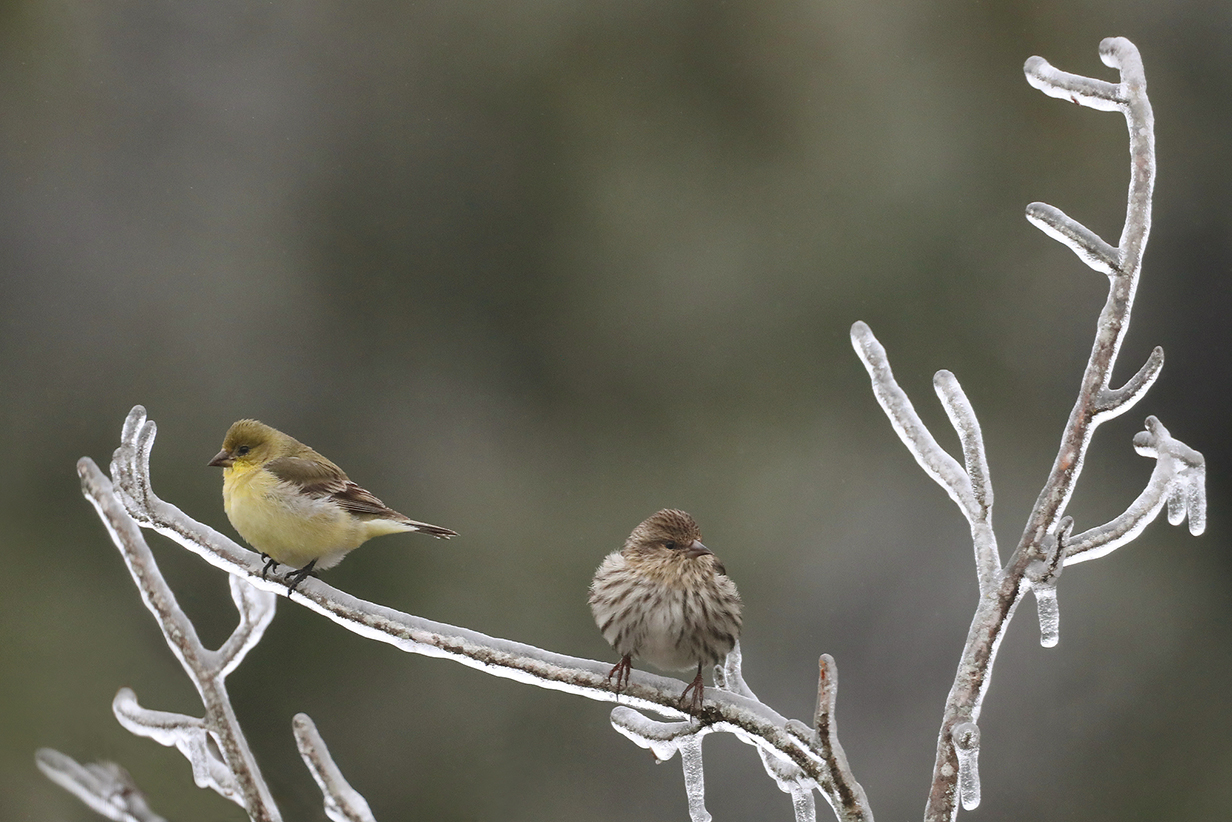
Pine siskin (right) and female Lesser goldfinch (left, during the 2021 historic cold spell)
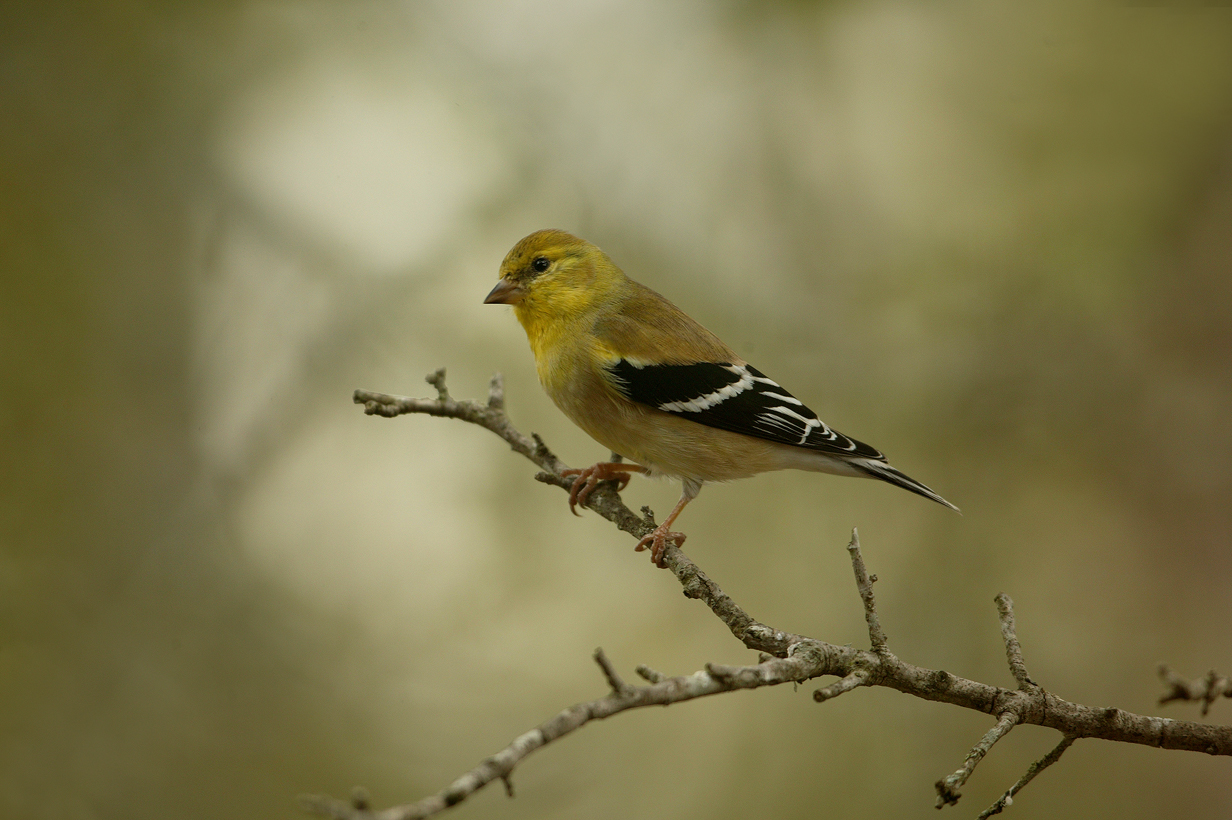
American goldfinch (Sporadic winter resident -- some years, we have dozens; other years, only a few show up all winter.)
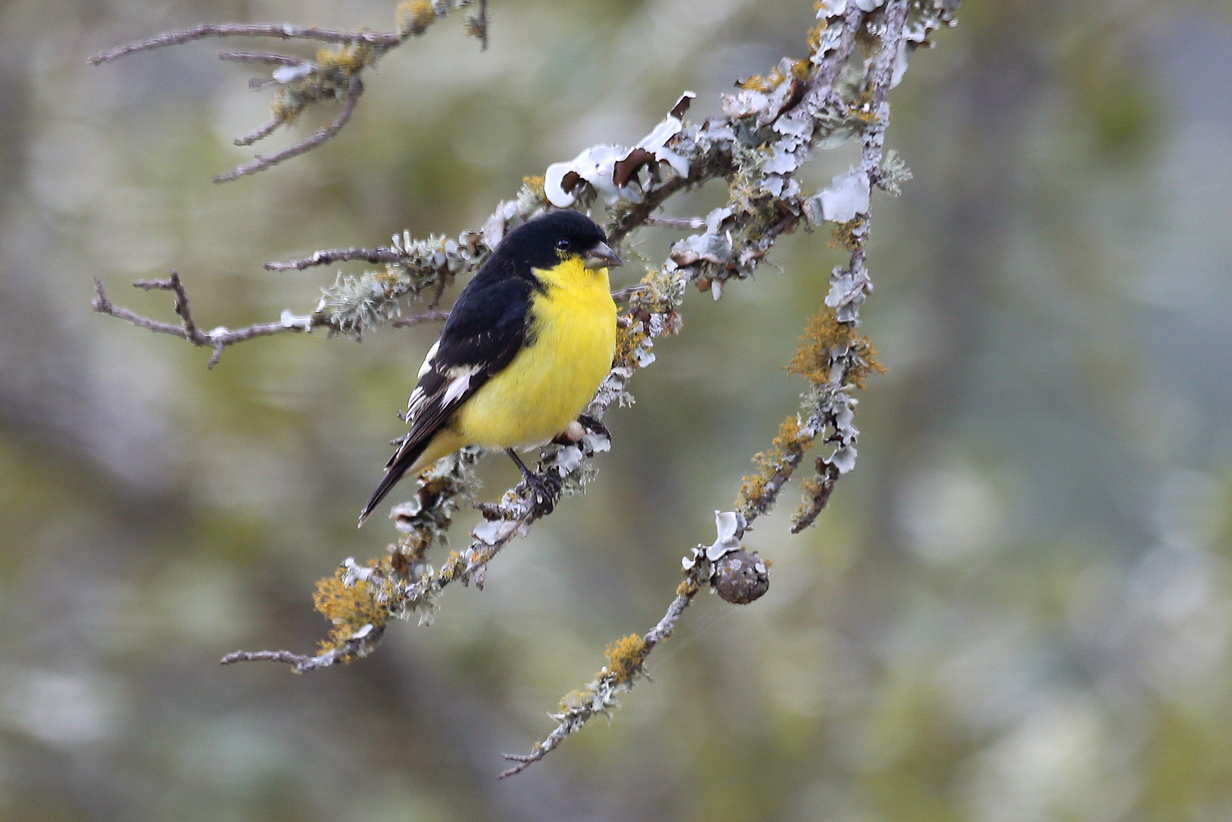
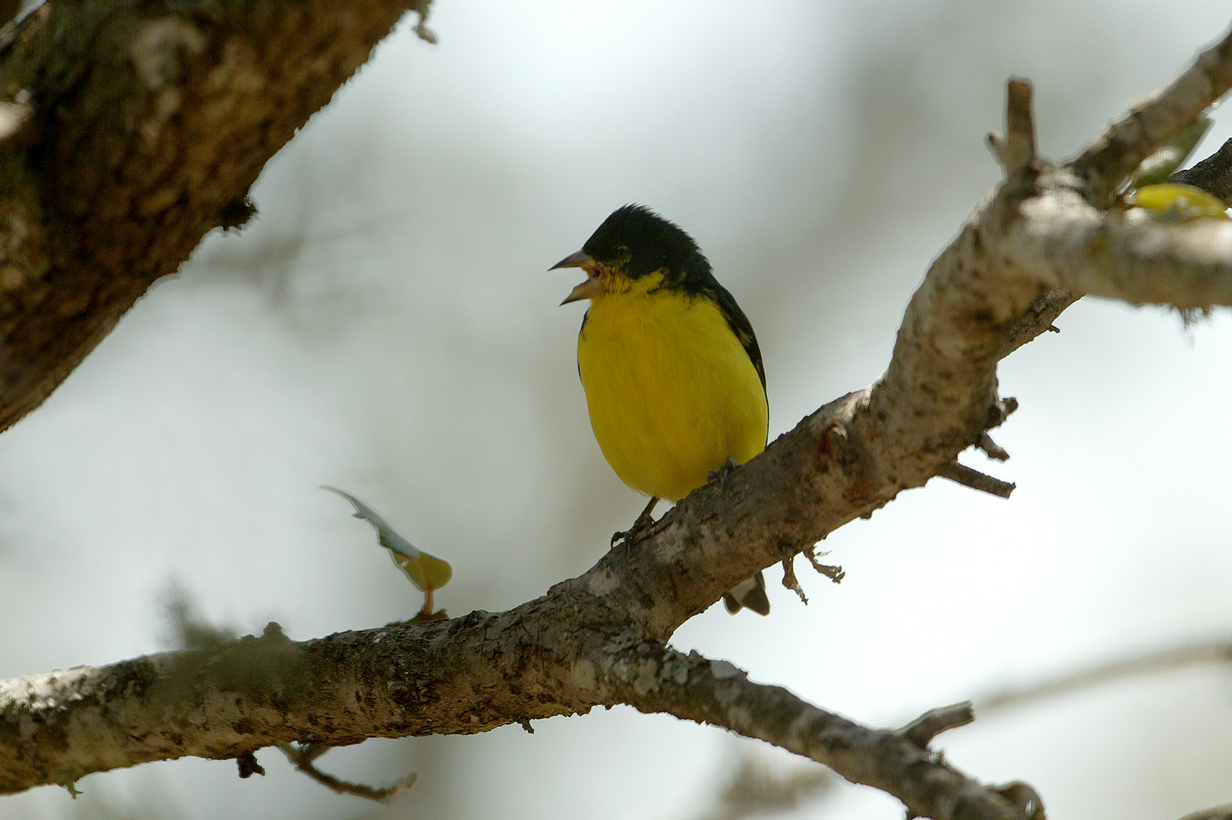
Lesser goldfinch (intermittent resident; breeding resident many summers, especially in 2020; numerous in winter)
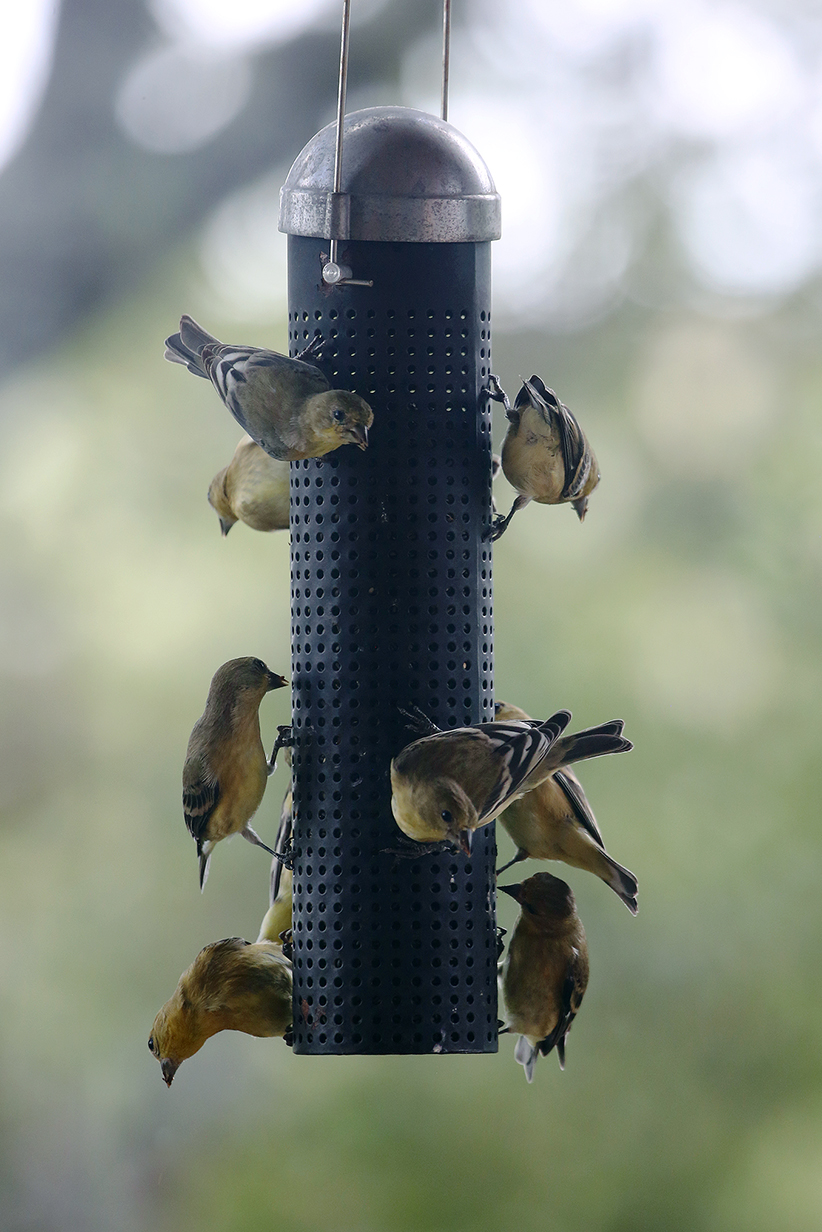
Lesser goldfinch have nested at our house in good numbers in summer 2020. They love niger seed feeders. All nine birds here are females or juveniles.
In addition to deer, we have many other mammals. For example:
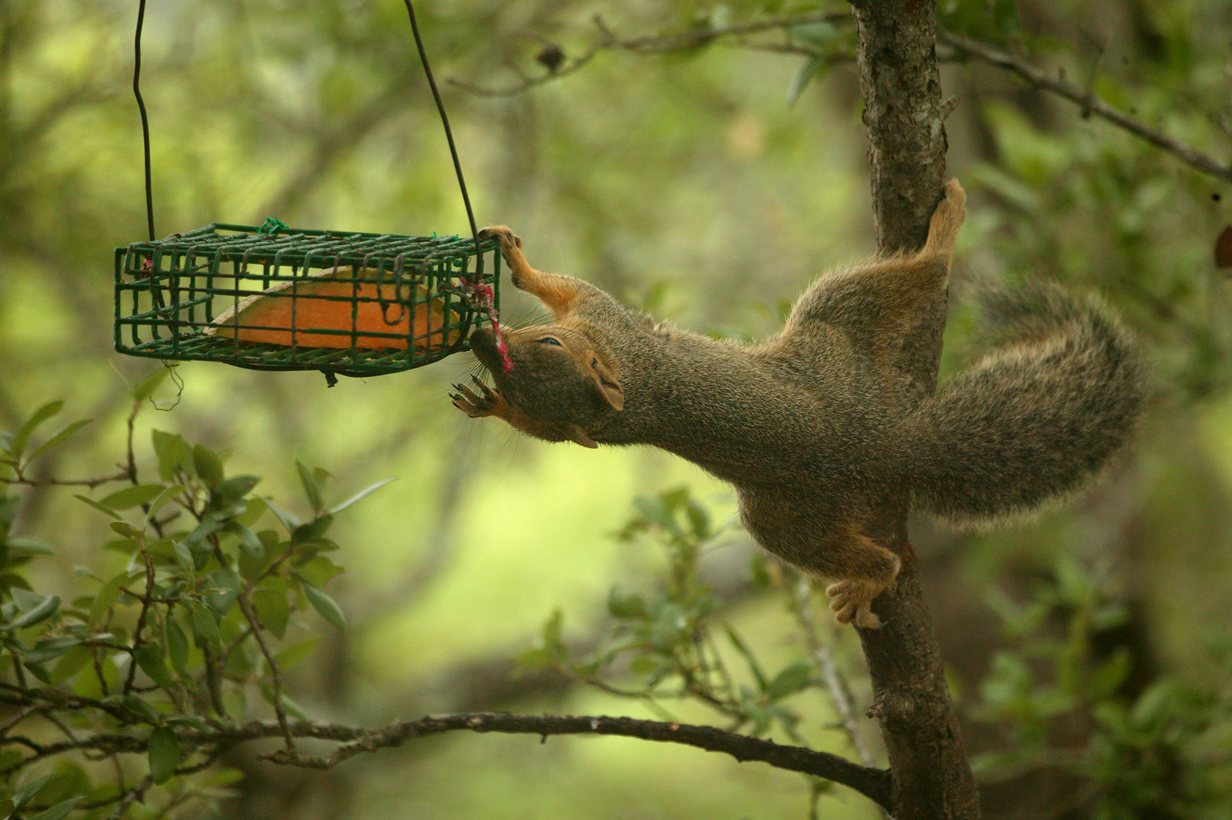
Squirrels are ubiquitous and fiendishly clever at stuffung their faces.
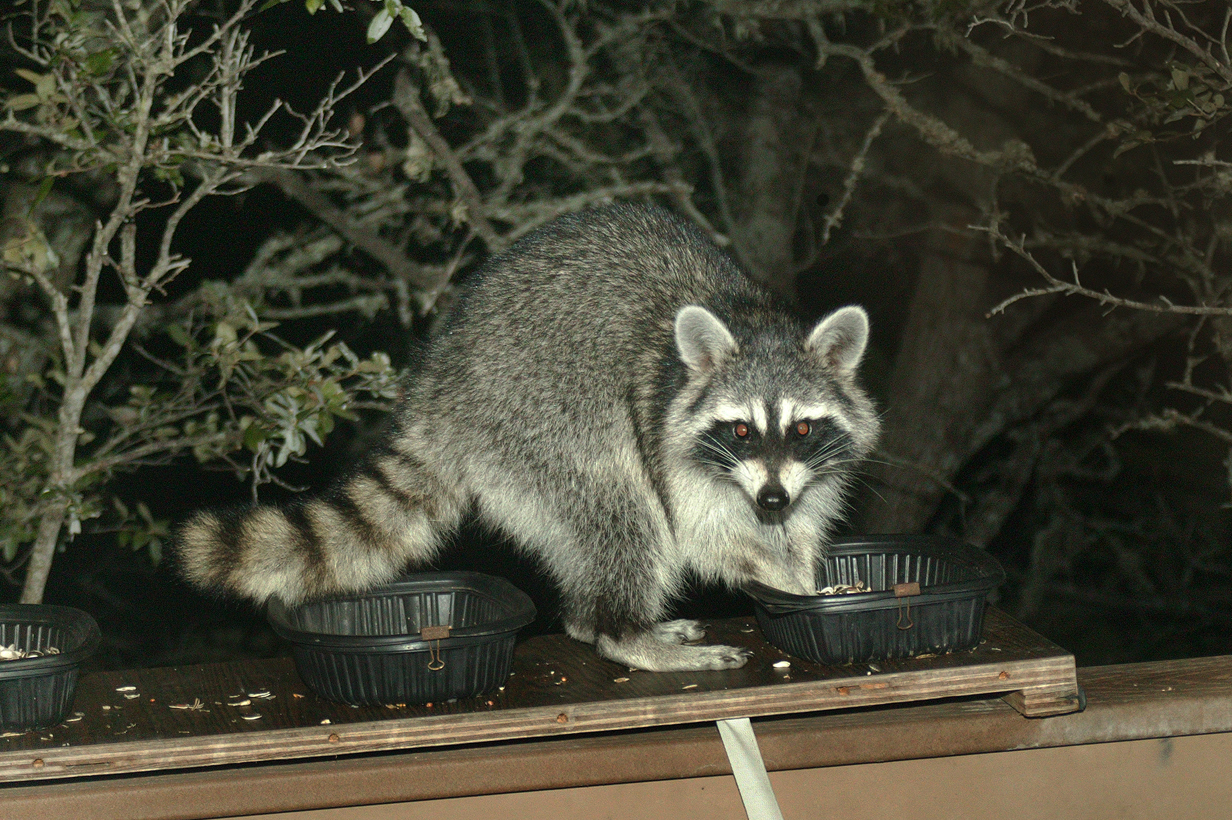
Racoons are common all year.
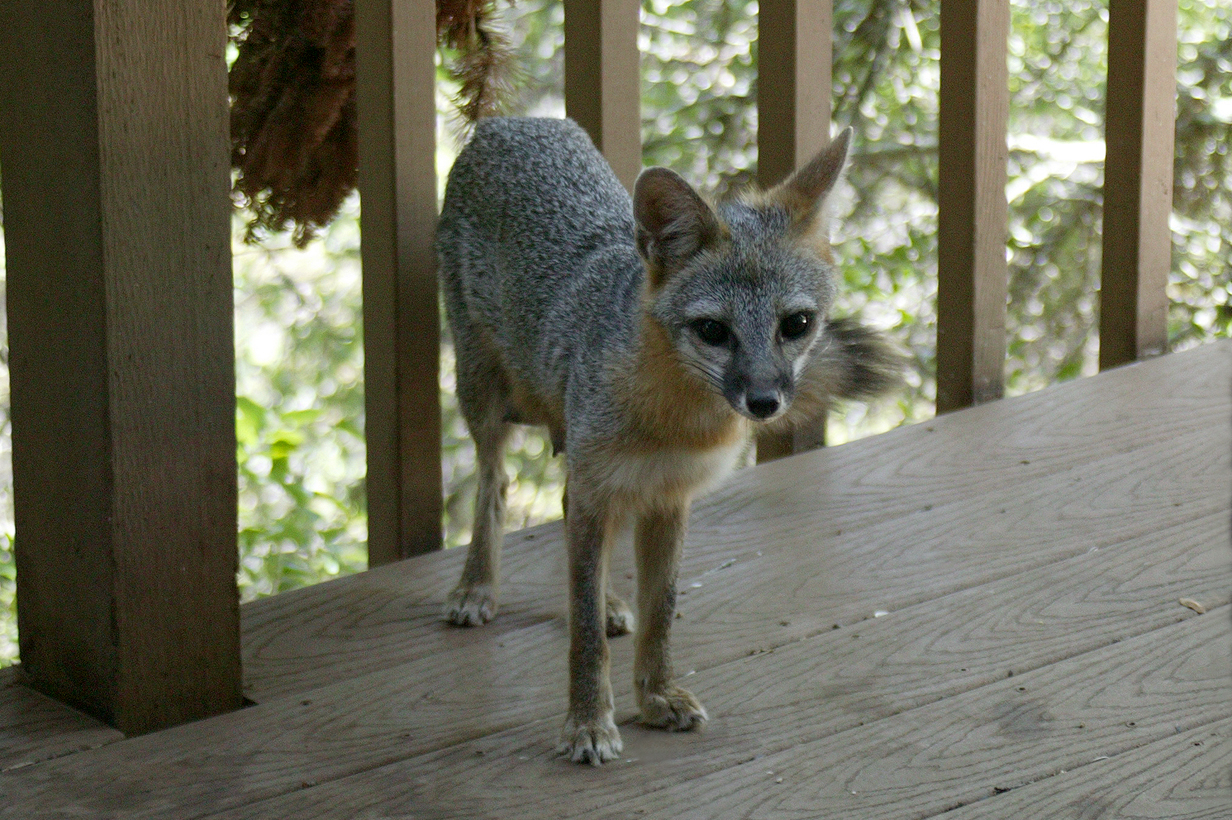
We have at least three generations of foxes. This is the matriarch.
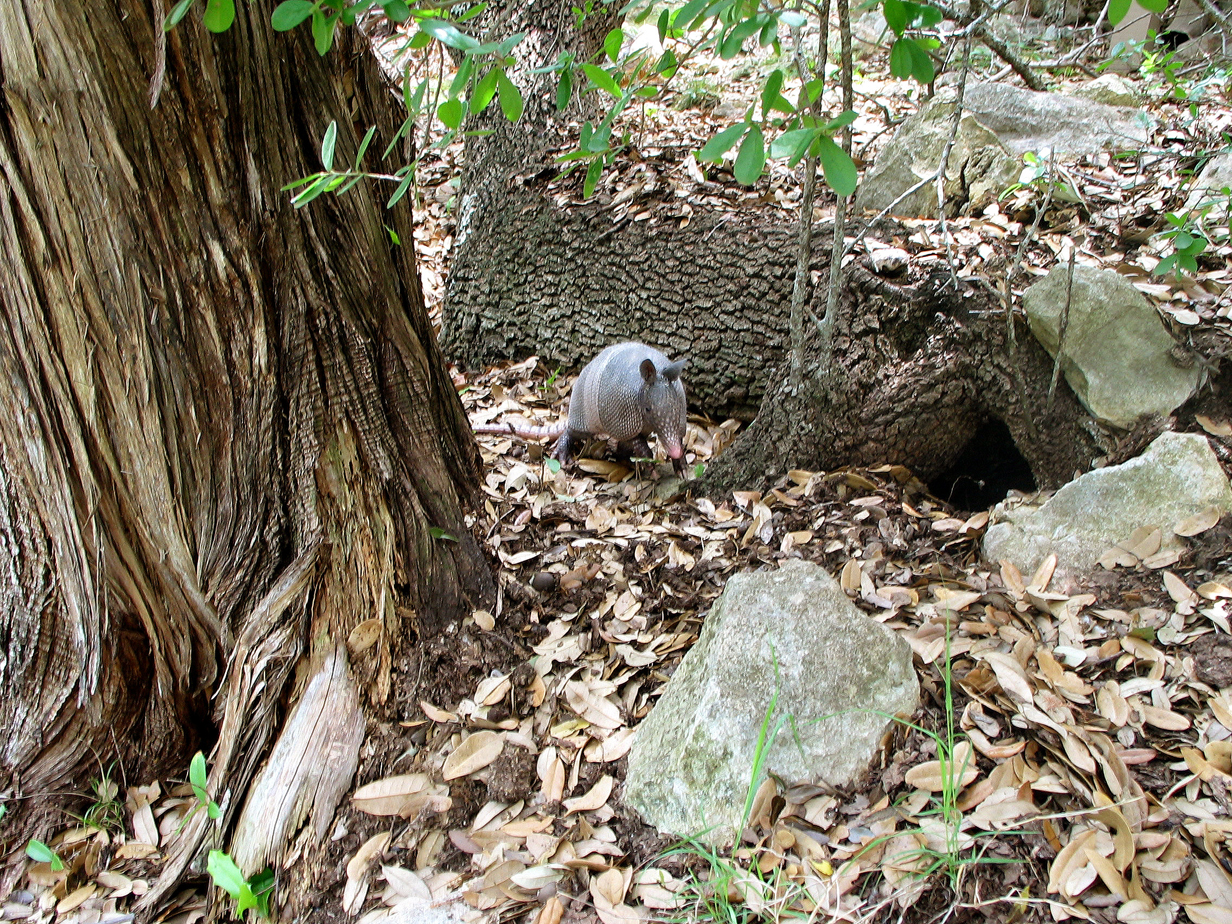
The iconic Armadillo is always resident but shows up at the house only occasionally.
In
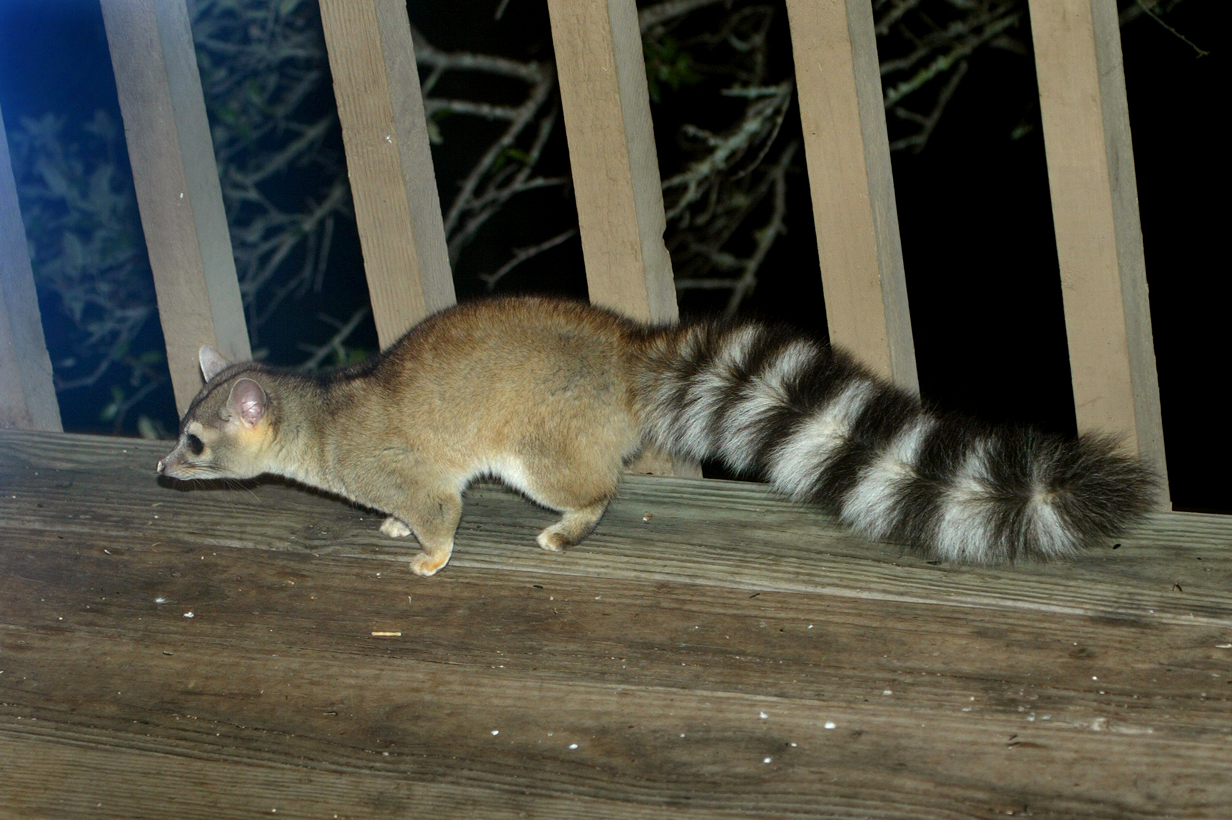
Ring-tailed cats are our classiest visitor. They come only rarely but then usually stay for several weeks. They dance throught the trees like ballerinas -- they look graceful and weightless.

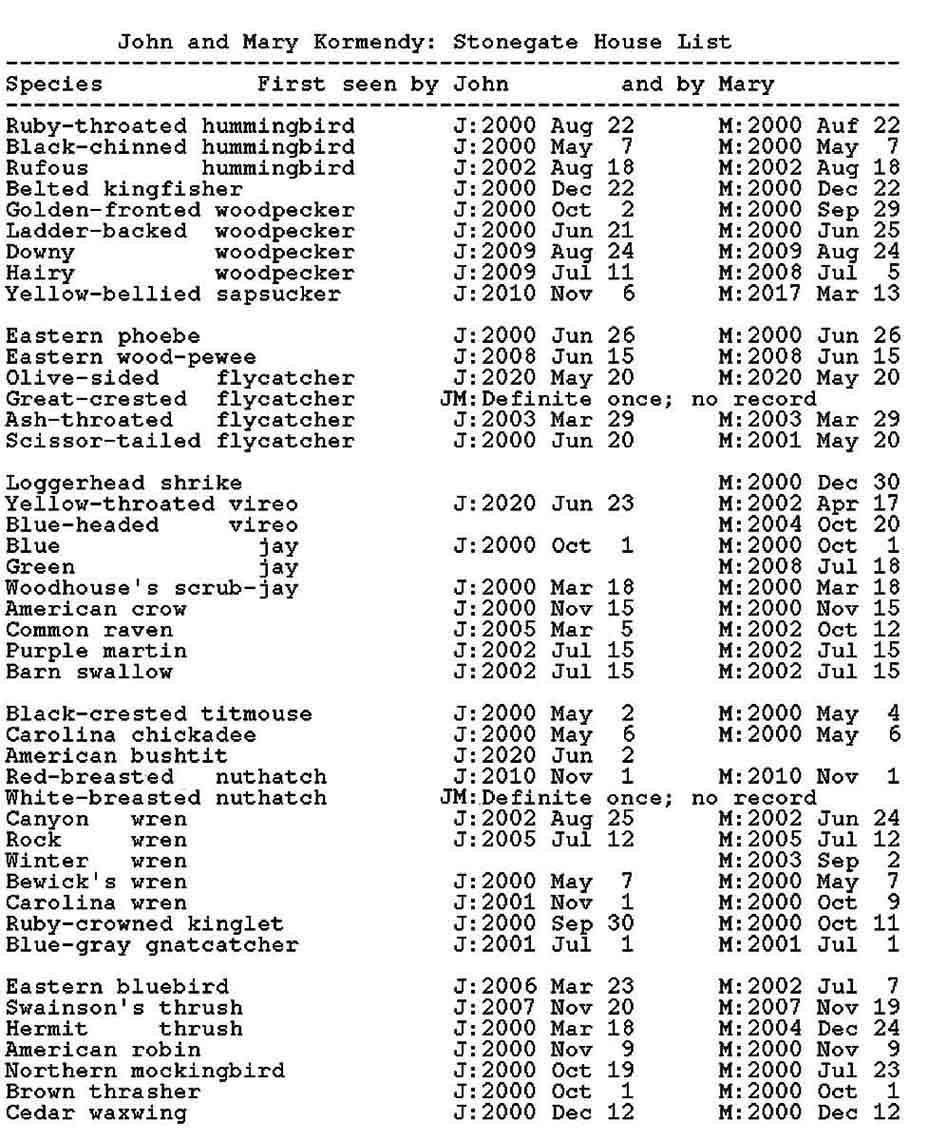
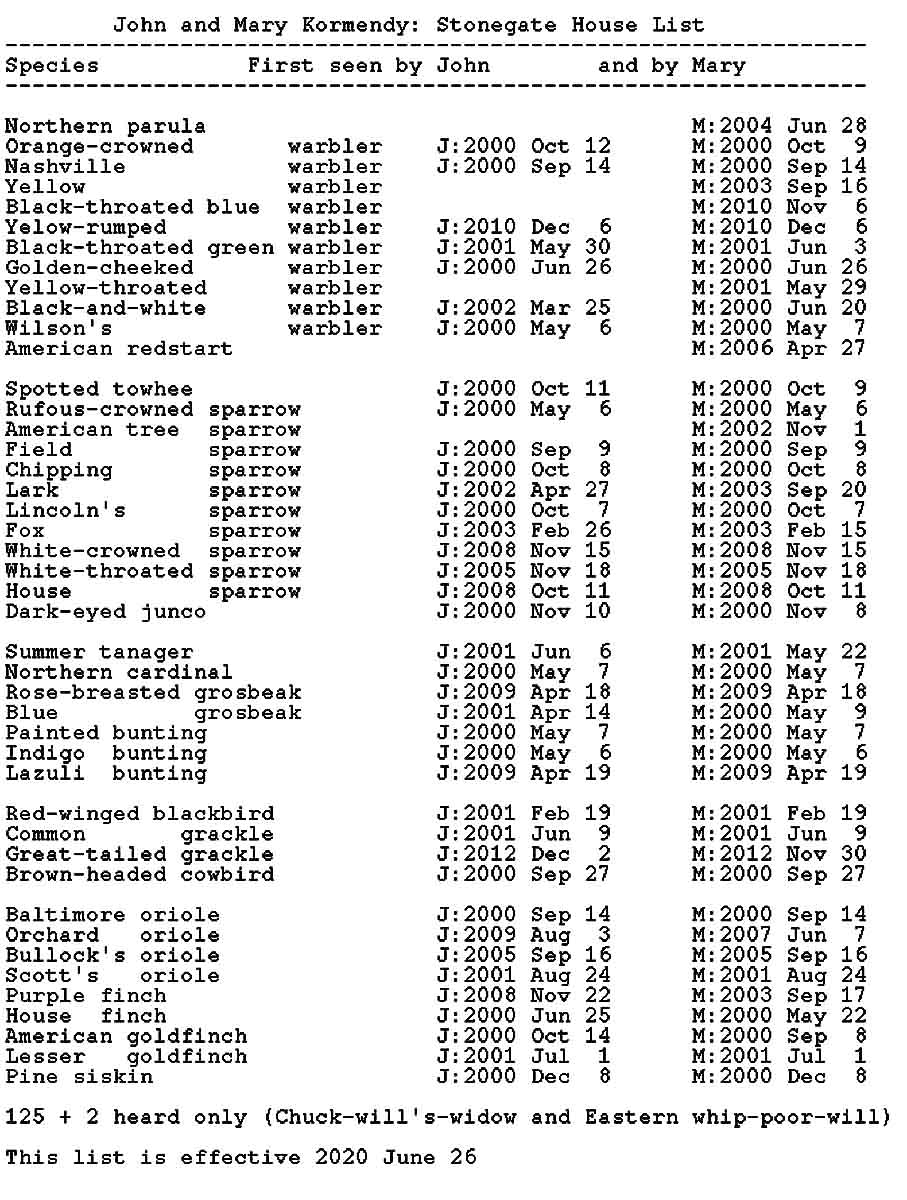
Our bird pictures from around the world follow standard ecozones approximately but not exactly:
Birds from the USA and Canada: our house, Hornsby Bend and greater Austin, Texas, California, Hawaii, Canada,
Neotropic birds from Central America and the Caribbean: Honduras, Costa Rica, Panama, Trinidad and Tobago
Neotropic birds from South America: Ecuador 2004, Ecuador 2017, Brazil.
Western palearctic birds: Europe: Germany, Finland, Norway, Europe: United Kingdom, Europe: Spain, the Canary Islands, Europe: Lesbos, Greece, Israel
Eastern palearctic birds: China
Birds from Africa: The Gambia, South Africa
Indo-Malayan birds from India: North-west (Delhi, Uttar Pradesh, Uttarakhand) India: North-east (Assam, Arunachal Pradesh, Meghalaya) India: Central (Maharashtra, Madhya Pradesh)
Birds from Australia, New Zealand.
For our 2014 December trip to India, see this travelog.
For our 2016 May-June trip to India, see this travelog.
For our 2017 April trip to High Island, Texas, see this web site.
For our 2018 March trip to India, see this travelog.
For our 2018 May trip to China, see this travelog.
For our 2018 November trip to China, see this travelog.
For our 2019 April trip to High Island, Texas, see this web site.
For our 2019 July trip to China, see this web site.
For our 2021 April trip to High Island, Texas, see this web site.
For our 2021 December trip to Ecuador, see this web site.
For our 2022 January-February trip to Peru, see this web site.
For our 2022 July-August trip to Australia and Papua New Guinea, see this web site.
For our 2022 September trip to Bolivia, see this web site.
For our 2022 November-December pre-trip to Argentina (before our Antarctic cruise), see this web site.
For our 2022 November-December cruise to Antarctica, see this web site.
For our 2023 January birding in Chile, see this web site.
For our 2023 January-March cruise from Chile to Antarctica and around South America to Miami, FL, see this web site.
For our 2023 March-April birding in south Florida (after the Seabourn cruise), see this web site.
For our 2023 November-December birding to Sri Lanka, the Andaman Islands, and South India, see this web site.
For John's 2024 February-March birding in Colombia, see this web site.
For our 2024 May-June cruise from Iceland to Jan Mayen Island to and around the Svalbard Archipelago, see the present web site.
For our 2024 June 25-30 stay in Paris, see this web site.
For our 2025 April 21 - May 3 trip to High Island, Texas, see this web site.